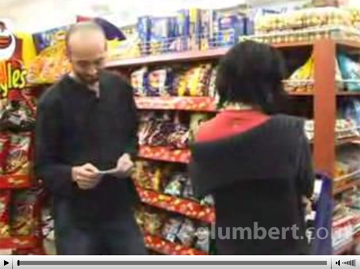July 06, 2007
[iDC] City as Social Network: Eric Gordon
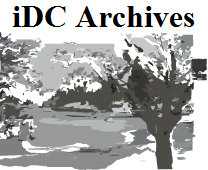
Participation Equals Surveillance
Hi everyone. My name is Eric Gordon – I’ve been watching this list for some time but I’ve made only a few contributions. Perhaps as a means of forcing my involvement, Trebor has asked me to moderate a discussion on the topic that has lately occupied most of my time – place-based social media and its implications for privacy, public space, and democratic engagement.
Following the recent conversation about Feedburner, I want to consider how that discussion might extend to physical communities (neighborhood, organization, city) that are enabled / bolstered / fortified by social web media. Many community groups and neighborhood organizations are using digital networking technologies to foster community interaction (http://www.ibrattleboro.com/). And of course, what is widely known as citizen journalism plays into this as well – placebloggers and Community Media organizations tend towards hyperlocal networked content (http://www.cctvcambridge.org/) with an aim towards reinforcing existing geographical connections.
The processes that bind non-geographical communities in networks are similar to those that are binding geographical communities – shared interests, practices, goals, etc. However, unlike traditional online communities that have a basis in anonymity, digitally annotated physical communities often rely on the full disclosure of identity for their functionality. For instance, when it comes to neighborhood issues – it is important to know one’s real name and location.
And as city governments are seeking ways to adopt “web 2.0” technologies into their existing “citizen management” projects, the lack of anonymity and the simple traceability of social actions open up new concerns. Social media tools have the capacity to significantly expand participation in local governance, but they also have the capacity to trace citizen behavior and map social trends. Cities are interested in this technology for the same reason that corporations are – it offers valuable user data. Politicians can survey the concerns of their constituency; agencies can identify problems in neighborhoods; and law enforcement…well, there are many scenarios possible. It can also be turned around: citizens can have greater access to their politicians, and government proceedings can at least have the impression of transparency.
While the conversations on this list have devoted considerable time to corporate surveillance, the question not often asked in this context is what should be made of local surveillance – from the people in one’s neighborhood to city governments? In the wake of connectivity, discourse and collaboration, there is always documentation, processing and interpretation. From neighborhood chatrooms to local annotated mapping projects to virtual town hall meetings, participation equals surveillance – for better or for worse.
When I consider a digital future in which I want to live – it includes networked access to my neighborhood services, communities, city government and public spaces. However, there is little possibility for that to take place outside of the proliferation of data that would make communities vulnerable to excessive internal and external management. And as citywide wifi and mobile web devices proliferate, the outlets for that recycled data expand. At the same time, American cities, like corporations, are glomming onto digital media because of its populist resonances. They are paying attention to online neighborhoods and seeking to aggregate that data into meaningful information. The ideology of digital media – as evidenced in the phrases “participatory media” and “user-generated content” – is accessibility. Digital media directly aligns the rhetoric of progress with the rhetoric of populism. Social web media makes explicit what has only been implied in the recent rhetoric of city governments – that anyone, regardless of social position, can participate in the ordering of city experience and politics.
From cities to towns to neighborhoods, the populist promise of social web media is transforming the nature of public space and civic participation. I am referring only to the American context, because that’s what I know, but it would be great to engage in comparative dialogue in order to better understand the scope of how these technologies are being implemented in official or unofficial capacities to change perceptions of cities and city life, not to mention public space and community engagement.
I suppose I’ll leave it at that for now. I look forward to the conversation.
Eric
iDC -- mailing list of the Institute for Distributed Creativity iDC[at]mailman.thing.net http://mailman.thing.net/cgi-bin/mailman/listinfo/idc
List Archive:
http://mailman.thing.net/pipermail/idc/
iDC Photo Stream:
http://www.flickr.com/photos/tags/idcnetwork/
Posted by jo at 11:13 AM | Comments (0)
May 23, 2007
Electronic Lens
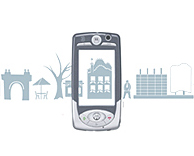
Annotating for Civic Engagement
The Electronic Lens explores and creates new paradigms of civic ubiquitous networking with mobile technologies. We think of Electronic Lens as something of a viewfinder. Using a motion that is already familiar (think point and shoot camera phones), the citizen can use the eLens to gather information about physical objects and places.
The eLens matches electronic information with the physical environment in an innovative way. For example, eLens users can post lasting messages in physical locations, tag buildings and places, or create social networks based on interest and social affinities. eLens interactions combine the physical environment with formal and institutional information and the annotations from users’ personal experiences.
Ultimately the eLens enhances the value of the city for its citizens by making their environments more accessible, more culturally vibrant, more socially just. The eLens fosters communication among people and between institutions; as a result citizens are now better able to navigate the social, institutional and physical urban space.
Posted by jo at 08:38 AM | Comments (0)
May 11, 2007
Sherry Turkle
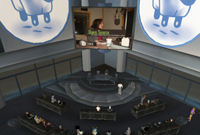
Can You Hear Me Now?
"Thanks to technology, people have never been more connected--or more alienated.
I have traveled 36 hours to a conference on robotic technology in central Japan. The grand ballroom is Wi-Fi enabled, and the speaker is using the Web for his presentation. Laptops are open, fingers are flying. But the audience is not listening. Most seem to be doing their e-mail, downloading files, surfing the Web or looking for a cartoon to illustrate an upcoming presentation. Every once in a while audience members give the speaker some attention, lowering their laptop screens in a kind of digital curtsy.
In the hallway outside the plenary session attendees are on their phones or using laptops and pdas to check their e-mail. Clusters of people chat with each other, making dinner plans, "networking" in that old sense of the term--the sense that implies sharing a meal.
But at this conference it is clear that what people mostly want from public space is to be alone with their personal networks. It is good to come together physically, but it is more important to stay tethered to the people who define one's virtual identity, the identity that counts. I think of how Freud believed in the power of communities to control and subvert us, and a psychoanalytic pun comes to mind: "virtuality and its discontents."
The phrase comes back to me months later as I interview business consultants who seem to have lost touch with their best instincts for how to maintain the bonds that make them most competitive. They are complaining about the BlackBerry revolution. They accept it as inevitable, decry it as corrosive. Consultants used to talk to one another as they waited to give presentations; now they spend that time doing e-mail. Those who once bonded during limousine rides to airports now spend this time on their BlackBerrys. Some say they are making better use of their "downtime," but they argue their point without conviction. This waiting time and going-to-the-airport time was never downtime; it was work time. It was precious time when far-flung global teams solidified relationships and refined ideas.
We live in techno-enthusiastic times, and we are most likely to celebrate our gadgets. Certainly the advertising that sells us our devices has us working from beautiful, remote locations that signal our status. We are connected, tethered, so important that our physical presence is no longer required. There is much talk of new efficiencies; we can work from anywhere and all the time. But tethered life is complex; it is helpful to measure our thrilling new networks against what they may be doing to us as people." From Can You Hear Me Now? by Sherry Turkle, Forbes.
Posted by jo at 07:12 PM | Comments (0)
May 10, 2007
Sinister
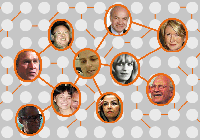
Social Networks Foster Conspiracy
Annina Rüst's Sinister "is a service based on research into software designed to identify and analyse suspicious behaviour through communication patterns rather than the content of conversations (data-surveillance). Visually, Sinister appears as a friendly social networking environment, but it suggests that social networking also fosters conspiracy. Online chat bots and automatised scoundrels (artificially intelligent characters) infiltrate chat networks and discuss seemingly common-place topics such as gardening, but occasionally include criminal harmful comments. You can telephone the bots and insert your own messages into their conversations also, using voice recognition software which looks for con-spirative content. The software then maps and interprets these online conversations, comparing diagrams to a database to determine the possible unfriendly uses people might have for the online social network. In the gallery-based installation, the seats represent the nodes in the social network – by moving the seats around as you join into conversation with your fellow visitors, the computer can then draft and analyse new diagrams based on the connections in the social network you create." Part of MY OWN PRIVATE REALITY: GROWING UP ONLINE IN THE 90S and 00S.
Posted by jo at 01:16 PM | Comments (0)
April 09, 2007
Supermarket 2.0
Internet of Things: Where milk is commented, eggs come with rss feeds and the shelves are full of FUN. [via boingboing] [blogged by Anne on PLSJ]
Posted by jo at 02:16 PM | Comments (0)
April 02, 2007
[iDC] A critique of sociable web media
![]()
Community as Product
Perhaps this exchange could lead us to deepen our earlier debate about possibilities for a radical critique of sociable web media.
If you agree with Paolo Virno's and Maurizio Lazzaroto's theory that argues that "virtuosic performance" and "the act of being a speaker" is the new immaterial labor [of the North], then yes, the sociable web is the new "factory without walls." I, for one, don't sign off on the fucked up naturalization of the exploitation labor that is so dear to capitalism. Where are the people who care if big profits are made of their distributed creativity? Most participants are not conscious of their embrace of market-based behavior. The most central sites of the World Wide Web create massive surplus value and small startups are frequently bought out by the Walmarts of the Internet (NewsCorp, Yahoo, Google) the very moment that they attract sufficient numbers of page views. People spend most time on the sites of these giants and not in the "mom and pop stores." Almost 12 percent of all time spent by Americans online is spend on MySpace.
Nicholas Carr pointed out that forty percent of all web traffic is concentrated on ten websites (www.sina.com.cn, www.baidu.com, www.yahoo.com, www.msn.com, www.google.com, www.youtube.com, www.myspace.com, www.live.com, www.orkut.com, and www.qq.com).
Most of these sites owe their popularity to the wealth of content generated by the visiting net publics that spend significant amounts of time on these very, very few sites thus creating wealth for a handful of corporate owners. What pulls people in?
In a recent interview with Forbes Video Network, Jay Adelson (CEO of Digg.com) was asked "What's going to keep people to come back?" Adelson responded:
"Community is what really keeps people coming back. These people are passionate about what Digg has done for them. The user experience they get from being part of that community is only getting better each day."
Attention translates into concrete monetary value and community is the product. Crude offline capitalism is replicated online, much against the hopes of early cybernetics and the linked back-to-the-land, countercultural aspirations of the late 60s and early 70s that Fred Turner talks about.
The dynamic of-- being used-- may hold much less true for peripheral websites in the concentric hierarchy of the participatory web. The online "mom and pop store" has a much more benevolent ratio of participant benefits versus the company's running costs. And then there are also the two or three non-profits like Archive.org and Craig Newmark's initiatives holding up 'Fort Hope.' They are, to be sure, not dominating the read/write web.
The immaterial, "affective labor" of net publics produces data. Contributors comment, tag, rank, forward, read, subscribe, re-post, link, moderate, remix, share, collaborate, favorite, write; flirt, work, play, chat, gossip, discuss, and learn. They fill in profiles: 120 million people shared detailed personal information with NewsCorp, for example. 18 million students shared personal details in their Facebook profiles with Yahoo. They share information about their favorite music and clubs. They are not shy to list the books they are reading and the movies they are watching. They detail their sexual orientation and postal address complete with hometown, phone number, and email address. They share pictures, educational history and employment. Profiles, even if only visible to their buddies (and well, Yahoo), they list their daily schedules, general interests, and friends.
It seems obvious that all this channeled networked sociality represents monetary value. Post-dot.bomb, the Google zars would not buy a very young video website like YouTube for the price of the New York Times Company if there would not be a clear monetary value.
The dicey ethics related to property issues and exploitation of labor of *the core of the sociable web* becomes apparent if we look at Yahoo's privacy policies for Facebook.
"Facebook may also collect information about you from other sources, such as newspapers, blogs, instant messaging services, and other users of the Facebook service through the operation of the service (e.g., photo tags) in order to provide you with more useful information and a more personalized experience."
That is a dream come true for any market researcher. But it does not stop at bizarre privacy policies, Yahoo also claims rights over the content on Facebook:
"By posting User Content to any part of the Site, you automatically grant, and you represent and warrant that you have the right to grant, to the Company an irrevocable, perpetual, non-exclusive, transferable, fully paid, worldwide license (with the right to sublicense) to use, copy, publicly perform, publicly display, reformat, translate, excerpt (in whole or in part) and distribute such User Content..."
The picture of net publics--being used--is, however, complicated by the fact that participants undeniably get a lot out of their participation. There is the pleasure of creation and mere social enjoyment. Participants gain friendships and a sense of group belonging. They share their life experiences and archive their memories. They are getting jobs, find dates and arguably contribute to the greater good.
The scale and degree of exploitation of immaterial labor is most disturbing when looking at the highest traffic sites. The sociable web makes people easier to use and this dynamic will only be amplified by the increasing connection of mobile devices to the big social networking sites.
Trebor Scholz
PS: I'll add the necessary references to this text and post it on my blog. http://collectivate.net/journalisms/
Pat Kane wrote:
Great piece, Trebor, but just a few semi-naive questions I want to throw in:
* What about the civil liberties dimension of omnivorous data capture? I just finished reviewing Lessig's Code 2.0 (the updated version) http://theplayethic.typepad.com/play_journal/2007/03/the_fair_cop_in.html, and I've been chilled to the bone by his prescription of an 'digital identity passport', as a solution to spam, and a means of managing information privacy vis-a-vis the state and corporations (though he sets out some really surprising threat-to-state preconditions for legal disclosure of digital identity). Google's revelation that it's only going to keep 18 months of your websearching only makes you realise how much they *were* keeping - and when Google told the Feds to butt out, when they wanted to look at their user archives to research porn use, it makes you realise that we should be replacing 'in God we trust' with 'in Google we trust' on the dollar bill. That seems far too much civil responsibility for one shareholder-driven corporation to bear. But Lessig's 'ID card' vision of the net - all derived from his vision of the net as a constitutional phenomenon, an 'architecture of value' - feels far too grown-up for me. But I think I'm going to have to grapple with it. Adam Greenfield's musings on 'a jurisprudence for everyware' are also interesting here (use yer cached, http://tinyurl.com/3bw7la).
* But isn't there also something about advertising on the social web that, at the very least, puts it in its proper place - ie, as secondary to the social experience? We can bemoan and drum our fingers at the interstitials that stand in the way of us getting to that Salon article - but let's be honest, how many of us fulfill the advertiser's aspiration and click through to a website for yet another stylish people carrier, or post-colonial alcoholic spirit? In terms of an old-fashioned (and yeah, ok, social-democratic) Habermasian framework, this feels to me like the "system" (or various systems) very much being rebalanced in terms of the values of the "lifeworld" (or community). But maybe I'm being too politically boring here...
* ... Because I'm also an avid reader of the autonomists, and there's a recent interview with Virno that really focuses the political question of how immaterial labour might or might not become a class for itself, as much as in itself: http://info.interactivist.net/article.pl?id=06/01/17/2225239&mode=nested&tid=9
"The global movement ever since Seattle resembles a half-functioning voltaic battery: it accumulates energy without rest but does not know how and where to discharge it. We face a marvelous hoarding to which no adequate investments correspond at this time. Or do we face a new technological apparatus, powerful and refined, for which we, however, ignore the instructions? The symbolic-media dimension has been at once a propitious occasion and a limit. On the one hand, it has guaranteed the accumulation of energy; on the other, it has hindered or deferred to infinity its application.
"Every activist is aware of this: the global movement does not yet manage to have an effect—I mean, to have an effect with the grace of corrosive acid—on the current capitalist accumulation. From where is the difficulty born? Because neither the profit margin nor the functioning of constitutive powers have been disturbed more than a tiny bit by the new global movement? To what is this paradoxical “double bind” due on which basis the symbolic-communicative sphere is both an authentic springboard and the source of paralysis?
"The impasse that seizes the global movement comes from its inherent implication in the modes of production. Not from its estrangement or marginality, as some people think. The movement is the conflictual interface of the post-Fordist working process. It is precisely because, rather than in spite, of this fact that it presents itself on the public scene as an ethical movement.
"Let me explain. Contemporary capitalist production mobilizes to its advantage all the attitudes characterizing our species, putting to work life as such. Now, if it is true that post-Fordist production appropriates “life”—that is to say, the totality of specifically human faculties—it is fairly obvious that insubordination against it is going to rest on the same basic datum of fact.
"To life involved in flexible production is opposed the instance of a “good life.” And the search for a good life is indeed the theme of ethics. Here is at once the difficulty and the extraordinarily interesting challenge. The primacy of ethics is the direct result of the material relations of production. But at first glance this primacy seems to get away from what, all the same, has provoked it. An ethical movement finds it hard to interfere with the way in which surplus value is formed today. The workforce that is at the heart of globalized post-Fordism—precarious, flexible border-workers between employment and unemployment—defends some very general principles related to the “human condition”: freedom of language, sharing of that common good that is knowledge, peace, the safeguarding of the natural environment, justice and solidarity, aspiration to a public sphere in which might be valorized the uniqueness and unrepeatability of every single existence.
"The ethical instance, while taking root in the social working day, flies over it at a great height without altering the relations of force that operate at its interior. Whoever mistrusts the movement’s ethical attack, rebuking it for disregarding the class struggle against exploitation is wrong. But for symmetrical reasons, they are also wrong who, pleased by this ethical attack, believe that the latter might put aside categories such as “exploitation” and “the class struggle.” In both cases, one lets slip the decisive point: the polemical link between the instance of the “good life” (embodied by Genoa and Porto Alegre) and life put to work (the fulcrum of the post-Fordist enterprise)."
--- I think it's so productive to muse on this Virno passage, both for where it might be right and wrong. To what extent are we 'ignoring the instructions' of these new technological apparatuses - or testing them to their limits (ie, if YouTube gets too censorious, where do we go next to 'become the media')?
His point about the "symbolic-communicative sphere" being both "an authentic springboard and the source of paralysis" is also acute - anyone observed how the New Tories in the UK are radically embracing the social web (http://commentisfree.guardian.co.uk/george_osborne/2007/03/the_internet_is_changing_the.html, http://www.webcameron.com)? And how they're also combining that with a explicit politics of the 'Good life' - General Wellbeing (GWB) instead of GDP as the index of progress for societies, etc? (See http://theplayethic.typepad.com/play_journal/2006/05/well_beings_or_.html). Now, if anything looks like an "ethical instance" flying over the conditions of the 'social factory' without 'altering the relations of force that operate at its interior', it's going to be the British Tory Party 2.0.
Thoughts?
Pat Kane
Nocolas Ruis III wrote:
The problem with this analysis is that it completely ignores the fact that we are all capitalists. Yes, the scales of exchange are unevenly balanced, but where in the world is such not the case?
Rather, we must seek to cultivate democratic spaces of exchange that are more equitable, and structures of governance that do not add insult to injury...an
egalitarian modulation process of equity, where the highest, is not so high (no trillion dollar salaries for film actors and basketball players,CEOs, etc.) and the lowest is not so low (no starvation, abusive exploitation, etc. on the plains of poverty).
Herein lies the importance of the political. It is not that we will not be capitalists--this has already been decided by virtue of our birth as living capitalizing beings, driven by the currency of the Code; that genetic protocol of environmental utility and capitalization. Every breath we take is a capitalization on the environment we exist within...
NRIII
Burak Arikan wrote:
Thanks for this post Trebor.
So what can we do against networked exploitation?
I think an obvious strategy is to exploit those exploiters. Google Will Eat Itself (GWEI)[1] and Amazon Noir[2] are good examples for finding the holes in sociable web media systems and using the holes for reverse exploitation.
I think another strategy is to stay in context for collective action while all those sociable web media giants are fighting with each other for your attention (aka attention economy). There are many ways to stay in context such as email lists, forums etc. and all that social software actions as Trebor mentioned: commenting, tagging, ranking, forwarding, linking, moderating, remixing etc. Tools and environments for such actions are mainly provided by giant corporations, and under US laws, one who aggregates information owns it. But we can make our own web services for staying in the context, just like the way we can setup and maintain an old email list technology.
So this brings in the discussion of "open service provider". As open source software development communities demonstrate, we can collectively create value independent from the capitalist exploitation. If we are in the software-as-service era [3], support and use open service providers as much as you support open source software. It is very important to intensify and redirect our collective techno-cultural production to a territory that is formed more by individual’s free-will than capital's interests. But of course making one open alternative for each commercial-social web tool/environment is not all that relevant, it sounds just like making the free version of MS Office. So an open service provider can use existing techniques but I think they should invent new types of interaction and aggregation for the good of the community.
I use software-as-service strategy in my artwork. They are not commercial services nor utilitarian. I believe that building an open service is closer to making a cultural product than making a commercial one. As Steve Kurtz of Critical Art Ensemble puts it the relation of the creative expression to social processes is as important as the materials, processes, and products. [4]
Burak Arikan
* A version of this email is also posted in my journal burak-arikan.com/blog
[1] GWEI. gwei.org
[2] Amazon Noir amazon-noir.com
[3] Open Source Paradigm Shift, Tim O'Reilly. http://tim.oreilly.com/articles/paradigmshift_0504.html
iDC -- mailing list of the Institute for Distributed Creativity iDC[at]mailman.thing.net http://mailman.thing.net/cgi-bin/mailman/listinfo/idc
List Archive:
http://mailman.thing.net/pipermail/idc/
iDC Photo Stream:
http://www.flickr.com/photos/tags/idcnetwork/
Posted by jo at 08:17 AM | Comments (0)
March 25, 2007
NOEMA

Ideas + Survey
Generic Infrastructures [2] by Rob van Kranenburg: Today we are in the worst situation imaginable. Our global and undisputed computing paradigm posits that computing processes are successful only in as much as they disappear from view. Our design focus is ever more following Philips untenable but seductive ‘sense and simplicity’ resulting in the-bug-as-a-feature-design of the Ipod Shuffle. Our educational system is following this systemic hide-complexity strategy that favors the large industrial labs, IT conglomerates and above all their clinging to notions of IP and the patent that are firmy tied to their notions of doing business and making money. And our users, us? We are YOU, the most influential person of the year 2006, according to TIME Magazine. You fill the Wikipedia entries in your spare time, you blog your daily activities, you co-bookmark on de.l.i.c.i.o.u.s, upload your photos to flickr, you buy mating gear in Second Life, and mark your position on Plazer or Google Earth. You fill out the forms. Isn’t it time you start questioning the principles behind the formats? And, to make matters even worse, your naïve ideas of sharing are corrupting notions of privacy, transparency and informational architecture symmetry.

Ludium II - Synthetic Worlds and Public Policy by Edward Castronova: Synthetic worlds – million-player online environments with genuine markets, societies, and cultures – are exploding in size and significance. Real world governments around the globe are beginning to grapple with their implications in the areas of taxation, intellectual property laws, consumer rights, addiction, violence, and more. Should synthetic worlds be controlled by developers, or by governments, or both? What about the rights of users? What general norms should legislatures and courts follow? More NOEMA >>
Posted by jo at 01:33 PM | Comments (0)
March 14, 2007
Liz Lawley's Thoughts on Twitter
![]()
"P" is for "Presence"
I’m completely fascinated by Twitter right now—in much the same way I was by blogging four years ago, and by ICQ years before that.
If you haven’t tried it yet, Twitter is a site that allows you to post one-line messages about what you’re currently doing—via the web interface, IM, or SMS. You can limit who sees the messages to people you’ve explicitly added to your friends list, or you can make the messages public. (My Twitter posts are private, but my friend Joi’s are public.)
What Twitter does, in a simple and brilliant way, is to merge a number of interesting trends in social software usage—personal blogging, lightweight presence indicators, and IM status messages—into a fascinating blend of ephemerality and permanence, public and private.
The big “P” word in technology these days is “participatory.” But I’m increasingly convinced that a more important “P” word is “presence.” In a world where we’re seldom able to spend significant amounts of time with the people we care about (due not only to geographic dispersion, but also the realities of daily work and school commitments), having a mobile, lightweight method for both keeping people updated on what you’re doing and staying aware of what others are doing is powerful.
I’ve experimented a bit with a visual form of this lightweight presence indication, through cameraphone photos taken while traveling. A photo of a boarding gate sign, or of a hotel entrance, conveys where I am and what I’m doing quickly and easily. But that only works if people are near a computer and are watching my Flickr photo feed, and that’s a lot to ask.
I also use IM status messages to broadcast what I’m doing. My iChat has a stack of custom messages that I’ve saved for re-use, from “packing” and “at the airpot” to “breaking up sibling squabbles” and “grading…the horror! the horror!” But status messages have no permanence to them, and require some degree of synchronicity—people have to be logged into IM, and looking at status messages, while I’m there. Because Twitter archives your messages on the web (and can send them as SMS that you can check at any time), that requirement for synchronous connections goes away.
Blogs allow this kind of archived update, of course—but they’re not lightweight. Where one might easily post a Twitter message along the lines of “on my way to work”, a blog post like that wouldn’t be worth the effort and overhead.
I’ve heard two kinds of criticisms of Twitter already.
The first criticizes the triviality of the content. But asking “who really cares about that kind of mindless trivia about your day” misses the whole point of presence. This isn’t about conveying complex theory—it’s about letting the people in your distributed network of family and friends have some sense of where you are and what you’re doing. And we crave this, I think. When I travel, the first thing I ask the kids on the phone when I call home is “what are you doing?” Not because I really care that much about the show on TV, or the homework they’re working on, but because I care about the rhythms and activities of their days. No, most people don’t care that I’m sitting in the airport at DCA, or watching a TV show with my husband. But the people who miss being able to share in day-to-day activity with me—family and close friends—do care.
The second type of criticism is that the last thing we need is more interruptions in our already discontinuous and partially attentive connected worlds. What’s interesting to me about Twitter, though, is that it actually reduces my craving to surf the web, ping people via IM, and cruise Facebook. I can keep a Twitter IM window open in the background, and check it occasionally just to see what people are up to. There’s no obligation to respond, which I typically feel when updates come from individuals via IM or email. Or I can just check my text messages or the web site when I feel like getting a big picture of what my friends are up to.
Which then leads to one of the aspects of Twitter that I find most fascinating—exploring clusters of loosely related people by looking at the updates from their friends. There are stories told in between updates. Who’s at a conference, and do they know each other? Who’s on the road, and who’s at home. Narratives that wind around and between the updates and the people, that show connections. Updates that echo each other, or even directly respond to another Twitter post.
There’s more to it than that, but I’m still sorting it all out in my head. Just wanted to post an early-warning signal that I see something important happening here, something worth paying (more than partial) attention to.
(cross-posted from mamamusings; since comments have been unreliable here, any comments can be posted there) [blogged by Liz Lawley on Many-to-Many] Also see Twitter Tips the Tuna by Ross Mayfield.
Posted by jo at 08:24 AM | Comments (0)
March 08, 2007
Second Life web 2.0 tools

Twitter and Sloog
The Beautiful Simplicity of Twitter (and BlogHUD): Second Life resident Koz Farina, creator of the very popular BlogHUD tool for blogging from within SL, is developing a system to allow you to cross-post your BlogHUD posts to your account on Twitter, the hot new social site that lets you miniblog along with your friends. Koz is already feeding all BlogHUD posts to a Twitter BlogHUD page. This is just the latest entry into a growing pool of Twitter-to-SL mashups from people like Ordinal Malaprop and Kisa Naumova, among others. And in fact, there’s been a huge flowering of ancillary Twitter apps since the service launched last fall. Why? Because Twitter is incredibly compelling, for a number of reasons. One of the most important, in my opinion, is the almost complete lack of button-based features that Twitter offers to its users. (Although I’d love for someone to build the wish app described at the end of this post.) More » [posted by Mark Wallace on 3pointD]
![]()
Sloog Gets its Tags Up in Second Life: I’m going to go ahead and call Sloog the best Web 2.0-style site for the virtual world of Second Life that I’ve seen yet. Sloog lets you tag locations in Second Life, storing them in the Sloog system so you can access them later on the Web. It’s a bit like del.icio.us tagging or Digg-ing virtual places, and it’s not a new function for SL users, but this is the best implementation of it I’ve seen yet. More » [posted by Mark Wallace on 3pointD]
Posted by jo at 12:15 PM | Comments (0)
Independent Robotic Community
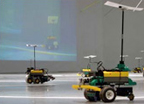
Social Network for Robots and Humans
"In a special edition of El Pais Digital reporting the Arco festival in 2001, the Spanish artist Ricardo Iglesias, one of the net art pioneers in his country, said that nothing or almost nothing ("only cliché") can be said about net art in five or six lines. However he mentioned a series of isolated topics that interconnected, related to each other, that'd really express net art: the network, the global and decentralized communication, interactivity, the virtual spaces, telepresence, the chaos theory, the active and interactive principle, the telematic interfaces, the post-biological culture, the hypertextual perspective, on line-chat, the rhizome image and the state of uncertainty.
His latest artwork, Independent Robotic Community, is a sum of all of the above. Developed with Gerald Kogler the project focuses on new forms of interaction between robots and humans on two levels.The first one features a community of 20 small robots divided in two groups. Each group has a primary level of socialization and a series of sounds conforming with a single vocabulary. Each robot's initial state consists of a very simple movement within a delimitated spatial environment. When it comes across other robots, it swaps data about its state with sounds and increases its degree of socialization and the complexity of its movements. On a second level humans can interact with robots using mobile phones and Internet, communicating with them in real time and further influencing the socialization process within the independent groups. The result is an original visual representation of a social network that includes both the subjective point of view of a spy camera and the graphic display of social statistics. As to confirm that net art is the art of networking." Valentina Culatti, Neural.
Posted by jo at 08:48 AM | Comments (0)
February 24, 2007
Do It With Others (DIWO): E-Mail-Art at NetBehaviour

A Collaborative Exhibition at HTTP Gallery, London
Hi DIWOists,
The Furtherfield crew has been discussing ways to get the most out of the co-curating session on Sunday when we will discuss and experiment with ways of exhibiting the contributions at HTTP gallery (don't forget the opening is next Thursday).
Other known contributors to this process in the gallery on Sunday are Frederik Lesage and james[at]jwm-art.net, others are welcome. Please check back with the list at 1.30 on Sunday for details of thewebcast and public chat room where you can join the discussion online. Until then you can view a gallery floor plan and tech spec here.
So here is a summary of our considerations, proposals and a number controversies for your feedback!
CONSIDERATIONS:
1) How to Survey the Contributed Materials for the Curation Process: There have been over 600 posts to NetBehaviour since the start of this project and we have 2-5pm on Sunday to review and discuss how to present contributions. The main ways that we have for looking at work is:
- through our mailboxes
- through an index of attachments that can be view browser here
Your Suggestions Please: We would like your suggestions for any other (reasonably straight forward) way to order materials for review.
2) Categories - How to Order and Discuss Materials.
It would be useful to have some broad themes or categories to discuss. Here are a couple of possible categories with examples (and these really are just examples) of what we mean.
- Threads - discussions, exchanges, actions and responses eg Sachiko Hayashi's 'The Other Half',
- Collaborations and remixes eg RandomLab's reblogging and remixing, Michael Szpakowski's remix of Thomson and Craighead's 'Additions' image
- Digital becomes Material eg Sim Gishel has sent a 'Will Work For Food' vehicle, brian[at]netartguy's currency could be laser-printed as actual currency, Other works proposed for print, Other works actually sent to HTTP etc
- Proposals/ Instructions- eg Ant Scott's installation proposal, Glorious Ninth's Love Potions
- Generative/machine Art- eg. Sim Gishel's data-mining, ARN's generative pngs
- Stand alone streams - movies, soundfiles and images eg images by Clive McCarthy, lem urtastic - movies by Lizzie Hughes, Alan Sondheim - mp3s by james[at]jwm-art.net
- Texts eg Janedepain's recent 'Poetic Terrorism and Guerrilla Art in the 21st Century' and technical discussions.
PROPOSALS:
1) We propose that the main projection consists of a Mailbox containing a DIWO archive for searching by gallery visitors. This would be organised into themed directories that would coincide with the categories listed above. PLEASE SUGGEST: more or other categories.
2) We propose that we highlight and exhibit some 5-8 works (made by individuals or collaboratively) in the form of objects, printouts, projections and sound. These would be up for discussion and debate from this point - to be decided on Sunday.
CONTROVERSIES:
1) The question of selection - how do we create an exhibition in a physical space that communicates the DIWO spirit?
- how do we highlight a selection of works?
- how do we stay true to the open principle of including all submissions?
2) Contextualisation
- do some works need contextualising in order to be accessible to gallery visitors eg should some works be displayed with titles, artist, date, materials, description of process etc?
- if so how, and who does it?
3) Is everything that has been posted to NetBehaviour since February 1st considered a submission to DIWO?
- including announcements and reblogging?
4) A number of people have proposed works in private emails to Marc or myself- should these be included under the rules of submission?
Whoever wants to contribute to the curation of this show- share your views here on the list or come along on Sunday ttp://www.http.uk.net/DIWOcurating.shtml
Let's DIWO!
: ))
Ruth [via netbehaviour]
Posted by jo at 12:01 PM | Comments (0)
February 23, 2007
Trebor Scholz

Podcasts of my lectures on Sociable Web Media
This semester I will publish selected lectures for my Sociable Media course. Podcasting is great but it is also a bit petrifying to hear my Germano-British accent. Listening to it, I had to confront my occasional generalization but it's a rich pesentation that, I think, will be worth your while. You can subscribe to this podcast series of lectures. If you listen to it in Itunes or Jukebox you'll miss the presentation slides). Alternatively, you can download the video of the first lecture here (34 MB, 45 mins, m4B file opens in Quicktime or VLC). [posted by Trebor on collectivate.net]
Posted by jo at 08:23 AM | Comments (0)
February 21, 2007
Networked Proximity - Section 5
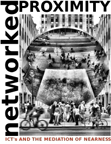
Networks and Social Change
The third of Mills’ criteria specified the necessity to transform opinions into action even against, if necessary, the prevailing system of authority. Although a thorough examination of the relationship between technology, agency, power and social change is beyond the scope of this study, I would like to make some general observations regarding the potential for using networks to promote social change. This attempt is relevant because if, as Mills (1956) suggests, a mass cannot really claim the agency to contest the prevailing authority, then to the extent that networked ICT’s are said to transform publics into masses, they can be said to stand in the way of authentic social change.
At the center of this issue are the ways in which networks in capitalist societies commodify social participation. Borgmann (2004), for instance, rightly points out that commodification is the distinguishing feature of the online social interactions that networks make possible. "To commodify something economically is to pull something that is outside of the market into the market" (p. 64), or in other words, to transform things with no monetary value into things with monetary value —or commodities— through their subordination to the logic of capitalism. Borgmann suggests that the commodification of the social happens when a social practice is taken out of its localized context and offered in a re-packaged format online. Thus, chatting becomes online chatting, dating become online dating, etc. Borgmann attempts to establish that networked sociality robs communities of their original meaning and commodify the cultural production of social space:
The Internet is culturally commodifying by its nature. It frees us from the limitations of space and time... What happens in fact is that commodification reduces ourselves and those we encounter on the Internet to glamorous and attractive personae. Commodification becomes self-commodification, but shorn of context, engagement and obligation, of our achievements and failures, of our friends and enemies, of all the features that time has engraved on our faces and bodies—without all that we lack gravity and density. (p. 64)
Continue reading "Networked Proximity - Section 5" » [blogged by ulises on ideant]
Posted by jo at 04:02 PM | Comments (0)
February 15, 2007
Mute Vol 2 #4

Web 2.0 – Man's best friendster?
Mute Vol 2 #4 - Web 2.0 – Man's best friendster? :: Web 2.0’s democratisation of media produces a wealth of new perspectives. Some of those formerly excluded from the public sphere have the chance to make their voices heard. But this wave of participation is as important for business as it is for the newly included. Mute's Web 2.0 special uncovers the work in social networking and, behind the 'dotcommunist' spin, a centralisation of the means of sharing. Texts by Giorgio Agostoni, Olga Goriunova, Dmytri Kleiner & Brian Wyrick and Angela Mitropoulos. Additional articles by Brian Ashton, John Barker, Paul Helliwell and Merijn Oudenampsen
Swarm Forms: On Platforms and Creativity by Olga Guriunova :: Will the ‘hive mind’ of social networking replace classical forms of knowledge production? Comparing Web 2.0 and small-scale, self-run cultural platforms, Olga Goriunova maintains the possibility for originality in both contexts, while identifying how the same old commercial and institutional pressures still operate.
The Long Tale by Giorgio Agostoni :: Web 2.0 relies heavily on identikit forms of self-representation and sociability. Parallel to the ‘authentic’, self-promoting personae of MySpace, multi-user virtual worlds such as Second Life (SL) appear to offer a more malleable, playful version of life online. But as the imperatives of commercial exchange penetrate deeper into the networked imagination, is the gap between RL and VR what it used to be? Giorgio Agostoni reverse engineers material from across the net to construct a fictional readymade suspended between self-reinvention and self-management.
Posted by jo at 03:18 PM | Comments (0)
January 25, 2007
Many Eyes on Visualization
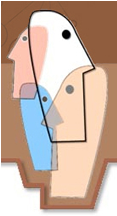
Democratized Visualization
IBM today announced Many Eyes, a site for sharing and commenting on visualizations. Martin Wattenberg, who developed the original version of the treemap we use for our book market visualizations as well as the awesome baby name voyager, and Fernanda Viegas, who worked with him on the equally awesome history flow visualizations of Wikipedia, are the geniuses behind this project.
As with swivel, users can upload any data set, but the tools for visualizing and graphing the data are much richer. The visualization options include US and World maps, line graphs, stack graphs, bar charts, block histograms, bubble diagrams, scatter plots, network diagrams, pie charts, and treemaps. The site isn't yet live, but should be very shortly. Meanwhile, you can get a good sense of the types of graphs available by checking out the visualization gallery.
I asked Martin and Fernanda how they compared themselves to swivel, and Fernanda replied:
You also asked if we see our site as "Swivel for visualization". That phrase isn't quite accurate (any more than Swivel is "Many Eyes for data" ;-). Both our site and Swivel are examples of a broader phenomenon, which we call "social data analysis," where playful, social exploration of data leads to serious analysis. At the same time the two sites fall on different ends of a spectrum. Swivel seems to have some neat data mining technology that finds correlations automatically. By contrast, we've placed our emphasis on the power of human visual intelligence to find patterns. My guess is that both approaches will be successful because social data analysis is a powerful idea.
Martin added:
In Many Eyes our goal is to "democratize" visualization by offering it as a simple service. We also think that there's something special about visualizations that gets people talking, so we placed a big emphasis in design and technology to let people have conversations around the visualizations.
Personally, I'd love to see swivel and many eyes working together, as swivel already has some great data sets, but has only a limited number of graphing tools. But that's an exercise for the future. For now, data wonks can just rejoice that both sites exist, and should start exploring, and as Martin says, conversing about what they find. I love both of these sites. [blogged by Tim O'Reilly on O'Reilly Radar]
Posted by jo at 09:50 AM | Comments (0)
January 22, 2007
Dear Internet v1.
![]()
Networked Technologies and the Paradoxes of Social Relations
In preparation for an upcoming exhibition at Maryland Art Place (MAP) Dear Internet --a project by Mark Cooley and Edgar Endress--will be accepting letters via Dear Internet. Dear Internet v1. investigates how networked technologies become platforms for the paradoxes of social relations in digital culture. Connection, fear, communication, alienation, interactivity, dislocation, intimacy, disembodiment, are all possible and often simultaneously present in our attempts to interact with others online and off.
The installation: A live screening of Dear Internet develops, with the help of participant input, over the course of the exhibition and serves as a partial expression of networked consciousness. Content for Dear Internet v1. is collected from 2 primary sources:
- A participatory blog that forms a collective memory of "users" experience in networked living. Dear Internet (the blog) is an unmoderated site for the publishing and archiving of letters written by Internet users concerning their relationships with the Internet. Through http://dearinternetuser.blogspot.com, users may address the internet directly and indulge in their deepest thoughts, feelings and fantasies with the abandonment, comfort and protection that only online anonymity can provide. Texts gathered from http://dearinternetuser.blogspot.com are remixed and projected in the gallery while they are read with text to speech software.
- Live IP surveillance cameras are accessed using a variety of well-known advanced google search techniques and projected in the gallery space. While these surveillance cameras are accessible to any internet user, they remain largely unknown to casual internet users. However, the cameras have attained significant attention from hackers, technophiles, security professionals, bored surfers and others. The interest no doubt comes from the common presumption that these surveillance cameras are left unsecure unintentionally by camera owners who have neglected to set-up camera security features. Internet users are often able to access full control of an accessed camera's, zoom, pan, snapshot and other features. Camera controls are removed from the interface for the Dear Internet installation and the cameras are set to refresh every 30 seconds.
Posted by jo at 02:24 PM | Comments (0)
January 09, 2007
MyDeathSpace and Yourdeathspace
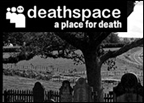
Remembering deceased MySpace users
Just as the Web has changed long-established rituals of flirting and socializing, personal Web pages on social networking sites like MySpace are altering the rituals of mourning. Such sites have enrolled millions of users in recent years, especially the young, who use them as public diaries to expand their personal connections and to tell the world about their lives. Inevitably, some of these young people have prematurely died and, as a result, many of their personal Web pages have suddenly changed from lighthearted daily life chronicles about bands or last night parties into online gravestones where sorrow is shared in real time. The practice of MySpace memorializing has even spawned websites focused on aggregating MySpace pages of the deceased.
Websites like the minimalist Yourdeathspace or the more 'business oriented' MyDeathSpace, features links to roughly 150 deceased MySpace users' personal web pages along with information about how they died. "An obituary might be four or five lines of text with no pictures, but with MySpace everything the dead person was into or was interested in is right there," said Mike Patterson, the MyDeathspace's 25-year-old webmaster. This kind of online pages has stirred controversy for what some perceive as an irreverence towards the dead. Not surprisingly, the comments visitors post also reflect a fairly even split between people who say they're disgusted by the whole idea and those who want to share memories of the featured person. Undoubtedly pages created on popular social networking sites seem to have new meanings after death: the profile of the deceased user is still very much alive - 'My space doesn't end at death'). It's only natural that as the Internet becomes a bigger part of (young) people's everyday lives and, the hub of their social network, it will also become the place they'll go to grieve." -- Valentina Culatti, Neural.
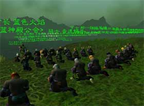
Mourning and digital culture
I'm currently investigating the way new media artist and designers explore mourning, its rituals and the ways to keep some form of life after death (any suggestion from readers is more than welcome.) It can translate into physical artefacts such as in Shiho Fukuhara and Georg Tremmel's famous project Biopresence, Michael Burton's Memento Mori In Vitro which imagine how the hair of the deceased can be kept alive. It can also envision a device or service that would consist of both a tangible object and its online complement like Elliott Malkin's Cemetery 2.0, a device that connects a grave to online memorials for the deceased; Digital Remains by Michele Gauler which wonders what happens to your digital data when you die; Mission Eternity by etoy, which would use the power of networked digital technology and inexpensive storage to keep aspects of us alive after we're dead; or Okude laboratory's Mastaba, a novel family shrine that consist of digital memories of ancestors with a wooden physical structure. Conitue reading Regine's post at WMMNA.
Posted by jo at 09:23 AM | Comments (0)
December 20, 2006
Transit
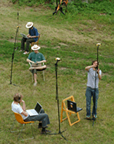
Mental Maps and the Networked Urban Space
Transit by KLAUS FILIP & NICOLAJ KIRISITS :: There is no doubt that within a few years urban space will be fiilled up with invisible data. Digital Communities will be located in real space. The internet will be extended by a geospatial network. All you'll need is a mobile interface (cellphones) to get involved with the communities / information / networks at certain places within the city. But what does that mean for the face of the city?What kind of mental map will we have from the geospatial networked based urban space?
As Kevin Lynch (1960, the image of the city) researches the legibility of urban space, Transit tries to find out the legibility of digital communities in urban spaces. For that proposition we built up an example of this digital urban space on a free field at the Kleyehof (Burgenland) with 25 invited Media artists. The Elements of that digital sculpture were text, video, sound and digital code, spatial located by using gps tools. The grid elements could be connected, to set up different networks.
The Objects are based on a spatial Masterplan, situated in a 3D grid of 1 to 1 to 1 meter; 20 meters long, 20 meters wide and 3 meters high), which defines private area (everyone can see-hear what you do but only you can change it), public (everyone can schange the data), and free spaces.
Transit was part of the podspot project at the University of applied arts vienna / department of digital art. [via Rhizome]
Posted by jo at 04:34 PM | Comments (0)
December 18, 2006
danah boyd
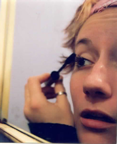
on being virtual
Lately, i've become very irritated by the immersive virtual questions i've been getting. In particular, "will Web3.0 be all about immersive virtual worlds?" Clay's post on Second Life reminded me of how irritated i am by this. I have to admit that i get really annoyed when techno-futurists fetishize Stephenson-esque visions of virtuality. Why is it that every 5 years or so we re-instate this fantasy as the utopian end-all be-all of technology? (Remember VRML? That was fun.)
Maybe i'm wrong, maybe i'll look back twenty years ago and be embarrassed by my lack of foresight. But honestly, i don't think we're going virtual.
There is no doubt that immersive games are on the rise and i don't think that trend is going to stop. I think that WoW is a strong indicator of one kind of play that will become part of the cultural landscape. But there's a huge difference between enjoying WoW and wanting to live virtually. There ARE people who want to go virtual and i wouldn't be surprised if there are many opportunities for sustainable virtual environments. People who feel socially ostracized in meatspace are good candidates for wanting to go virtual. But again, that's not everyone.
If you look at the rise of social tech amongst young people, it's not about divorcing the physical to live digitally. MySpace has more to do with offline structures of sociality than it has to do with virtuality. People are modeling their offline social network; the digital is complementing (and complicating) the physical. In an environment where anyone _could_ socialize with anyone, they don't. They socialize with the people who validate them in meatspace. The mobile is another example of this. People don't call up anyone in the world (like is fantasized by some wrt Skype); they call up the people that they are closest with. The mobile supports pre-existing social networks, not purely virtual ones.
That's the big joke about the social media explosion. 1980s and 1990s researchers argued that the Internet would make race, class, gender, etc. extinct. There was a huge assumption that geography and language would no longer matter, that social organization would be based on some higher function. Guess what? When the masses adopted social media, they replicated the same social structures present in the offline world. Hell, take a look at how people from India are organizing themselves by caste on Orkut. Nothing gets erased because it's all connected to the offline bodies that are heavily regulated on a daily basis.
While social network sites and mobile phones are technology to adults, they are just part of the social infrastructure for teens. Remember what Alan Kay said? "Technology is anything that wasn't around when you were born." These technologies haven't been adopted as an alternative to meatspace; they've been adopted to complement it.
Virtual systems will be part of our lives, but i don't think immersion is where it's at. Most people are deeply invested in the physicality of life; this is not going away. [blogged by zephoria on apophenia]
Posted by jo at 05:50 PM | Comments (0)
MYSPACE TOP 8 GALLERY
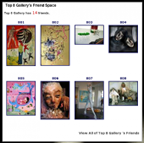
Art in the Age of Virtual Reproduction
Forget the institutions of yesterday, the Guggenheims and Tates, the Kunsthalle and Venice Biennale. In the internet age, with the creative expressive technologies of Web 2.0, and the naming of lonelygirl15 as Time’s Person of the Year, surely we have arrived at Joseph Beuys’ future fantasy when he prophesied that ‘everyone is an artist’.
In a new spirit of ‘Everyone is an Artist’, we are pleased to announce the launch of TOP 8 GALLERY – the art gallery for a new mixed reality world. MySpace is currently the most populous online community in the world. Originally associated with Music, MySpace has recently expanded its media ecology to include Film, Videos, and Comedy. Yet there is still no category for ‘Artist’. In MySpace, ‘artist’ only refers to a music artist. Top 8 Gallery seeks to redress this radical omission.
In acknowledgment of the millions of individuals making art (and here we are very expansive in our conception of art) here in MySpace, Top 8 Gallery has arisen to bring to the MySpace Public a new breed of artist and art. Our Gallery endorses ‘Art in the Age of Virtual Reproduction’.
Top 8 Gallery only features artists with a MySpace presence. Artists are chosen on the basis of their work represented in MySpace. Top 8 Gallery is a new media curatorial experiment. Members of the MySpace Public are chosen to curate Top 8 Gallery Exhibitions. Each exhibition features 8 artists via 8 separate MySpace Accounts that are displayed in the master Top 8 Gallery Profile. Exhibitions change on a monthly basis. MySpacers are invited to propose curated exhibitions entirely based on your favorite Top 8 MySpace artists.
We hope you enjoy the inaugural selection of artists carefully selected for the launch of Top 8 Gallery.
Posted by jo at 04:45 PM | Comments (0)
Stuart (Student Art)
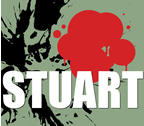
Peers connect in art showplace
A site that offers a free webpage to student artists is getting 3+ million hits a day. Called Stuart (stands for Student Art) the new sort of artist exchange is described in a New York Times story here. There are two parts to the story:
1. A strong response to the chance to display art work: The brainchild of the London-based advertising magnate and collector Charles Saatchi, this social networking outlet — a kind of MySpace knockoff for artists — is causing something of a sensation, boosting traffic at the gallery’s Web site overall to more than three million hits a day.
In May Mr. Saatchi, famed for spotting young unknowns and turning them into art-world superstars, created a section on his Web site for artists of all ages to post their work at no charge. It is called Your Gallery, and now boasts contributions by about 20,700 artists, including 2,000 pieces of video art. . . .
2. The smart mob effect among the student artists: But for students visiting Stuart, the main attraction for now is linking up with their peers.
In addition to lists of her favorite artists, books, films and television shows, Ms. Travis has posted the name of a new friend on her page at Stuart: Erhan Ozturk, a photography student at T. C. Maltepe University in Istanbul whose work she viewed at the site.
“I don’t know him,” Ms. Travis said, although they have conversed electronically. And while she doesn’t love his art, she said, “I think it’s pretty interesting.” (New friends tend to reciprocate: Mr. Ozturk lists Ms. Travis on his Web page, and with a simple click, visitors viewing his work can connect to hers.) [blogged by Judy Breck on Smart Mobs]
Posted by jo at 09:25 AM | Comments (0)
December 17, 2006
Eric Kluitenberg
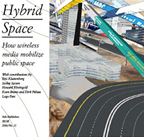
The Network of Waves: Public Agency in Hybrid Space
The Network of Waves: Public Agency in Hybrid Space by Eric Kluitenberg
The office space above which I live, in a corner house in the Indische Buurt, somewhere in Amsterdam East, used to house a local police station. At that time I was not yet living there. The place was briefly in the national news because of a fair-sized riot which took place there. A couple of Moroccan youths were brought to the station for some minor offence. Their friends thought that this was not right, so they followed the police back to the station to besiege the policemen there. It was not just a few friends who ran after the policemen, but a much larger group which suddenly turned up at the station, coming from nowhere at the precise moment when the youths were brought in. At that time this phenomenon, later known as a 'flash mob', [1] was still relatively new. The police on site were unpleasantly surprised, and had to issue a hasty call for reinforcements to negotiate with the besiegers. When it was all over a police spokesman said that it was a disgrace that the Moroccan youths had used their mobile phones to mobilize a mob. How else could these youths all have known at the same time that something was going on at which their physical presence was 'urgently desired'? And exactly where they needed to be? What the spokesman meant was that the youths had compiled mailing lists for text messages and then used texting to get together as many people as possible as quickly as possible. Texting with mailing lists was a popular application, because at that time text messages could still be sent and received free of charge.
A few years ago 'flash mobs' received a good deal of attention from the mass media. Semi-spontaneous public gatherings of groups of people, hardly if at all known to one another, nondescript, with no determining characteristics such as banners, uniform or logo, briefly performed some collective synchronous action, and then dissolved back into 'the general public'. Directions and information about the gathering were sent out by text messages, or e-mails, telling participants where, when and what. These short messages could easily be sent on to friends and acquaintances with the aim of starting a chain reaction resulting in the appearance of an unpredictably large mob at a predetermined time and place.
Reclaim the Mall!!
The 'flash-mob' phenomenon is thought by some people to have originated in a few relatively unmanageable actions in large shopping centres in American towns, disorganizing them temporarily and playfully. These actions generally had no political significance. This all changed at the end of the 1990s. The 'Reclaim the Streets' movement, [2] highly active at the time, which used to organize illegally orchestrated 'street raves' in the public spaces of large towns, made intensive use of text and e-mail address lists to organize quasi-spontaneous street parties. They did however give these street parties a layered political agenda. The parties were generally given concrete political and social themes and were linked to particular actions, such as support for a strike by London Underground staff. The movement's desire to also use these actions to free public space from its economically determined function (for instance transport, shopping or advertising) was succinctly expressed in the slogan 'The streets for people!'. The parties followed a fixed procedure. The evening before, a sound truck with a generator, a DJ kit and a large number of loudspeakers would park in a wide street. Shortly before the start a double collision would be staged at the beginning and end of the street. The crucial factor here was the provision of information for the participants, who were, in principle, unknown to the organizers. Participants therefore received a short message containing simple directions to the place, the date, the time and a few instructions, such as 'wait for the orange smoke -- that's when the rave will begin'. The double collision meant that at the agreed time the street was closed to all traffic. The cars used were fitted with smoke bombs which were set off by the mini-crash, producing enormous plumes of orange smoke, visible for miles around. This was the sign for which the 'Reclaim the Street' mob was waiting. Suddenly the street was flooded with people, sometimes more than a thousand at a time, while music began to boom from the previously parked truck or bus.
These examples demonstrate that we are living in a space in which the public is reconfigured by a multitude of media and communication networks interwoven into the social and political functions of space to form a 'hybrid space'. Traditional space is being overlaid by electronic networks such as those for mobile telephones and other wireless media. This superimposition creates a highly unstable system, uneven and constantly changing. The social phenomena which occur in this new type of space can not be properly understood without a very precise analysis of the structure of that space.
The way the Moroccan youths in Amsterdam East used text message address lists to mobilize themselves rapidly and effectively against what they saw as unjustified police violence provides an interesting example of a social group which finds itself in a socially segregated and stigmatized position appropriating a newly available technology. Mobilization was possible because at that time real-time mobile communication (texting) was available essentially free of charge. Shortly after that incident, texting became a paid service, though the reasons for this were economic rather than political, and its use for this purpose quickly lost popularity. It was simply too expensive to send so many messages at the same time. The specific relationship between time, space and technology, and to a lesser extent simple economics, determined the way in which this social phenomenon manifested itself. More than e-mails, which almost always have to be downloaded from a terminal or laptop (e-mailing on a mobile telephone is extremely laborious and inefficient), the brief phase during which text messaging served as a free public medium provided an important indicator to a changing relationship in the use and organization of public space. The mobility and immediacy of the medium gave birth to new social morphologies, like the 'flash mob', which still seem mostly to indicate a kind of mobile 'just-in-time-community' in physical public space.
The Place of Flows...
The question here is what this new kind of social morphology might mean. What lies behind the gimmick? What social, economic and technological transformations give rise to new phenomena of this kind?
So far the most important sociological theory about this is set out in Manuel Castells' Rise of the Network Society, the first part of his trilogy on the information age. [3] In it he describes the rise of flexible social network connections which resulted from economic and social transformations in late industrial societies and were strengthened by the introduction and wide application of new technology, primarily communication and information technology. Castells postulates that the network has become the dominant form in a new type of society that he calls the network society. He treats the influence of the network form as a social organization in physical and social space and establishes a new kind of dichotomy. According to Castells there are two opposing types of spatial logic, the logic of material places and locations (the 'space of place') and the logic of intangible flows of information, communication, services and capital (the 'space of flows'). [4]
The particularly striking thing about Castells' theory is the strict separation between the two kinds of spatial logic. Whereas the space of places and locations is clearly localized and associated with local history, tradition and memory, Castells sees the space of flows as essentially ahistorical, location-free and continuous. This last mainly because it moves across every time zone and so in some sense is not only location-free but also timeless. [5] Castells believes there is a fundamental asymmetry between the two kinds of space: while the vast majority of the world's inhabitants live, dwell and work in the space of places and locations, the dominant economic political, social and ultimately also cultural functions are increasingly shifting to the place of flows, where they make possible location-free ahistorical network connections, international trends, power complexes and capital movements. Only a very small part of the world population is represented in the bodies which take decisions about the organization and use of new location-free spatial connections. But increasingly the decisions made within such self-contained systems determine the living conditions in those places and locations where the vast majority of the world population attempt to survive and where their knowledge, experience and memory is localized. Castells feels that it is not surprising that political, social and cultural bridges need to be deliberately built between the two spatial dynamics, to avoid society's collapse into insoluble schizophrenia.
The attractive thing about Castells' theory is that it makes it possible to grasp and clarify a multiplicity of asymmetric social developments in a single image -- an image that has certainly not left popular culture unmoved. At the same time Castells' suggested contrast between physical locations and places and the intangible space of flows is misleading and ultimately even counterproductive for his political agenda: the deliberate building of bridges between physical space and informational space. Instead of a strict separation between physical space and informational space, all technological and social trends clearly indicate that these two 'spheres' are becoming more and more closely interwoven. A generic model of the sort suggested by Castells is totally unsuited to the analysis of this closeness and to gaining an understanding of how possibilities for public and private action come about within it, the central question posed in the present issue of Open. What threats to the autonomy and inviolability of the subject, the group, the community or cultural self-determination could possibly manifest themselves here and how can something be done about those threats?
Hybrid Space as a Polymorphous Concept
Against the placelessness and continuity of Castells' ahistorical 'space of flows' stands the discontinuity and multiplicity of hybrid space. The hybridity of this spatial concept refers not only to the stratified nature of physical space and the electronic communication networks it contains, but every bit as much to the discontinuity of the 'connectivity' or degree of connection between the multiplicity of communication networks. After all, even the universal presence of a telephone connection can not be taken for granted. More important still is the connection between local social and electronic networks: who communicates with whom, and in what context, is determined differently from one region to another, sometimes even from one day to the next. Because the space of electronic communication is rooted in local networks, it is also linked with local history. And questions about who controls electronic space or becomes familiar with electronic space are by no means easy to answer. Ravi Sundaram for example, co-founder of the Sarai new media initiative in Delhi, is constantly drawing attention to the coming into being of what he calls 'electronic pirate-modernity', [6] which comes about when local groups or individuals, illegitimately and without permission, gain access to television, telephone or the Internet -- 'Never ask permission, just appear!'.
Hybrid space is never exclusively local, as in the case of the idyllic hippy commune at the beginning of the 1970s. Small local networks, hacked or not, never remain limited to the local bazaar or the vegetable market in the next village. Local networks interweave with the international networks into which they force their way. Thus, says Saskia Sassen, the local is reconstituted as a micro-environment with a worldwide reach. Free-software geniuses in Sao Paulo's favelas find no difficulty in downloading the results of the latest interchange between the Amsterdam Waag (the Society for Old and New Media) and the Alternative Law Forum in Bangalore, but nobody pulls his or her local roots out of the ground.
Diktat of Visibility
The thing that strikes one about current discussion and the associated criticism of the rise of electronic media in public space is the preoccupation with the visual forms in which these media manifest themselves, such as screens, projections and electronic tagging. [7] It is a sort of extended visual criticism, closely connected with a tradition which assumes that the visual arrangement of observable reality is a necessary precondition for any ability to exercise power over that reality. However, the thing that stands in the way of this preoccupation with the visual is a critical analysis of the more invisible processes which are rearranging public space and imposing a different utilization logic. Relatively invisible forms of social compulsion, which bring these processes into play, may well have a much greater significance for the way in which public space can and may be used in future.
The concept of the perfect visual arrangement, expressing a social reality in which power structures are completely unambiguous and transparent, still always refers to Alberti's 'legitimate construction' and Piero della Francesca's ideal city, both of which reflect a visual articulation of daily life suggesting that everything, social and public, is completely controllable and constructible. Although the unifying point of view of a linear perspective has long been rejected, the street screens still stipulate for us a single perspective: a correct viewing distance and direction, while social relationships are radically altered.
The street screen is also the embodiment of spectacle in its most repressive form. Today spectacle is no longer alone in controlling the inner life, the interior of the alienation of the average TV junkie. The street, the classic stage of modern theatre, is overloaded with marching electronic screens and projections, so erasing the public functions of open space. Public functions become blurred by the flow of light and images drenching us in a fetish of alienating desires as we follow our necessary route through the city, from A to B.
Limitations of the Screen
Another point of criticism of the new urban visuality is its inherent limitation. Virtually every screen is rectangular and flat and has limited resolution (the number of pixels which determine the quality of the image). Media artists recognized these limitations years ago and have, with varying degrees of success, developed a multitude of strategies to attempt to overcome those limitations by, for example, a spatial type of installation, interactive media in which the screen itself also becomes an object capable of being moved and manipulated, projection on walls, fabrics, curved screens, screens that are not rectangular, [8] mirrored projections, moving projections, projections on glass materials and so on. Some artists, as for example the members of the Knowbotic Research collective, even leave out screens entirely, replacing them by new haptic interfaces and stereoscopic helmets from the Virtual Reality research laboratory or, as during the 1996 Dutch Electronic Art Festival, an installation on the roof of the Netherlands Architecture Institute, where network manipulations translated into sound and stroboscopic light. [9] Yet another example of the movement to bypass the screen is the Xchange network, in which artists collectively explore the sonic dimension of the Internet. [10]
The new generation of media-architects can learn from media art that the screen is ultimately a dead end. It is interesting to see how these attempts at iconographic liberation keep on recurring. Avant-garde painters carried out endless experiments in their attempts to break away from the frame of the painting and the surface of the canvas, their ultimate aim being to announce the death of the 'retinal' object. This same death announcement is repeated by today's media artists, but this time in relation to the screen. Media architecture again venerates the screen as a window on a space first seen as boundless, but later recognized as being largely subject to limitations and conventions.
Ultimately the screen dissolves into the architecture, becoming less a screen than a membrane between physical and medial reality. Here the 'image' functions less and less as an autonomous object, but increasingly coincides with the architecture itself, its skin, its inner life and its internal processes, finally disappearing from the consciousness of the user of that architecture. The image ecomes subliminal, 'vernacular', commonplace, merged with the environment, self-evident -- in the end the spectacle neutralizes itself. Media theorist Lev Manovich was still positive about this new medially enhanced architecture in his essay entitled The Poetics of Augmented Space, that had Learning from Prada as subtitle and was based on the success of Koolhaas's creation. [11] By now we know that the concept has failed completely, screens have disappeared from the scene or have been cut back to a minimum. The lesson of Prada is that the strategy of visibility can quickly turn into its opposite.
The Problem of Invisibility
In the present phase, the most important change in computer technology and its applications is that they are steadily beginning to withdraw themselves from sight. The European Union has for some years now been subsidizing a wide-ranging programme of multidisciplinary research and discussion with the remarkable title The Disappearing Computer. This title alludes less to the disappearance of computer technology than to its ongoing miniaturization and the way that it is beginning to turn up everywhere. The programme is investigating the migration of electronic network technology into every kind of object, to built environments and even to living beings. The thesis is that miniaturization and steadily reducing production costs are making it simpler to provide all kinds of objects with simple electronic functions (chips containing information, tags that can send or receive signals, identification chips and specialized functions in everyday objects). This is more efficient than building ever more complex pieces of multifunctional apparatus and mean the abandonment of the old idea of the computer as a universal machine capable of performing every conceivable function. [12] In fact, this is how technology becomes invisible. A decisive step, with dramatic consequences for the way people think about and deal with spatial processes.
This assimilation of computer technology in the environment introduces a new issue: the problem of invisibility. When technology becomes invisible, it disappears from people's awareness. The environment is no longer perceived as a technological construct, making it difficult to discuss the effects of technology.
Lev Manovich speaks of 'augmented space', a space enriched with technology, which only becomes activated when a specific function is required. [13] Wireless transmitters and receivers play a crucial role in such enriched spaces. Objects are directly linked with portable media. Chips are incorporated into identity cards and clothing. Even one's shopping is automatically registered by sensors. Screens and information systems are switched on remotely, by a simple wave of the hand. Miniaturization, remote control and particularly the mass production of radio frequency identification (RFID) tags is bringing the age-old technological fantasy of a quasi-intelligent, responsive environment within reach of digital engineers.
Of course these applications are not exclusively neutral. Combinations of technologies of the sort described above make it amazingly simple to introduce new and infinitely differentiated regimes for the control of public and private space. The application to public transport of RFID smart cards, which automatically determine the distance travelled, the fare and the credit balance, still sounds relatively harmless. Fitting household pets with an identity chip the size of a grain of rice, inserted under the skin, has become widespread practice. Indeed most health insurance schemes for household pets prescribe the insertion of such chips as an entry condition. Recently, however, first reports have turned up of security firms in the United States which provide their employees with subcutaneous chips allowing them to move through secure buildings without the use of keys or smart cards. Such systems also allow companies to compile a specific profile for each individual employee specifying those parts of the building or object to which the employer has (or is denied) access, and at what times
It is not difficult to extrapolate these practices to society as a whole. Who has the initiative in such matters? If the initiative lies exclusively with the constructors, the producers of these augmented spaces, and their clients, then the space we are living in is liable to total authoritarian control, even if there is no immediately observable way in which that space displays the historic characteristics of authoritarianism. The more widely the initiative is distributed between producers and consumers and the more decision-making is transferred the 'nodes' (the extremities of the network, occupied by the users) instead of at the 'hubs' (junctions in the network), the more chance there is of a space in which the sovereign subject is able to shape his or her own autonomy. The articulation of subjectivity in the network of waves is also an opportunity for the last remnants of autonomy to manifest themselves.
The Strategic Issue: 'Agency' in Hybrid Spaces
The concept of 'agency' is difficult to interpret, but literally combines action, mediation and power. It is not surprising therefore, to find it applied as a strategic instrument for dealing with questions about the ongoing hybridization of public and private space. Unlike Michel de Certeau's tactical acts of spatial resistance to the dominant utilitarian logic of urban space in particular, the action of this instrument in new ('augmented') hybrid spaces has mainly strategic significance. A tactical act of spatial resistance, which is after all no more than temporary, is hardly comforting to anyone faced by such an infinitely diversified and adaptive system of spatial control. New hybrid spaces must be deliberately 'designed' to create free spaces within which the subject can withdraw himself, temporarily, from spatial determination. Given the power politics and the enormous strategic and economic interests involved, and the associated demands for security and control, it is clear that these free spaces will not come about by themselves or as a matter of course. I would therefore like to suggest a number of strategies to give some chance of success to the creation of such spaces
Public visibility: 'maps and counter-maps', tactical cartography
The problem of the invisibility of the countless networks penetrating public and private space is ultimately insoluble. What can be done, however, is to remake them in a local and visible form, in such a way that they remain in the public eye and in the public consciousness. This strategy can be expressed in 'tactical cartography', using the tools of the network of waves (gps, Wi-Fi, 3G, etcetera) to lay bare its authoritarian structure. An aesthetic interpretation of these structures increases the sensitivity of the observer to the 'invisible' presence of these networks.
Disconnectivity
Emphasis is always placed on the right and desire to be connected. However, in future it may be more important to have the right and power to be shut out, to have the option, for a longer or shorter time, to be disconnected from the network of waves.
Sabotage
Deliberately undermining the system, damaging the infrastructure, disruption and sabotage are always available as ways of giving resistance concrete form. Such measures will, however, always provoke countermeasures, so that ultimately the authoritarian structure of a dystopian hybrid space is more likely to be strengthened and perpetuated than to be thrown open to any form of autonomy.
Legal provisions, prohibitions
In the post-ideological stage of Western society it seems that the laws and rights used to legalize matters provide the only credible source of social justification. But because a system of legal rules runs counter to the sovereignty of the subject it can never be the embodiment of a desire for autonomy. It can, however, play a part in creating more favourable conditions.
Reduction in economic scale
New hybrid systems of spatial planning and control depend on a radical increase in economic scale in the production of its instruments of control. Thus the political choice to deliberately reduce economic scale would be an outstanding instrument to thwart this 'scaling-up' strategy. [14]
Accountability and public transparency
In the words of surveillance specialist David Lyon, 'Forget privacy, focus on accountability'. It would be naive to assume that the tendencies described above can easily be reversed, even with political will and support from public opinion. A strategy of insisting on the accountability of constructors and clients of these new systems of spatial and social control could lead to usable results in the shorter term.
Deliberate violation of an imposed spatial program
Civil disobedience is another effective strategy, especially if it can be orchestrated on a massive scale. Unlike sabotage, the aim here is not to disorganize or damage systems of control, but simply to make them ineffective by massively ignoring them. After all, the public interest is the interest of everyone, and no other interest weighs more heavily. [15]
The formation of new social and political actors -- public action 'Agency', the power to act, means taking action in some concrete form. The complexity of the new hybrid spatial and technological regimes makes it appear that the idea of action is in fact an absurdity. However, new social and political players manifest themselves in public space by the special way they act, by clustering, by displaying recognizable visuality, by marking their 'presence' vis-a-vis (the) other(s).
The manifestation of concrete action by new social and political actors in public space is 'gesture'. The action, in this case, is the way the space is used, though there is still a difference between the use of a space and more or less public actions in that space. The use of space becomes agency when that use takes on a strategic form.
Notes:
1. For a description, see http://en.wikipedia.org/wiki/flashmob.
2. Reclaim the streets website http://rts.gn.apc.org/.
3. Manuel Castells, The Rise of the Network Society (Oxford: Blackwell Publishers, 1996).
4. Ibid.
5. Consider for example the concept of the 24-hour economy.
6. 'Electronic pirate modernity': see also www.sarai.net.
7. See also www.urbanscreens.org or the Logo Parc symposium held in Amsterdam on 16 November 2005, a cooperative project undertaken by the Jan van Eyck Academy, the Premsela Foundation and the Art and Public Space Lectureship (Rietveld Academy and the University of
Amsterdam).
8. These 'shaped screens' do incidentally form a curious counterpart to Frank Stella's Shaped Canvasses.
9. Anonymous Muttering: http://www.khm.de/people/krcf/AM/.
10. Website of the Xchange network, http://xchange.re-lab.net. 11. Lev Manovich, The Poetics of Augmented Space: Learning from Prada (2002), see www.manovich.net
12. The so-called Turing Machine, named after the mathematician Allan Turing -- the machine that is capable of simulating any other machine.
13. Manovich, The Poetics of Augmented Space, op. cit. (note 11).
14. The mass production of RFID (radio frequency identification) tags compelled producers to minimize the security provisions incorporated to allow the tags to be applied cost effectively to virtually any conceivable consumer product. A policy of giving priority to the safety and reliability of the chips and the information stored on them would make them much too expensive, restricting their development to specialized 'niche' markets.
15. Examples of a new kind of civil disobedience include deactivating RFID tags with the aid of an adapted mobile phone, hindering the operation of smart cards, regularly swapping client cards, deliberately supplying false information when registering online and using 'anonymizers' on the Internet, 'encrypted' (coded) mobile phones and local gsm blockers.
This essay was written for the new issue of Open (#11), cahier about art and the public domain - "Hybrid Space". The essay introduces the overall theme of the issue, and suggests some strategic considerations on the use of hybrid space.
More information on the issue can be found at the website of NAi Publishers:
http://www.naipublishers.nl/art/open11_e.html
and at the website of Open:
http://www.opencahier.nl
The journal was presented at De Balie, Centre for Culture and Politics in Amsterdam, on November 18, with the annual SKOR lecture, delivered this year by Saskia Sassen: "Public Interventions - The Shifting Meaning of the Urban Condition". The lecture is available on-line at: http://www.debalie.nl/terugkijken See also: http://www.debalie.nl/artikel.jsp?podiumid=media&articleid=85601 [via nettime]
Posted by jo at 06:19 PM | Comments (0)
December 14, 2006
Fake Your Space
![]()
Not Popular Enough?
Welcome to Fake Your Space. You have found a new and exciting service which offers help to all the men and women out there who don't feel like they are popular enough on social networking sites such as MySpace, Facebook, and Friendster. If you are tired of seeing everyone else with the hottest friends and want some hotties of your own, then this is the place for you.
CAN I PICK mY FRIENDS? Of course you can! This is what Fake Your Space is all about. You can pick the hottest looking friends to leave you messages. We have a wide selection of men and women of all ethnic backgrounds.
Posted by jo at 12:00 PM | Comments (0)
December 07, 2006
danah boyd on "Creating culture through collective identity performance"

Technologies of Cooperation
My post about danah boyd's November 14 presentation is up at Annenberg Center's DIY Media blog (including a classic photo by Ross Mayfield of danah, Mimi Ito, and Justin Hall):
boyd pointed out that the personal profiles in social networking services provide "moments of representation of identity and digital body." What makes SNSs unique, boyd asserted, are features around friends and networks of friendship that articulate and make visible aspects of interpersonal relationships and social networks that have always existed, but not so visibly. The SNS feature enabling participants to create, display, and edit lists of friends online (e.g., "Top 8" in MySpace, friends lists in Facebook, Friendster, et. al.) presents young people with an opportunity to present their networks of social connections visibly to the world. "In MySpace," boyd noted, ""top 8" is like a high school drama -- who you tell the world your best friend is will get you in horrible trouble offline or online. Who do I put in the top left slot"? MySpace management realized that this feature attracted attention, so they sold as a premium what had been a misfeature in their original design, charging to have more than 8 friends.
Comments on Friendster evolved beyond Friendster-like testimonials. "It became a way of speaking to and about someone and about yourself in the process. Making sure everyone else knows that they are in your list of friends solicits reciprocity. "
This identity-play and social experimentation is a form of DIY media, boyd pointed out, because in social network services, social rituals and norms are signalled by online representations like graphical backgrounds and friend lists, displays of cultural consumption (playlists and fashions) and cultural production (photos, photostreams, and videos). [blogged by howard on Smart Mobs]
Posted by jo at 08:20 AM | Comments (0)
November 25, 2006
Nearness
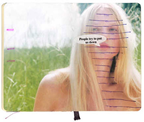
Information Artefacts
Katharina Birkenbach (aka Ponypink), an Amsterdam- and soon Berlin-based designer, has just launched a pretty fresh social networking website, it's called Nearness. Built on Mediamatic's anyMeta system, it allows you to feed it with various information about events, people, things, etc., all of which are equally treated as artefacts. This allows users to create rich interconnections between the individual entries, creating an ever more complex network of stuff.
I asked Katharina to briefly line out what the idea behind it is: "Nearness is an environment where people can store their information that is surrounding them in their daily life. It is not focused on one kind of media but is open for nearly any kind of information, doesn't matter how big or small, important or unimportant it is. Nearness can become an always present little companion, which is helping you to collect, to not forget, to organise the things you like. But organising not in the sense that you are somehow the administrator of a complex folder system, but by generating context for the data and embedding it in the data network. The context in which, for example, your favourite book is displayed is not only set up by the information you've entered, but all the users of Nearness. In this sense it can develop to some kind of stimulating treasure trove."
Trying to explain the potential of it, she also sent me a scan from her sketchbook which is pictured above, along with its history: a photo from i-D magazine, alluding to The Virgin Suicides. A sticker from Dazed and Confused which itself is a quote from The Who. Ten friends also made collages like this as part of something called Feed Me. So, Nearness in her vision could grow to become a tool for the same process. Something that today many creative people use notebooks for: collecting snippets of culture, ideas – in a way making mental collages but with the power of a networked system. [blogged by Sascha on we-make-money-not-art]
Posted by jo at 04:53 PM | Comments (0)
November 17, 2006
Priceless
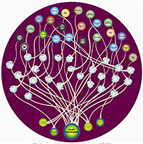
Underground Station Social Network Art
"We have created priceless, a multi-layered artwork in which the voices of individuals and institutions merge in surprising and unexpected ways. Objects of great value have been chosen by each institution to inspire an imaginative journey. People's unique stories and memories are showcased through audiovisual portraits, mobile exhibitions, installations and large-scale projections."
At London’s Huntington Station, a series of portraits and maps along the floor and walls reveal the Underground’s staff networks. The project is called Priceless. A sample of the images by motiroti is shown above.
London Underground staff have worked at the station for 138 years at the hub of a unique community of traders, museum workers, loiterers and licensed buskers who create the background atmosphere of this rich and complex environment.
motiroti has worked with LU staff to explore their personal connections and social networks. The participants were recorded in sound, video and writing by motiroti artists, who translated this information into an extraordinary series of graphic portraits and maps.
Along the length of the tunnel, 17 wall graphics and 26 individual floor constellations reveal the staff’s “hidden maps” of connections, and their personal worlds. Staff at South Kensington are connected with 66 national cities, 41 international cities, and with their friends speaking a total of 33 languages. Via Information Aesthetics [blogged by Judy Breck on Smart Mobs]
Posted by jo at 05:09 PM | Comments (0)
BlueStates:
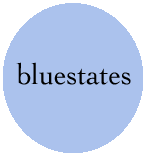
Exploring Relational Space
Cities are not merely collections of buildings; they are the living, breathing, teeming product of the human bodies who inhabit them. A city razed to the ground may recover, but a city emptied of people is dead. Yet emphasis is always given to the locative nature of a city - the neighborhood you live in, the street, the floor, the unit - an assertion of a Cartesian primacy which ignores the more profound natural relationships of the city: the coming together and parting of human beings living social lives. Cities are their people; souls are the bricks from which a city is constructed.
BlueStates: Exploring Relational Space--by Mark Pesce and John Tonkin--is an attempt to reverse the figure and ground of the city, ignoring its visible nature as a locative, Cartesian space, creating, instead, a view of the city purely as a social space. In this work, the trope of absolute location is abandoned in favor of the idea of relational proximity. BlueStates does not show you where you have been, but rather, it shows you who you have been with - a more perfect metric for the inner life of the city.

The inspiration for BlueStates is drawn from the recognition that most of us, most of the time, carry that most common of 21st century appliances, the mobile phone. Most of these mobile phones are equipped with a wireless technology known as Bluetooth. A Bluetooth mobile phone user creates a radius of electronic awareness - what we call a "bluesphere" - extending as much as ten meters from their body. When two Bluetooth devices pass in proximity to one another, each senses the other. Data is exchanged - and promptly ignored. BlueStates: Exploring Relational Space uses its own, custom software sensors - which run on mobile phones, PDAs and computers - to listen intently to the bluesphere. These sensors contribute to a database record of proximal encounters, and this data is then used to build views into the social life of the city's residents.
BlueStates is by its nature a highly participatory work. Anyone will be able to visit the website and create their own views into relational space. Residents of cities around the world will be encouraged to add their own sensors to the global network of sensors, expanding the database to incorporate the inner social life of their own cities. Beyond this, the work's creators have committed to releasing all software developed for the project as as free and open source software (under the GNU General Public License), believing this will encourage others to create their own projects in relational space. Finally, artists will be provided with tools to that will allow them to permute the data gathered by BlueStates: Exploring Relational Space in new and unique ways.
The two artists behind BlueStates have spent their careers exploring the intersection between art and technology. Mark Pesce is best known as the inventor of VRML, the standard for 3D on the World Wide Web, and has pioneered new interactive techniques for a quarter of a century. John Tonkin has consistently produced a stream of artworks that twist technology (and, occasionally, his body) into new and unexpected forms. Currently based at the University of Sydney, he has been involved in a broad range of projects including a collaboration at the Banff Centre for New Media Arts and a fellowship funded by the Australia Council. [from ISEA 06, via pasta and vinegar]
Posted by jo at 04:32 PM | Comments (0)
November 13, 2006
MediaCommons
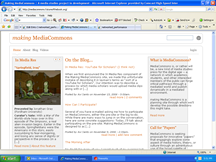
Social Networking Site
This week Ben Vershbow from the Institute for the Future of the Book passed along some news about the MediaCommons project. MediaCommons is a project in development for the past couple of years by Kathleen Fitzpatrick and others to start a born-digital scholarly press focused on media studies. At its core, MediaCommons will be a social networking site where academics, students, and other interested members of the public can write and critically converse about a mediated world, in a mediated environment. The site is intended to connect scholars, producers, lobbyists, activists, critics, fans, and consumers in a wide-ranging, critically engaged conversation that is highly visible to the public. At the same time, MediaCommons will be a full-fledged electronic press dedicated to the development of born-digital scholarship: multimedia “papers,” journals, Gamer Theory-style monographs, and many other forms yet to be invented.
The MediaCommons site launched this week has three parts:
1) A weblog where founding editors Avi Santo (Old Dominion U.) and Kathleen Fitzpatrick (Pomona College) will think out loud and work with the emerging community to develop the full MediaCommons vision.
2) A call for “papers” — scholarly projects that engagingly explore some aspect of media history, theory, or culture through an adventurous use of the broad palette of technologies provided by the digital network, to be the first projects published by the MediaCommons network.
3) “In Media Res” — an experimental feature where each week a different scholar will present a short contemporary media clip accompanied by a 100-150 word commentary, alongside which a community discussion can take place, a sort of a “YouTube” for scholars and a critically engaged public. The first guest critic is Henry Jenkins, analyzing a clip from the popular “Heroes” TV series.
Like the Electronic Literature Collection, Media Commons is an exciting and well-developed scholarly project that will make compelling new ideas available to the public in ways that they can be easily shared in the global network environment. The project is supported by the MacArthur Foundation and the Annenberg Center for Communication at USC. [blogged by Scott on Grand Text Auto]
Posted by jo at 05:51 PM | Comments (0)
November 01, 2006
Networked Objects & The Internet of Things
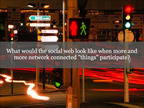
What happens when 1st & 2nd Life mash up?
Here are slides from my keynote at the Cross Media Week "Internet of Things" session. The talk itself was more extemporaneously authored from an outline and notes than written, but the slides capture the major conceptual beats.
Keynote Outline: From a Social Web to a Internet of Things: What happens when 1st Life & 2nd Life mash up?
Main Points: a. the digital communications network known as the Internet is an instrument of social engagement & exchange, and its instrumentalities (devices, databases, routers, web servers) are part of that social engagement & exchange. When other kinds of objects are "hooked-into" that network, they are caught up in the messy imbroglio of the social life of the internet.
If this is the case, then we should consider these objects as not inert objects, but social actors that shape and inform the kind of discourse that happens on these networks. So, i will refer to the various and diverse social actors amongst these networks (internet, intranet, whatever) variously as "participants", social actors, social objects, and so forth. The reason is to emphasize that anything and anyone within the network has a role to play in the creation of social life of various kinds. More >> [blogged by Julian Bleecker]
Posted by jo at 09:11 AM | Comments (0)
October 16, 2006
The Tyranny of Nodes:

Towards a Critique of Social Network Theories
The Tyranny of Nodes: Towards a Critique of Social Network Theories by Ulises Ali Mejias :: Networks have become a powerful metaphor to explain the social realities of our times. Everywhere we look there are attempts to explain all kinds of social formations in terms of networks: citizen networks, corporate networks, gamer networks, terrorist networks, learning networks... and so on. Information and communication technologies—in particular the internet—and the structures they enable have greatly influenced how we imagine the social. It's similar to what happened in cognitive science when the computer was taken as the favored metaphor for explaining how the brain works, except that now we are attempting to explain how the social works.
But is there something anti-social about imagining and organizing our social realities in terms of networks?
Most critiques of the rise of the network as a model for organizing social realities focus on what it has replaced: tightly-woven, location-specific communities (a community itself can be defined as a particular kind of network, but for the moment let's stick to these conventional terms). Wellman (2002) traces how social formations have developed from densely-knit traditional communities to sparsely-knit but still location-specific “Glocalized” networks (think cities connected to other cities), to networks unbound to any specific physical space, or what he calls Networked Individualism, where "people remain connected, but as individuals rather than being rooted in the home bases of work unit and household." (p. 5)
Thus, an important characteristic of Networked Individualism is the overcoming of physical space. Today's networks connect individuals regardless of the distance between them. This has led various authors to announce—some with glee and some with regret —the Death of Distance. But more than its elimination, Networked Individualism promotes the reconfiguration of distance: it is not only our relatonship to the far that is changed, but also our relationship to the near. Of course, early on critics sensed a threat to the near in this reconfiguration, and saw in Networked Individualism the destruction of communal location-specific forms of sociality (i.e., the irrelevancy of the near). However, this has not proven to be necessarily the case, as Network Individualism can play a part in (re)connecting people to the local. The network then also becomes a model for "reapproaching nearness" (Mejias, 2005), with the added benefit that nearness now encompasses new forms of global awareness. [continue reading at I D E A N T]
Posted by jo at 11:17 AM | Comments (0)
September 18, 2006
Connecting Worlds

Creative Possibilities of the Networking Age
09.15-11.26.06 :: Connecting Worlds, the first exhibition after the renewal of NTT InterCommunication Center[ICC] focus on the "communication", with contributions exploring the creative possibilities that emerged out of the new environments of the networking age.
'As the first exhibition since the reopening of ICC, this show raises-from the horizons of art and programming-practical alternative possibilities of various phases of communication that we currently see around us. This exhibition features artwork and projects that take a unique step into contemporary networks, politics, economies, physiology, or urban environments by manipulating sound, games, the Internet, or other media as well as foreseeing artwork created in the past.' Yukiko Shikata, curator
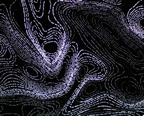
cyclone.soc by Gavin BAILY + Tom CORBY, UK 2005 :: CYCLONE.SOC brings together two contemporary phenomena: (1) severe weather, the project uses weather data that charts the emergence and progress of hurricanes; (2) the polarized nature of debate that occurs in certain online newsgroup forums. The project maps textual conversation taken from the political and religious newsgroups to the isobars of a dynamic, interactive weather visualization of hurricanes - whose complex structures are used to visualize the conversational churn and eddies of the newsgroup conversations.
In staging these interactions as a process of meteorological precipitation, newsgroup conversations "condense" in the works environment as a temporal ambient patterning - a structuring that acts not only as a metonym of difference, but of ideological tensions which mirror the dynamics of social space. CYCLONE.SOC is a navigable environment that gives the user the ability to zoom in or out and skate across and through the cyclonic weather formations in order to read or be immersed in the newsgroup text.
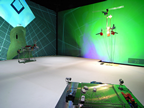
OBJECT B by exonemo, Japan 2006 :: OBJECT B 2006 Yamaguchi Center for Arts and Media (YCAM) YCAM InterLab Installation presenting a modified first-person 3-D shooting game with kinetic objects and a virtual-reality setting. Installed inside the three-dimensional environment created through projections onto all four walls of the exhibition space, are three objects made of keyboards, mice, and other computer parts and electric tools, and a control terminal for players. The robots' (programmed) frequent violent actions trigger automatic commands, according to which the game develops.
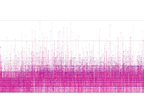
MaSS (Market as Speed Spectra) by MaSS Dev., Japan 2006 :: In e-trade, there are cases in which up to 1,000 "ticks" (contracts made when seller and buyer agree on a price are being counted per second?DThis work extracts log data of daytrade, where instantaneous decisions are being made based on numbers displayed on the computer monitor?Cand transforms the speed and rhythm of such transactions into sound and light. "MaSS" likens the steady high-speed exchange of data in e-banking to a worldwide network of reflex nerves.
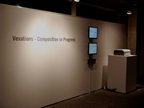
Vexations-c.i.p. (Composition in Progress) by MOHRI Yuko + MIHARA Soichiro, Japan 2005 :: "Vexations - c.i.p.(Composition in Progress)" 2006 transmediale 06, Berlin This work presents "Vexations", an odd piano piece of a single phrase repeated 840 times, originally composed by Erik Satie in the late 19th century, interpreted through an automatic, computer-controlled looping system. While incorporating modifications caused by data of environmental noises recorded with microphones at the venue, the software automatically generates new scores, based on which the piece gradually changes as the performance continues.
Artists include: ambientTV.NET (AT/IN/UK) / Wayne CLEMENTS (UK) / Robert DAVIS + Usman HAQUE (UK) / exonemo (JP) / Peter FISCHLI & David WEISS (CH) / Muntadas (UK/SP) / MaSS Dev. (JP) / MOHRI Yuko + MIHARA Soichirou (JP) / Newtype Technology Lab. (JP) / Dennis OPPENHEIM (UK) / Manuel SAIZ (UK/SP) / TANO Taiga (JP).
Posted by jo at 04:18 PM | Comments (0)
September 12, 2006
lonelygirl15

"we are witnessing the birth of a new art form."
Over the last week, i've gotten innumerable emails about lonelygirl15. Folks were wondering if i was behind it or if i knew who was. They wanted to know my opinion, if i thought it was fake.
I did. I thought it was fake but i expected that it was a TV or movie organization. I was kinda curious if it was an ARG but it didn't look like it. I decided that i should do a proper analysis of the different bits when the news broke: LonelyGirl15 is crafted by a group of filmmakers as an art project. Here's the letter they wrote to their fans on the forum explaining LonelyGirl15:
To Our Incredible Fans,
Thank you so much for enjoying our show so far. We are amazed by the overwhelmingly positive response to our videos; it has exceeded our wildest expectations. With your help we believe we are witnessing the birth of a new art form. Our intention from the outset has been to tell a story-- A story that could only be told using the medium of video blogs and the distribution power of the internet. A story that is interactive and constantly evolving with the audience.
Right now, the biggest mystery of Lonelygirl15 is "who is she?" We think this is an oversimplification. Lonelygirl15 is a reflection of everyone. She is no more real or fictitious than the portions of our personalities that we choose to show (or hide) when we interact with the people around us. Regardless, there are deeper mysteries buried within the plot, dialogue, and background of the Lonelygirl15 videos, and many of our tireless and dedicated fans have unearthed some of these. There are many more to come.
To enhance the community experience of Lonelygirl15, which you have already helped to create, we are in the process of building a website centered around video and interactivity. This website will allow everyone to enjoy the full potential of this new medium. Unfortunately, we aren't programmers. We are filmmakers. We are working furiously to complete the website, and hope to have it up and running shortly.
So, sit tight. You are the only reason for our success, and we appreciate your devotion. We want you to know that we aren't a big corporation. We are just like you. A few people who love good stories. We hope that you will join us in the continuing story of Lonelygirl15, and help us usher in an era of interactive storytelling where the line between "fan" and "star" has been removed, and dedicated fans like yourselves are paid for their efforts. This is an incredible time for the creator inside all of us.
Some thoughts
Now that i've killed the suspense, let me back up and tell you about what happened. For those who aren't familiar, videos by LonelyGirl15 started appearing on YouTube over the summer. She's supposedly a teenager who is homeschooled by religious parents who don't know she's creating videos online. Her friend Daniel helps her with the videos and they often talk back and forth across their videos. It's rather endearing but too good to be true.
As more videos popped up, people started questioning whether this was real or not. Speculation mounted and fake lonelygurls started to appear. People created videos to comment on LonelyGirl15. People flocked to the LonelyGirl15 forum to discuss. Problem is the LonelyGirl15 domain was registered before the videos started appearing. People started tracking down more and more clues, trying to hone in on what it was, who was behind it. Suspicion mounted. In classic fan style, people dove right down and tore apart all of the data. Quite a few thought that this was an ARG, Jane McGonigal style, but she denied involvement on NPR. Others thought it was an advert or some marketing campaign.
The clues people dug up were fascinating. Personally, i was intrigued by "Bree's" MySpace profile. I knew it was fake but i didn't know if the YouTube LonelyGirl15 made the MySpace profile LonelyGurl15. Why did i know it was fake? Well, i read too many teenage MySpaces. Not sure i should give away clues as to how to create a real-looking fake MySpace profile. ::wink::
Then press started covering it. Hands down, The New York Times had the best coverage. I can't help but wonder if the NYTimes knew the truth because they are certainly using the same language: "Hey There, Lonelygirl - One cute teen's online diary is probably a hoax. It's also the birth of a new art form." If so, go Adam for good reporting!
I like the idea that it is an art form but i also think it's part of what Henry Jenkins calls Convergence Culture. Regardless, it's super cool that people are using new media to create narratives. They are telling their story, truth or fiction. Of course, this makes many people very uncomfortable. They want blogs and YouTube and MySpace to be Real with a capital R. Or they want it to be complete play. Yet, what's happening is both and neither. People are certainly playing but even those who are creating "reality" are still engaged in an act of performance. They are writing themselves into being for others to interpret and the digital bodies that emerge often confound those who are doing the interpretation. In many ways, this reminds me of the Fakester drama during the height of Friendster. As one of the instigators behind the Fakester manifesto explained, "none of this is real." I won't get all existential on you so we'll leave it at that.
In many ways, i have to admit that i'm sad that the truth is out. I was really enjoying the suspicion. Far more than any episode of Lost or reality TV show. I was enjoying not knowing who was behind it and spending hours speculating and trying to find hints. I was enjoying watching a community of people talk endlessly about what they thought might be going on. Sure, the videos were quite endearing (although the ending of Poor Pluto disturbed the hell out of me) but do i just want to watch the videos by themselves? I'm not sure. I think i liked them for the mystery.
Regardless, i absolutely love the way people are using all of these new social technologies to create cultural experiments. To me, this signifies the importance of social media.
Update: The LATimes is reporting that emails concerning the site come from the Creative Artists Agency (CAA), a talent agency in Beverly Hills. (Perhaps i wasn't as off as i thought?) [blogged by zephoria on apophenia]
Posted by jo at 03:22 PM | Comments (0)
September 01, 2006
Social Data Browsing
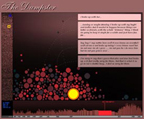
The Dumpster
"Consider the following paradox. The same few decades of the nineteenth century that gave us the most detailed artistic representations of human emotions and inner feelings, including romantic love, also saw the rise of statistical and sociological imagination. While Flaubert and Tolstoy were putting the emotions of their heroines under the artistic microscope of their prose, a different paradigm was emerging in which the individuals were nothing but dots contributing to a social law, a pattern, or a distribution. In 1838 August Compte coined the term 'sociology' for the new discipline that was to study the laws governing the life of society. (He also proposed the term 'social physics'). According to another founder of the discipline, Emile Durkheim, sociology is the science concerned with 'social facts' - phenomena that have an independent and objective existence separate from the actions of the individuals. In his major work Suicide (1897) Durkheim set out to demonstrate how such seemingly individual acts as suicides in fact follow general statistical patterns and can be explained in terms of structural forces that operate in society at large. Compare this to Anna Karenina (1877) where Tolstoy meticulously follows the last hours and minutes of Anna's life with a kind of anti-sociological gaze - looking at her not from the outside as a social scientist, but on the contrary, depicting how the outside world appears as seen by her." Continue reading Social Data Browsing by Lev Manovich, February 12 2006.
Posted by jo at 09:25 AM | Comments (0)
August 21, 2006
Research on Social Network Sites

Publishing in Peer-Reviewed Spaces?
I want to track down everyone who is actively doing research on social network sites. (Clarification: i'm looking for folks that are publishing in peer-reviewed spaces, not just researching for their company or blog.) Nicole Ellison and i are plotting to bring ways to bring everyone together. I'm also looking to create a list of all known publications. I know there's more than what i'm listing so i need your help. Please!
Researchers :: :: Alessandro Acquisti (privacy, Facebook) :: danah boyd (youth culture, identity performance, MySpace, Friendster) :: Judith Donath (signal theory) :: Nicole Ellison (Facebook) :: Ralph Gross (privacy, Facebook) :: Hugo Liu (music tastes, Friendster) :: Derek Lomas (reciprocity, MySpace) :: Alice Marwick (identity, Friendster) :: Jenn Mankoff (environmentalism, MySpace) :: Dan Perkel (literacy, codes, MySpace) :: Raquel Recuero (social capital, Orkut) :: Larry Rosen (predators, MySpace) :: Fred Stutzman (Facebook)
Publications and Presentations: :: Acquisti, Alessandro and Ralph Gross. 2006. "Imagined Communities: Awareness, Information Sharing, and Privacy on the Facebook." Privacy Enhancing Technologies. Cambridge: June 28-30.
:: Adamic, Lada, Orkut Buyukkokten, and Eytan Adar. 2003. "A social network caught in the Web." First Monday.
:: boyd, danah. 2007 (in review) "None of this is Real."
:: boyd, danah. 2006. "Identity Production in a Networked Culture: Why Youth Heart MySpace." Talk as AAAS 2006 (part of panel: "It's 10PM: Do You Know Where Your Children Are ... Online!"). St. Louis, Missouri: February 19.
:: boyd, danah and Jeffrey Heer. 2006. "Profiles as Conversation: Networked Identity Performance on Friendster." Proceedings of the Hawai'i International Conference on System Sciences (HICSS-39) , Persistent Conversation Track. Kauai, HI: IEEE Computer Society. January 4 - 7.
:: boyd, danah. 2004. "Friendster and Publicly Articulated Social Networks." Conference on Human Factors and Computing Systems (CHI 2004). Vienna: ACM, April 24-29.
:: Donath, Judith and danah boyd. 2004. "Public displays of connection." BT Technology Journal Vol 22, No 4. October, pp 71-82.
:: Ellison, Nicole, Charles Steinfield, and Cliff Lampe. 2006. "Spatially Bounded Online Social Networks and Social Capital: The Role of Facebook." Paper presented at the annual meeting of the International Communication Association, Dresden, June 19-23.
:: Gross, Ralph and Alessandro Acquisti. 2005. "Information Revelation and Privacy in Online Social Networks." ACM WPES Workshop.
:: Heer, Jeffrey and danah boyd. 2005. "Vizster: Visualizing Online Social Networks." IEEE Symposium on Information Visualization (InfoVis 2005). Minneapolis, Minnesota, October 23-25.
:: Liu, Hugo, Pattie Maes, Glorianna Davenport. 2006. "Unraveling the taste fabric of social networks." International Journal on Semantic Web and Information Systems 2(1), 42-71, Hershey, PA: Idea Academic Publishers.
:: Marwick, Alice. 2005. "'I'm a Lot More Interesting than a Friendster Profile': Identity Presentation, Authenticity and Power in Social Networking Services." Association of Online Internet Researchers. Chicago.
:: Perkel, Dan. 2006. "Copy and Paste Literacy: Literacy Practices in the Production of a MySpace Profile." Informal Learning and Digital Media. Odense Denmark: September 21-23.
:: Recuero, Raquel. 2005. "Um estudo do capital social gerado a partir das Redes Sociais no Orkut e nos Weblogs." Trabalho apresentado no GT de Tecnologias da Comunicacao e da Informacao da COMPOS 2005, em Niteroi/RJ. (in Portuguese)
:: Spertus, Ellen, Mehran Sahami and Orkut Buyukkokten. 2005. "Evaluating similarity measures: a large-scale study in the orkut social network." Conference on Knowledge Discovery in Data.
:: Stutzman, Frederic. 2006. "An Evaluation of Identity-Sharing Behavior in Social Network Communities." iDMa Journal. [posted by zephoria on apophenia]
Posted by jo at 04:04 PM | Comments (0)
Reflecting Back on Screens:

Inclusion & Exclusion
I'm back in Ottawa after a week in Banff with some really great people doing really great stuff, but before I switch my attention to fall teaching I'd like to think out loud about a few things that keep coming to mind.
It seems to me that our conversations on new media art ultimately revealed that it isn't the newness of media that's so interesting, but rather the artness of it. (Yes, I know that's not a word, but bear with me.) While "user-generated content" - or, as I prefer, public authoring and participatory media - repeatedly came up in conversation, it was quickly distinguished from artistic practice. While no one seemed willing to come right out and say it, I think the implied distinction was primarily quality-based, and both aesthetic and cultural quality are notoriously subjective.
My keynote address (which I'll post as soon as possible) chose to turn "screen" from noun to verb in an attempt to draw out the ways in which new media art and design practices involve acts of inclusion and exclusion. I tried to unpack a few of the primary metaphors that feed our notions of mobility, and I invited people to reimagine their senses of community and citizenship based on what it means to be in or out. The point of all this, of course, is to get producers of all sorts to acknowledge their own screening processes. In my mind, the most pressing political and ethical challenge facing us today is how we account for, and become accountable to, differences in perspective and practice. In other words, who gets to decide what constitutes quality content? The government? The broadcaster? The company? The artist? The designer? The academic? The public? And which public is that exactly? When it comes to collaboration, whose interests take precedence in which contexts? (As one artist said to me after my presentation, "I've realised I value art more than people.")
In my panel presentation (which I'll also post shortly) I discussed what I consider to be Proboscis' exemplary collaborative work, and how it was this sense of collaboration that helped shift a broadly technology-focussed project to a culturally-focussed one, or more specifically, how the two became entirely inseparable. Fiddian Warman also showed us a couple of Soda Creative's projects that specifically engage some of these questions, albeit in indirect ways. Both Nahnou-Together and b.tween2cultures explore what it might mean to create distinct cultural identities - together. Or how about this? The Residents and MOMA's new River of Crime Community Art Project seeks out a space for professionals and amateurs to work together. As "an exploration of the rise in popularity of instant-video-creation due to the proliferation of inexpensive video cameras, as well as both still cameras and phones that shoot video," ROCVID invites anyone and everyone to make a video - any way they like - to go with an audio clip provided by the legendary music group. Mass art and art for the masses indeed.
I'm sure I'll continue to think about these things as I prepare for my lecture on mongrel practices of art, design and anthropology at UIUC art + design next month, and as always, comments are welcome.
And for anyone interested, here are all my Interactive Screen 0.6 posts:
IA Screen : Introducing the Canadian new media context
The Convergence Conundrum: A Cross- Canadian Perspective on the Business of Content
Technology, Privilege and Innovation: The Legal Perspective
Creative Commons: Art, Activism and the Database
The View from Outside In: Margins of Art and Activism
The View from Inside Out: Margins of Technology and Business
Playing the Interface
Serious Games: Understanding the grey area between learning and playing
Filming Outside the Cinema
Blast Theory - Day of the Figurines workshop
The Impossibility Box: An Emotional Computation
(photo: Peter Horvath) [blogged by Anne Galloway on Purse Lips Square Jaw]
Posted by jo at 11:31 AM | Comments (0)
August 16, 2006
Social Media and the Networked Public Sphere
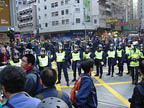
Improving Civic Participation
"Can social media increase and improve civic participation? If so, in what ways? There's a lot being said and written about the subject these days, but it is difficult to get a clear overview of the opinions. I attempt here to collect viewpoints both for and against the premise that social media is creating a better public sphere, and analyze them in the context of what constitutes a public and its antithesis, a mass. In presenting what are sometimes extreme positions within this debate (too idealistic v. too critical), my hope is to begin to understand the reality that lies in the middle, and come closer to understanding social media's potential (and limitations) as a tool to bring about social change.
At a general level, we could say that on one side of the debate are those who believe that social media can increase civic participation and shift the balance of power away from the institutions that currently stand in the way of change. On the other side are those who warn that social media can only offer a reduced form of participation, that it diminishes the value of individual contributions, and that it leaves social systems more prone to manipulation by lowering their intelligence to the minimum common denominator (i.e., stupidity or mediocrity).
Thus, the debate can be framed in terms of whether social media can engender democratic publics that embody an intelligence and capacity for action greater than the sum of its members, or whether it will merely continue to support the production of anti-democratic masses of disenfranchised and alienated consumers. Of course, social media is a big label encompassing many different technologies, and even the same technologies can be applied differently in various contexts. But while features and applications might differ, the people contributing to this debate are obviously focused on the aggregated impact that social media is having on our societies rather than on specific examples of applications." Continue reading Social Media and the Networked Public Sphere by Ulises Ali Mejias.
Posted by jo at 07:37 PM | Comments (0)
August 08, 2006
Chit Chat Club

A Teatime Telepresence
Chit Chat Club is an experiment in bringing together the cafe and the online world. Chit Chat Club is now live. In a cafe in downtown San Jose, three inhabitable sculptures sit at tables, waiting to be brought to life. One is an undulating form, another a chair just starting its metamorphosis into human form, and the third is a giant spoon. Be one.
WHEN: August 7-13 :: 8am to 10pm Pacific Time :: WHERE: ISEA Interactive Cafe, San Jose Museum of Art, San Jose, CA and/or http://chitchatclub.org
Cafes are social spaces - they are places where people come to converse, to meet friends, to people watch. It is a physical space, rich with the smell of coffee and the sound of chatter, a navigable place that people must negotiate to find good seats, to see and be seen. The cafe is local, fixed in space and reflecting and defining the social structure of the neighborhood.
The online world is also social, but far less physical. Its inhabitants have no bodies, its borders are porous. It is global rather than local. Yet there is a different kind of depth that exists in the online world, a depth of persistence, of vast collections of data, of conversations that remain permanently archived, unlike the ephemera of the spoken word.
Conversing online while in a cafe is not of course a novel idea. Many cafes today feature wireless access, and patrons read blogs, write email, instant message, etc. Yet this arrangement moves the patron's attention from the public and physical space of the cafe to the private world of these typed interactions.
Chit Chat Club brings the online visitors into the public physical space of the cafe. It does this by both providing them with a view of the cafe and by giving them a physical presence with it.
Posted by jo at 02:55 PM | Comments (0)
Receiver #16

Social Networking the Mobile Way
Receiver #16 wants to spark off some ideas about social networking the mobile way: clubbing, seeing your favourite band, sharing memories of a night out or playfully exploring the city, getting to know and experiencing, even creating, music – can mobile add to all these? And how does it affect how we get our friends together for joint action? Does it trigger emergent behaviour? Or is it the ideal means to pull it all together? What do *you* think?
Lee Humphreys: Out with my mobile - exploring social coordination in urban environments :: Tim Cole: The mobile phone as the next electric guitar (or any other instrument you want) :: Rudy De Waele: Connecting cultures through music :: Charlie Schick: One night - a global story of one night in the mobile life :: Antony Bruno: Where the long tail ends :: Karenza Moore: Come together - the use and meanings of mobiles amongst UK clubbers :: Frank Lantz: Big Games and the porous border between the real and the mediated :: Mark Curtis: Mobilising our meat based selves - social planning while on the hoof.
Posted by jo at 02:21 PM | Comments (0)
July 25, 2006
Stratoself

Short-Circuit Between Physical + Virtual Worlds
Stratoself is an interactive sky-art work that was conceived on a short-circuit between physical and virtual worlds. It has been designed by that hybridism: there’s a missing link between internet and helium gas we wanted look for. For such opposite environments we needed a flexible, self-generated, autonomous bridge. Cybercommunities were the best choice.
The idea is to release helium-filled balloons carrying participants' personal email cards inside, in the air. The participant's balloon can be ordered at the project's site and NAUTC.0, (we're group of electronic artists from São Paulo, Brazil) is in charge of assembling the entered data with the biodegradable latex balloons, and releasing them in the air of big cities of Latin America. Anyone who gets or finds a balloon can communicate with the participant via email.
The project aims to find non-conventional means of netting cybercommunities's individuals from all over the world, by temporarily colonizing urban common spaces with private material. To launch that personal electronic piece of data in physical public sites, is a way to discuss how social identity and digital territory is built in the creative boundaries of cybercommunities.
People who want to order their personal balloon and participate in Stratoself's first performance in August 14th, can register at:
http://www.stratoself.com/english.htm
Posted by jo at 09:06 AM | Comments (0)
July 15, 2006
Mirjam Struppek
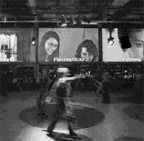
The Social Potential of Urban Screens
"...The emergence of the internet culture has brought new ways of participation and exchange to challenge hierarchical authorship. The 'new forms of creation mediated by networks more and more remote, fast and wireless' (Beiguelman, 2006) derived from this culture, influence new productions of public space. Artists are exploring the potential of the growing interconnections between online and offline worlds, and between social experiences in virtual and physical space. Wallace (2003) sees the internet connected to screens 'as a delivery mechanism to inhabit and or change actual urban spaces'. We can find various community experiments in the growing field of social computing: friend-of-a-friend communities; participatory experiments in content creation in the mailing list culture; and more recently, the wiki websites (where users can add and edit content) and blogging systems that serve an increased need for self-expression. By connecting large outdoor screens with digital experiments in online worlds, the culture of collaborative content production and networking can be brought to a wider audience for inspiration and engagement..." From The Social Potential of Urban Screens by Mirjam Struppek, Visual Communication, Volume 5, No. 2, Sage Publications June 2006, p 173-188.
Posted by jo at 02:25 PM | Comments (0)
July 14, 2006
[iDC] Participation
![]()
Embodiment/Disembodiment :: Privacy/Publicness
"In an earlier post I suggested the need to think through privacy, if we were to come to terms with publicness, i.e., that the two shouldn’t be unhooked. This, where privacy might be the ground or condition of entering into publicness: one factor to be considered, and we certainly don’t even need the current discussion to make this clear, is gender. But the discussion seems to be falling back on pretty familiar generalizations (and sometimes essentializations): women do A, men do B, etc. Not sure how far that gets anyone. Statistical tendencies for such a small sample group would probably require more detail: if we took only the instance of academics (forgive me, everyone else, but it came up in a post), wouldn’t we need to know how many of what genders, what age groups, what class backgrounds, how many single/heterosexual/gay, how many with dependents, how many with what kind of rank and workload? How many in each category have posted how often, who spends how much time reading the list? Not sure anyway that such a survey wouldn’t end up confirming pre-existing positions.
Am interested to note that individual accounts of relations to participation so far emphasize embodied—often very uncomfortable—positions, and while my sense is that these have mainly come from women, I’m fairly sure that many men would identify with them (I know I do). This might suggest that relations to this kind of list—and maybe the technology more generally?—rely on a complex of relations between embodiment and disembodiment, which I think occur along the border of privacy and publicness, or, more dynamically, represent their intertwining. Given that there’s a traditional pair of equations between privileged disembodiment (the disembodiment of the unmarked, the white male) and publicness, on one hand, and embodiment (typically seen as marked, feminine) and privacy, on the other, then perhaps the agitation that’s evident around participation is a sign that a) the private conditions of entry into publicness have become unstable (which may be at once liberating and alarming, for both men and women, and which is likely to be intensified by the temporal disjunctions of this mode of communication), and/or b) that new technologies cannot guarantee new cultural and ideological formations." - Frazer Ward, Department of Art, Smith College [posted on Institute for Distributed Creativity]
Posted by jo at 09:51 AM | Comments (0)
July 13, 2006
GLOWLAB 09: july :: august 2006

Networks, Mobility, Interventions
The projects in Glowlab 09 examine urban architecture by investigating the social spaces enabled by public networks, mobile communication devices and direct intervention. In viewing the work, one might re-imagine the city as space which is defined through the nature of the interactions that take place within it.

Public Broadcast Cart by Ricardo Miranda Zuñiga: Transforms a shopping cart into a mobile radio station, transmitting via miniFM and the Internet. The Public Broadcast Cart is designed to enable any pedestrian to become an active producer of a radio broadcast by reversing the usual role of the public from audience to producer.

Hundekopf by Brian House and Sue Huang (Knifeandfork): A location-based narrative project utilizing SMS text-messaging to explore the experience of riding the Berlin Ringbahn.

Relay: Toronto by Germaine Koh: An architectural intervention that turns a building into a sort of urban lighthouse, relaying text messages received on a mobile phone by flashing the building lights in Morse code.

Lee Walton's Western Shift by Allard van Hoorn: An open-environment collaboration between researchers, architects, designers, artist, curators and all kind of cultural producers. Its aim is to stimulate fresh ways of looking at urban living and discover alternative solutions.

SpeedWave by Otino Corsano: A photographic based performance piece inspired by the established location of a regularly monitored Toronto speed trap. A camera on a tripod replaces the laser gun to document waves of local traffic.

Talking Cities [magazine review] by Krista Jenkins: A review of the recently published Talking Cities magazine, the print accompaniment to the exhibition of the same name, taking place at Zeche Zollverein in Essen, Germany.
Glowlab is an artist-run production and publishing lab engaging urban public space as the medium for contemporary art and technology projects. We track emerging approaches to psychogeography, the exploration of the physical and psychological landscape of cities. Our annual Conflux festival, exhibitions, events and our bi-monthly web-based magazine support a network of artists, researchers and technologists around the world.
Posted by jo at 02:11 PM | Comments (0)
June 25, 2006
BBC Radio 1
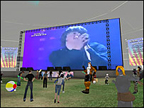
Talent-Spotting in Virtual Worlds
"...At Radio 1 we want to bring a new level of social interaction to our virtual broadcasts. We are hoping that the bands featured on-air will have their own custom-built avatars, playing in the virtual world. So if we have the Red Hot Chilli Peppers playing a gig, visitors to a Radio 1 virtual space will see avatars of Anthony Kiedis and Flea, mimicking the action in the real world.
We also believe it is crucial that the virtual audience can interact with the event. It is about replicating the "liveness" of an event, not just broadcasting it. Additionally, Radio 1 wants to find ways of allowing the audience in these worlds to actually affect the real event. I see no reason why they cannot be asking their musical heroes questions, alongside virtual Radio 1 DJs, either via Instant Messenger or VoIP. This deeper social interaction, that mirrors real world events, would do much to enhance the ripples that resonate around digital communities." From Talent-spotting in virtual worlds by Daniel Heaf, BBC.com.
Posted by jo at 03:14 PM | Comments (0)
June 09, 2006
Digital Cartographies:

From Metageography to Locality in Online Navigation
"Abstract: When Internet technology entered into popular culture in the 1990s, the virtual dominated the discourse with talk of cyber-worlds, fragmented communities and disembodied individuals. Today, location and social connection define the parameters of the media. This new orientation has redirected network activity away from early predictions of virtual isolation and towards a social connectivity that is decidedly located and contextual. In this essay, I examine changes in the popular understanding of digital space and digital subjectivity. I begin with a discussion of the metaphor of mapping in postmodernism and cyberspace and I suggest that such metaphors, premised on the conceptual distinction between real and virtual, have given way to the localized and embodied mapping of Web 2.0. Technical, industrial and cultural changes in digital culture over the past several years have created a distinct digital social space wherein the virtual world is anchored by the growing and persistent visibility and parallel commodification of everyday life." From Digital Cartographies: From Metageography to Locality in Online Navigation by Eric Gordon.
Posted by jo at 10:56 AM | Comments (0)
June 05, 2006
Is MySpace a Place?
![]()
spatial nature of MySpace
Networked Performance pointed me toward an interview (download in PDF) with Networked Publics speaker Henry Jenkins and Networked Publics friend danah boyd about Myspace. The site, popular with teenagers, has become increasingly controversial as parents and the press raise concerns about the openness of information on the site and the vulnerability this supposedly poses to predators (Henry points out that only .1% of abductions are by strangers) and the behavior of teens towards each other (certainly nothing new, only now in persistent form). In another essay on Identity Production in Networked Culture, danah suggests that Myspace is popular not only because the technology makes new forms of interaction possible, but because older hang-outs such as the mall and the convenience store are prohibiting teens from congregating and roller rinks and burger joints are disappearing.
This begs the question, is Myspace media or is it space? Architecture theorists have long had this thorn in their side. "This will kill that," wrote Victor Hugo with respect to the book and the building. In the early 1990s, concern about a dwindling public culture and the character of late twentieth century urban space led us to investigate Jürgen Habermas's idea of the public sphere. But the public sphere, for Habermas is a forum, something that, for the most part, emerges in media and in the institutions of the state:
The bourgeois public sphere may be conceived above all as the sphere of private people come together as a public; they soon claimed the public sphere regulated from above against the public authorities themselves, to engage them in a debate over the general rules governing relations in the basically privatized but publicly relevant sphere of commodity exchange and social labor. The medium of this political confrontation was peculiar and without historical precedent: people's public use of their reason (öffentliches Räsonnement). In our [German] usage this term (i.e., Räsonnement unmistakable preserves the polemical nuances of both sides: simultaneously the invocation of reason and its disdainful disparagement as merely malcontent griping. (Habermas, 27)
Nevertheless, the salon, the café, and the parliament were key places that instituted this kind of discourse, and they succeeded the court, which was explicitly spatial.
But Myspace and the new sites of network culture are different from the media of old. If they are—in general—not places of rational discourse, they are venues in which publics gather. Is Myspace media? Yes. Is it a place, maybe? In my book, MMORPGs such as World of Warcraft definitely are. So do we exclude myspace just because it is not rendered in three dimensions? Are spaces media themselves? Are media spaces? Could be (think of the Seattle Public Library). I don't have any easy answers on this, even as Anne Friedberg and I work on our essay for the upcoming Networked Publics book.
[blogged by Kazys Varnelis on Networked Publics]
Comment by danah boyd:
spatial nature of MySpace
Over on Networked Publics, Kazys Vernelis asked Is MySpace a Place? I wrote a comment in response that others might find interesting. (And perhaps prompt folks like Anne to put me in my place.)
I would argue that MySpace is a 'place' in that it's a locatable site that people "go to" and it has structural walls regulated through being logged in, being inside the domain, etc. But I would argue that this is not that important. Instead, I would focus on how MySpace is an 'imagined space' (stretching Anderson's 'imagined communities') where the space is framed by the perceived rituals, norms and acts that constitute MySpace participation. [I would also argue that MySpace is a 'medium' in a McLuhan sense because of its role in 'extending man' into the virtual for social engagement. In this way, participation might destroy the platial nature of MySpace by letting people participate in imagined communities where MySpace is simply a channel through which communication and performance occur. But it does not destroy the spatiality invoked.]
I think things get confused by bringing Habermas into the fold because his definition of spatiality is rooted in the public sphere which is entirely framed by discursive engagement. He sees identity as constructed in private such that the public sphere is the gathering of private individuals for the purpose of verbalized communication. Nancy Fraser is useful in this way because she argues that a core component of publics is the way they allow individuals to negotiate identity. Pulling in Goffman in response to Fraser, spatiality is constructed by shared situationalism through which impression management can take place.
This is where I end up talking about 'digital publics' because the nature of public life in a new networked age relies on architectural properties not normally present in (unmediated) social life - persistence, searchability, replicability, invisible audiences. While we can turn to celebrity culture and mass media's role in collapsing contexts (Meyrowitz) to get a grasp on what's going on, negotiating these types of publics is new for most people. Digital publics are tricky because they rely on a networked structure, not a group structure dictated by audience or location. The same turn that complicates digital publics complicates issues of spatiality. In short, what are the boundaries? This is why i'd argue that it's an 'imagined space' instead of a space as we normally conceptualize it.
[How terribly am I misreading theoretical ideas of space and place?] [blogged by danah on apophenia]
Posted by jo at 11:12 AM | Comments (0)
OneSmallStep: a MySpace LuvStory
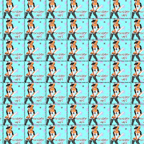
Cut/Paste Identities
We are not ourselves. We cut and paste as we are cut and pasted. We are the remix of images and sounds that never existed outside of this mediated dream. And we are happy to exist this way.
OneSmallStep: a MySpace LuvStory is an unfolding automated jam - a conscious sampling and randomized regurgitation of MySpace.com media archeology wherein desire, fantasy and fetish form a composted feast for the withered and lonely senses in an eternally habitual loop of voyeuristic consumption, spectacular regurgitation, virtual intimacy and identity production/consumption.
With each launch, OneSmallStep runs continuously while randomly remixing content form a database that is periodically updated. OneSmallStep is a conceptually interactive work, and also, a non-clickable work.
OneSmallStep: a Myspace LuvStory is a project developed for Concept Trucking, an exhibiton venue maintained by LeisureArts that uses MySpace as its platform. It hosts work that critiques, mimics, or otherwise utilizes the structural logic of social networking sites and other Web 2.0 phenomena.
Posted by jo at 09:26 AM | Comments (0)
June 02, 2006
Experts Discuss MySpace Issues
![]()
[Whose]Space?
MySpace, with more than 78 million registered accounts, is but one of numerous social networking web sites and chat rooms that would be affected by proposed federal legislation to restrict access to such sites. The new bill, an amendment of the 1934 Communications Act, would require all schools and libraries that receive federal funds to restrict access to these digital tools and online communities.
Henry Jenkins, co-director of the comparative media studies program, and danah boyd (S.M. 2002), a Ph.D. student at the University of California at Berkeley and a leading researcher on MySpace.com, recently discussed the role of social networking sites for youth, the forces fuelling the new restrictions and the effects of limiting participation in new media.
Jenkins's current research, commissioned by the MacArthur Foundation, seeks to identify the core social skills and cultural competencies young people need in order to become full participants in the cultural, political, economic and social life of the 21st century. His new book, "Convergence Culture: Where Old and New Media Collide," will be published this summer.
Funded by the MacArthur Foundation, boyd investigates how youth participation in digital publics, like MySpace, affects identity formation and socialization. Her work explores the nature of informal learning and cultural engagement by youth.
What is MySpace and what is the controversy over it?
Boyd: Structurally, social network sites are a cross between a yearbook and a community web site. MySpace is a social network site where individuals create digital profiles and link to others ("friends") within the system -- similar to sharing home pages.
While MySpace allows 14- and 15-year-old users to restrict who can see their page and contact them, most users opt to make their profiles public. The primary concern is that this openness puts youth at risk, making them particularly vulnerable to predators.
Jenkins: More broadly, teens and adults have developed different notions of privacy: Young people feel relatively comfortable sharing aspects of their lives (for example, their sexual identities). In some cases, teens do not fully understand the risks of making certain information public.
What do "social networking software programs" provide participants?
Boyd: By giving youth access to a public of their peers, MySpace provides a fertile ground for identity development and cultural integration. Youth view MySpace as a place where they can be who they are, joke around with friends and make certain to stay in the loop about everything that is going on around them.
How do MySpace skills fit into adult culture?
Jenkins: Just as youth in a hunting society play with bows and arrows, youth in an information society play with information and social networks. Over the past decade or so, adults have been learning how to interact across multiple communities and negotiate with diverse norms. Social networking services are more and more being deployed as professional tools, extending the sets of contacts that people can tap in their work lives. It is thus not surprising that such tools are also part of the social lives of our teens.
What would be the effect of the proposed legislation on youth?
Boyd: This legislation is targeting MySpace, but it would also block blogging tools, mailing lists, video and podcast sites, photo-sharing sites and educational sites like NeoPets. So it would extend current regulations -- such as the Deleting Online Predators Act -- that require all federally funded schools and libraries to deploy Internet filters. The law is so broadly defined that it would limit access to any commercial site that allows users to create a profile and communicate with strangers.
What about the deterrent effect on predators?
Boyd: Unfortunately, predators lurk wherever youth hang out. Since youth are on MySpace, there are bound to be predators on MySpace. Yet, fewer than .01 percent of all youth abductions nationwide are stranger abductions: Youth are at far greater risk of abuse in their own homes and in the homes of their friends than they ever are in digital or physical publics. Also, police currently patrol MySpace, just as they patrol other areas where youth hang out. Many are thankful to know where youth go online because it helps them do their job.
How might the new legislation relate to the "digital divide"?
Jenkins: The early discussion of the digital divide assumed that the most important concern was ensuring access to information, as if the web were simply a data bank. But the web's power comes through participation within its social networks. What a kid can do at home with unlimited access is very different from what a kid can do in a public library with 10 or 15 minutes of access at a time and with no capacity to store and upload information.
You have previously compared virtual socializing to the unfettered play in the backyards of the 1950s. Have new media changed the nature of play?
Jenkins: What teens are doing online is no better and no worse than what previous generations of teens did when their parents weren't looking. The difference is that as these activities are being digitized, they are also being brought into public view. Parents are experiencing this as a loss of control, but in fact, adults have greater control over these aspects of their children's lives than ever before.
One of the biggest risks of these digital technologies is not the ways that they allow teens to escape adult control but rather the permanent traces left behind of their transgressive conduct.
Boyd: While integrating into cultural life is critical during these years, the actual process is not always smooth or pleasant. Bullying, sexual teasing and other peer-to-peer harassment are rampant among teenagers. MySpace did not create teenage bullying but it has made it more visible to many adults. This visibility can provide a window through which teen mentors can help combat this issue.
Could you offer a political framework for considering MySpace and laws to limit access to it?
Jenkins: Right now, MySpace and the other social network tools are being read as threats to the civic order, as encouraging antisocial behaviors. But we can easily turn this around and see them as the training ground for future citizens and political leaders. Young people are assuming public roles at earlier and earlier ages. They are interacting with larger communities of their peers and beginning to develop their own styles of leadership.
We further exaggerate this participation gap when we restrict the ability of these youth to use social networks via school and library computers.
To read the full text of the proposed legislation, visit tinyurl.com/z8vu3 (PDF file).
A version of this article appeared in MIT Tech Talk on May 24, 2006 (download PDF).
[via the MIT News Office]
Posted by jo at 11:29 AM | Comments (0)
May 22, 2006
Monkey Business

Keeping Distributed Groups Connected
Monkey Business is a system that attempts to keep distributed group members more connected and aware of each other's activities; the system aims to facilitate informal and spontaneous communication, while minimizing interruption at inopportune times. The system consists of a network of animatronic agents, one of which will reside in the office of each member of a distributed group. We have chosen the embodiment of a monkey for the form of these agents; hence Monkey Business as the title of this project.
The agent uses a combination of microphones and sensors to recognize the activity in the office that it occupies. If there is a change in the state of the office activity, the agent broadcasts the information out to the network of other agents. The other agents, through subtle gestures, movements, and sounds, indicate the changes of state of the broadcasting office. Thus all members of the group, through their respective agents, are made aware of each other's activities in an ambient manner. more...
Also see Monkey Business: Creating social awareness among distributed group members, using a network of animatronic agents by Rachel Kern and Toward Lighthearted Mobile Non-verbal Expression by Rachel Kern, Chris Schmandt, and Paulina Modlitba. [via Jim Downing on Smart Mobs]
Posted by jo at 10:14 AM | Comments (0)
May 21, 2006
Michael Cardenas

Deleuze's Ontology as Expressed in the Global Indymedia Network
Introduction: Delanda, Deleuze and Indymedia: In Intensive Science and Virtual Philosophy, Manuel Delanda tries to explain Gilles Deleuze's ontology in straightforward language “for an audience of scientists and analytical philosophers of science” (Delanda, 7). He tries to untangle the language of Deleuze, a writer who allowed for much play in his language, jumping between various concepts and frequently renaming those concepts. Still, in his writing, Gilles Deleuze developed a rich ontological framework with which one can view the universe. This ontology is based on a rigorous mathematical approach which Delanda explains in great depth.
In this paper I will explain a few components of Deleuze's worldview, as explained by Delanda, using the example of Indymedia, the global Independent Media Center movement. The global Indymedia site, describes Indymedia as “a network of collectively run media outlets for the creation of radical, accurate, and passionate tellings of the truth.” (Independent Media Center, About Indymedia.)
Within the network itself, each collective organizes itself autonomously, without a top-down leadership, while still acting within a framework created by the Global Indymedia Points of Unity. Throughout the paper I will refer to various texts written by different local collectives. My intention is not to create a complete, thorough representation of the network, which is global and very diverse, but to use a few samples which relate strongly to ideas expressed in Deleuze's ontology.
While I realize that Deleuze's ontology serves perfectly well to explain far more simple entities, such as a chair, it is my hope that this analysis will reveal some interesting dynamics because of the affinity between Delanda's motivations and those of the Indymedia network. Delanda states that one of the conclusions of his book is that “the very idea that there can be a set of true sentences which give us the facts once and for all, an idea of a closed and finished world, gives way to an open world full of divergent processes... the kind of world that would not sit still long enough for us to take a snapshot of it and present it as the final truth.” The Indymedia Network works to challenge the claim to objectivity, or truth, of corporate media outlets by providing a space where people can tell their own stories and comment on other's stories, in an ongoing process, in order to help create social change. The processes that create this space will be further illuminated throughout this paper.
Multiplicities not Things
Delanda explains Deleuze's how realist ontology replaces the concept of essences with “dynamical processes” and the “multiplicity”. (Delanda, 5) Where many realist traditions are based on the transcendental concept of essence, describing for example the ideological category of “a chair”, Deleuze replaces that simplistic idea with the multiplicity, “a nested set of vector fields related to each other by symmetry-breaking bifurcations, together with the distributions of attractors which define each of its embedded levels.” Delanda goes on to describe the relation of this concept to group theory and its difference from categories, which define individuals in a population a aberrations from the abstract instead of processes, which are defined by the set of individuals they describe.
The global Indymedia network can be seen as a result of a number of social, technological and economic processes itself: ubiquitous cheap internet access, a tradition of media activism including newspaper propagandists and pirate radio dj's, corporate globalization. At the same time, the Indymedia network is embodied by a number of processes.
Indymedia defines itself as a non-hierarchical network, not as a federation, coalition or collective. Networks are defined by communication among a disparate set of nodes. As a network, Indymedia can itself be seen as a population of collectives, or as a multiplicity described by the characteristics of the collectives in the network. The Global Indymedia Points of Unity, agreed to by all collectives in the network, state: “The Independent Media Center Network (IMCN) is based upon principles of equality, decentralization and local autonomy. The IMCN is not derived from a centralized bureaucratic process, but from the self-organization of autonomous collectives that recognize the importance in developing a union of networks.” (Independent Media Center, Global Indymedia Principles of Unity) As such, there is a wide degree of play across a number of variables such as number of participants, focus on various mediums, degree of cooperation with local communities, degree of transparency of process, openness to differing political viewpoints, amount of finances and more. Systems with many degrees of freedom can be seen as complex systems or dynamical processes. In addition, although there is an official collective that approves entry into the Indymedia network, over time some collectives fade away while others are closely integrated with projects outside of the network, making the strict definition of the network even harder.
Within the network, different collectives can also be seen as multiplicities, some more so than others. In particular, Portland Indymedia defines itself as “not a membership organization; it is a tactic, a concept, and a movement that can be effectively utilized in many different ways.” While some other Indymedia centers do have official membership, many do not and are based on loose affinities and degrees of individual participation. Unlike traditional unions or other forms of political organization with rosters of dues paying members, Indymedia is defined by a process of communication, affinity and participation. Delanda sums up Deleuze's view of things as processes saying “the alternative offered by Deleuze is to avoid taking as given fully formed individuals, or what amounts to the same thing, to always account for the genesis of individuals”. Further blurring the definition of membership in Indymedia is its Open Publishing policy where anyone can post to Indymedia websites, many people do and consider themselves part of Indymedia. As many Indymedia sites say “you ARE Indymedia.” (San Diego Indymedia)
Asking The Right Questions
Open Publishing was a founding concept of Indymedia in 1999, before blogs and myspace were commonplace. Open Publishing has been defined by people within the Indymedia network as “mean[ing] that the process of creating news is transparent to the readers. They can contribute a story and see it instantly appear in the pool of stories publicly available.” (Arnison) The actual implementations of this vary widely and opinions on how open Open Publishing should be very widely even within local collectives. Delanda presents Deleuze's “problematic approach”, saying that “a solution always has the truth it deserves according to how well specified the corresponding problem” and goes on to say that “problems can replace fundamental law statements.” (Delanda 163) While Delanda's approach contains a high degree of rigor and describes specific mathematical models resulting in specific physical entities and populations, one can still see a high degree of correlation in Indymedia's approach of asking questions instead of promoting a party line. Unlike organizations that choose a linguistic statement of truth and promote that statement, Indymedia seeks to create a space for open publishing, diffusion of a variety of varying ideas and debate. The network does engage in editorial work on their sites, based on the Points of Unity which reject hate speech, but within that framework, they seek to ask questions, not provide answers.
The problematic approach is further exemplified by Indymedia's non-hierarchical structure. Since the Indymedia network “is not derived from a centralized bureaucratic process” (Independent Media Center, Global Indymedia Principles of Unity), there is no single set of statements that define the truth of what Indymedia is. There are principles that collectives in the network have agreed to, but those principles are subject to local interpretation and to change at any time by a network wide consensus. Indymedia is defined by a set of problems it is trying to address simply stated as corporate controlled media, not by the theories of any individual or the policies of any bureaucracy. As Richard Day states in Gramsci is Dead, there is “a shift away from hegemonically-oriented 'movements', and towards non-branded strategies and tactics such as Independent Media Center”. (Day 9) The Indymedia network is an example of a tactic for creating change which does not strive to promote a simple set of truths but a set of questions, an invitation.
Time and Communication in Delanda
Moving onto Deleuze's conception of time, Delanda delves into communication theory. While multiplicities can define populations, they still must have invariant properties within those populations that bind them, and “whenever we speak of the invariant properties of an entity we also need to describe an operator, or group of operators, capable of performing rotations, translations, projections, foldings and a variety of other transformations on that entity.. The quasi-cause is, indeed, this operator and it is defined not by its giving rise to multiplicities but by its capacity to affect them.”
The quasi-cause affects multiplicities and links them together. To explain the quasi-causal operator, Deleuze and Delanda use the example of an information channel. (Delanda 84) If one imagines the individual Indymedia collectives as multiplicities, then the information channel between them, the broader network, can be seen as this kind of operator linking them together. When Deleuze says “once communication between heterogeneous series is established, all sorts of consequences follow within the system. Something passes the borders, events explode, phenomena flash, like thunder and lightning,” (Delanda 150) one can see a clear parallel to the global information sharing within the network where the stories of burning tires from the streets of Argentina or of mass border crossings in Morocco are passed from country to country, city to city, through Indymedia.
Attractors and the Virtual
Delanda's book, in Describing Deleuze's ontology, is largely about the virtual and its effect on the actual world. Deleuze says “it is correct to represent a double series of events which develop in two planes, echoing without resembling each other: real events on the level of engendered solutions, and ideal events embedded in the conditions of the problem”. One critical example of a virtual entity is an attractor. “Attractors... may be defined as special subsets of state space, that is, as limit states” (Delanda 80) Later, in his definition of multiplicities, Delanda states that the attractors are “never actualized”. (Delanda 30) For example, the policy of having Open Publishing and the Global Indymedia Principles of Unity can be seen as being two attractors, or as being the virtual corresponding to the actual Indymedia network. While they are stated goals, varying collectives follow them to varying degrees, representing different states in the system at varying distances from the stated goal or the attractor. Deleuze states that “The virtual is fully real in so far as it is virtual... Indeed, the virtual must be defined as strictly a part of the real object”. The attractors that influence the trajectories of multiplicities are no less real because they are not actualized. They are observable.
Conclusion
Any attempt at a mathematically rigorous description of a thing so large, complex and nebulous as a social movement is bound to fail, or at best be inexact. This difficulty is compounded by a the fluidity of a network such as Indymedia. This paper is an attempt to describe the global Indymedia network as an entity within a Deleuzian ontology, while showing affinity between Deleuze's approach and that of Indymedia. Manuel Delanda's book Intensive Science and Virtual Philosophy is an attempt to construct a clear picture of Deleuze's ontology and to provide a detailed alternative to Deleuze's explanation of the mathematical foundations of dynamical processes. (Delanda 5) In bringing Delanda's text, which attempts to described specific physical processes, together with the study of social movements and media culture, there is a bit of inexactness. Nevertheless, as Delanda states, “we philosophers must invent devices to allow us to become 'the quasi-cause of what is produced within us, the Operator'”, and in that tradition this paper is an attempt to explain some of the connections I saw while reading Delanda. As the Zapatistas said in the Second Declaration of La Realidad “We are the network, all of us who resist.” (Graeber)
Works Cited
Arnison, Matthew. "Open publishing is the same as free software" March 2001. May 1, 2006. http://www.cat.org.au/maffew/cat/openpub.html.
Day, Richard J.F. Gramsci is Dead. London: Pluto Press, 2005.
Delanda, Manuel. Intensive Science and Virtual Philosophy. London: Continuum, 2002.
Graeber, David. "The New Anarchists". The New Left Review. Jan-Feb 2002. May 1, 2006. http://www.newleftreview.net/NLR24704.shtml.
Independent Media Center. "About Indymeda". Independent Media Center. May 1, 2006. http://www.indymedia.org/en/static/about.shtml
Independent Media Center. "Global Indymedia Principles of Unity". Indymedia Documentation Project. May 2006. May 1, 2006. http://docs.indymedia.org/view/Global/PrinciplesOfUnity
Independent Media Center. "Indymedia FAQ". Indymedia Documentation Project. Jan 2005. May 1, 2006. http://www.indymedia.org/en/static/about.shtml
San Diego Indymedia. "About Us". San Diego Indymedia. Feb 2005. May 1, 2006. http://sandiego.indymedia.org/en/static/aboutus.shtml
[via nettime]
Posted by jo at 12:47 PM | Comments (0)
May 12, 2006
Eryk Salvaggio
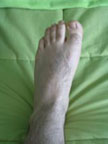
MySpaces
MySpaces is a project about the projection of the self that we must make onto social networking sites such as friendster and myspace. Usually, this projection reduces us to a few paragraphs designed to be read by anyone. This project is an attempt to create a real sense of physical intimacy, by changing my top 8 to reflect my relationships with various parts of my own body.
In theory, the idea is the first step towards the "myspacing" of the intimacy of a sexual act, where the connections of body parts are seen as connections of the associations one has with the body parts. i.e., if another participant created a similar project, and we charted the relationship between both of our body parts through the lens of our individual relationships, quite literally a kind of intimate sexual encounter would emerge between the two of us, as the profiles of our body parts communicated with one another through the comments board on each profile. [posted by Eryk on salsabomb]
Posted by jo at 01:36 PM | Comments (0)
May 09, 2006
threadcloud

Curating Clouds
threadcloud is social artware for collective curatorial activity in distributed space. The project is developed by 03 skripty kittenz: jake elliott + tamas kemenczy + siobhan renfroe. It is part of the [FRAY] series of events. The threadcloud software is split into two components:
01: artcloud (web application front-end): Anyone can access the artcloud at threadcloud.info and anonymously submit links to digital artworks. The artcloud enables users to describe artworks that have been submitted + descriptively connect them with one another.
02: threadcrab (grid gallery): In the language of computer network architecture, a 'grid' refers to a network of computing resources that share a load in a distributed fashion, essentially behaving like a resource-sharing rhizome or a hive mind. The grid gallery is the presentation layer for threadcloud. It is operated by an automatic software preparator named threadcrab, who accesses sites with forum or comment functionality (aka blogs, livejournals and online message boards), and install references to the artwork along with tags, descriptions and relationships drawn from the artcloud's database.
========wtf (aka faq)========
::::what can i do on this site?::::
+ submit, tag, and describe relationships between digital artworks.
::::should i submit artworks i have made or that others have made?::::
+ you can submit anything you like. the process is completely anonymous, so there is never any indication of the relationship between the artist responsible for the artwork and the person responsible for submitting it to threadcloud.
::::who developed threadcloud?::::
+ 03 skripty kittenz in CHI IL US
::::what does the threadcrab do?::::
+ threadcrab installs references to the artworks from the artcloud into online message boards and comments on blogs. threadcrab also uses information added by users of threadcloud.info to position artworks in relationship to one another.
::::is threadcloud social software?::::
+ social software is a term used to describe software technologies that provide a platform for social activity. it is currently used specifically to describe web applications like myspace, livejournal and friendster. threadcloud is social artware; an attempt at a self-reflexive + critical social software platform presented as software art. threadcloud's criticality w/r/t social software is articulated through its emphasis on anonymity, it's avoidance of hierarchy, and its reliance on unsolicited insertion into pre-existing, digitally-mediated communities via the threadcrab.
::::is there an index of websites in which threadcrab is operating?::::
+ threadcrab will be active beginning on may 13th, 2006. threadcrab will report back to the threadcloud about its activities and a map will be accessible at threadcloud.info.
::::what techknowledgies are used to build threadcloud?::::
+ threadcloud is built with four open source techknowledgies. the front-end user interface is built in javascript with MochiKit. the front-end talks to a server-side web services api built in python with the django framework. the display graphics are generated using tamas kemenczy's 'ansinerator' php library, an engine for generating and displaying ANSI-style graphics in the browser (open source, release forthcoming). the threadcrab is a firefox plugin built in javascript with greasemonkey.
===about fray===
[FRAY] is a series of interwoven events organized by the Film, Video and New Media department (FVNM) at The School of the Art Institute of Chicago (SAIC). [FRAY] is focussed on time, screen and code based experimental New Media art. [FRAY] consists of the following
interrelated aspects: a conference, discussions and presentations, screenings and clusters of projects running during the Spring 2006 semester.
Posted by luis at 05:15 AM | Comments (0)
April 27, 2006
Social Video
![]()
Ten Video Sharing Services Compared
"The number of video-sharing sites has shot through the roof recently, as dozens of companies try to become the Flickr of the online video world. To this end, many video services have started offering new features like editing and remixability in an attempt to snatch a piece of the ever-expanding online video pie. But for the average user--who just wants to post a video on the 'net and share it with some friends--there are already too many options out there. All one really wants to know is, which site is going to work, with the least amount of hassle?
I took 10 of these sites [Eyespot, Google Video, Grouper, Jumpcut, Ourmedia, Revver, Videoegg, Vimeo, vSocial, YouTube] out for a test drive, and picked some winners. If you want to post, watch, share, or edit video online, this post's for you.
To test each service, I uploaded my demo reel (a 15MB Sorenson 3-encoded Quicktime file) to each site and compared video quality, site interface, community features, and functionality. Where applicable I also tried to embed the resulting video in a Wordpress page. Many of these sites are still in beta, and their functionality could change in the coming months, but if you're looking to post and share video today, this is the current state of things. [posted by Ryan Bilsborrow-Koo on DVguru]
Posted by jo at 08:00 AM | Comments (0)
April 24, 2006
Receiver Magazine, #15
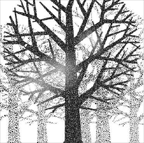
Wish You Were Here
Receiver Magazine, #15: We always take the mobile with us because we want to be reachable. But who do we want to be reachable for? Take a closer look: primarily for those we love. Apart from using them for work-related purposes, mobile phones are a great source of strength for our inner circle - they connect us to those stored in the handset's contact list whom we want to reassure that we are with in spirit, and who know when we might need the emotional support of a quick text. This receiver issue is all about that yearning factor that comes with using the mobile phone, about the meta-message which is always present: 'wish you were here'.
Vodafone's receiver magazine is a neutral space where pioneer thinkers challenge you to discuss exciting, future-oriented aspects of communications technologies. Started over five years ago as a platform for exchange about how innovations in this sector affect societies worldwide, receiver is now established as one of the industry's key idea generators.
Articles:
Jane Vincent: I just can't live without my mobile!
Could it be that we are not only emotional about the ones we keep in touch with, but that we have come to assign an emotional quality to the handset itself? Jane Vincent, whose paper is the opener for our 'Wish you were here' issue, thinks so! She has worked in the mobile communications industry since 1982. A Research Fellow with the Digital World Research Centre at the University of Surrey, Vincent's main interest is in user behaviours associated with mobile communications. She has long pondered over the one and crucial question: 'How come we feel emotionally attached to our mobiles?' and presents some of her findings here in receiver.
Rich Ling: Nomos and the flexible coordination of the family
Rich Ling is a Senior Research Scientist at the research and development division of Telenor, Norway's largest research establishment within information and communication technology. Ling, who investigates the social impact of mobile telephony, is a most influential writer on mobile matters, serving on the editorial boards of a number of academic journals. He authored The mobile connection - the cell phone's impact on society, a book published by Morgan Kaufman in 2004. Read Ling's article for receiver to learn how mobile communication contributes to the maintenance of the family as an institution.
Ruth Rettie: How text messages create connectedness
Ruth Rettie is an ex-Unilever Brand Manager who is currently a senior lecturer at Kingston University in London. At the University's Business School she lectures on internet marketing, E- and M-commerce and has a strong research interest in communication theory. She is currently completing her PhD in sociology at the University of Surrey, which focuses on mobile phone communication. In her receiver contribution, Rettie explains how connectedness is a premier driver of mobile communication.
Tim Kindberg: We are cameras - image acts in personal interaction
Tim Kindberg, a senior researcher at HP Labs Bristol, UK, with a strong interest in nomadic and urban computing, has recently focused on the usage of camera phones. He and colleagues at HP Labs Palo Alto (Mirjana Spasojevic) and Microsoft Research Cambridge, UK (Abigail Sellen and Rowanne Fleck) carried out an in-depth study into camera phone use in the UK and US. Findings: people often have strong social or sharing intentions when capturing a picture, but typically use 'capture and show' rather than 'capture and send'. Read Kindberg's receiver contribution to find out more about the social uses of camera phones.
Jeff Axup: Blog the World
Jeff Axup is a PhD candidate at the University of Queensland in Brisbane, Australia. His research in Mobile Community Design focuses on the development and design of mobile devices used by groups and how device design might change group behaviour. Axup has chosen to look at one highly mobile group in detail and examines what technologies could be used to support backpackers. Read his receiver contribution to find out about the usage patterns and demands he came across with a group of people who to a large extent depend on forming social networks while on the move.
Joachim R Höflich: The duality of effects - the mobile phone and relationships
Joachim Höflich is Professor of Communication Studies at the University of Erfurt, Germany. He has been looking at forms of media-driven interpersonal communication for many years. His particular focus is mobile communication, and he has written and edited a number of books including Mobile Kommunikation (2005) and Mobile Communication in Everyday Life, which will be published shortly. In his contribution to receiver, Höflich weighs up the positive and negative effects of mobile phones as a medium for relationships and takes a look at the particular way in which relationships are affected by them.
Pierre Proske: Bleating in the bank queue
Pierre Proske is a Melbourne-based programmer and digital artist with a background in music, engineering, literature and performing arts. Proske's artistic work focuses on people's relationships with technology, his most recent example being True Blue Love. This mobile phone based mating experiment was launched at last year's Mobile Journeys exhibition in Sydney, a venture that explores the creative potential of Australian mobile culture. In Bleating in the bank queue, Proske introduces us to his match-making project which plays with an inversion of the silent communications that mobile phones promote.
Mark Federman: Memories of now
Mark Federman is completing a PhD at the University of Toronto, researching the future form of corporations in a ubiquitously connected and pervasively proximate world. Over the last five years, Federman has been Chief Strategist at the McLuhan Program in Culture and Technology at the University of Toronto and is co-author, with Derrick de Kerckhove, of McLuhan for Managers. His receiver contribution tells us, in his own and in McLuhan's words, how we have focused on sharing the "here and now" since we learned to use tools that enable ubiquitous communication.
Nicola Döring: Just you and me - and your mobile
Nicola Döring is Professor of Media Design and Media Psychology at Ilmenau University of Technology, Germany, where she researches psychological and social dimensions of new communication technologies. She has published widely on online and mobile communication, focusing on communities, language, learning, identity, gender, sexuality, romance and interpersonal relationships. In her receiver contribution, Döring takes a closer look at mobile phone interruptions during romantic dates and meetings with friends based on an observational study.
Posted by jo at 01:23 PM | Comments (0)
April 22, 2006
Esthétique Rélationnel

Antagonism and Relational Aesthetics
"...It is important to emphasize, however, that Bourriaud does not regard relational aesthetics to be simply a theory of interactive art. He considers it to be a means of locating contemporary practice within the culture at large: relational art is seen as a direct response to the shift from a goods to a service-based economy.10 It is also seen as a response to the virtual relationships of the Internet and globalization, which on the one hand have prompted a desire for more physical and face-to-face interaction between people, while on the other have inspired artists to adopt a do-it-yourself (DIY) approach and model their own “possible universes” (RA, p. 13). This emphasis on immediacy is familiar to us from the 1960s, recalling the premium placed by performance art on the authenticity of our first-hand encounter with the artist’s body. But Bourriaud is at pains to distance contemporary work from that of previous generations. The main difference, as he sees it, is the shift in attitude toward social change: instead of a “utopian” agenda, today’s artists seek only to find provisional solutions in the here and now; instead of trying to change their environment, artists today are simply “learning to inhabit the world in a better way”; instead of looking forward to a future utopia, this art sets up functioning “microtopias” in the present (RA, p. 13).
Bourriaud summarizes this new attitude vividly in one sentence: “It seems more pressing to invent possible relations with our neighbors in the present than to bet on happier tomorrows” (RA, p. 45). This DIY, microtopian ethos is what Bourriaud perceives to be the core political significance of relational aesthetics..." From Antagonism and Relational Aesthetics by Claire Bishop [PDF] [via] [Related 1, 2, 3]
Posted by jo at 11:02 AM | Comments (0)
April 20, 2006
Love City
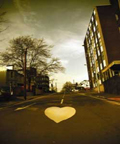
Locative Menage a Trois
Nottingham-based technology artists, Active Ingredient (authors of 'Ere Be Dragons), are to launch an interactive game that will link the people of Leicester, Nottingham and Derby. Love City will allow people to text each other in a game that awards points for making connections with people from the other cities.
The game uses mobile cell location to track users' positions in the three cities. When a player moves between mobile phone 'cells', s/he (Player 1) receives an SMS that includes an update about Love City and the status of other players in their area or in one of the cities. Players can then connect with each other by sending a text to another person in another place. If Player 2 accepts Player 1's message of love, a connection is made and these form a "bonded pair". If a second connection is made from this group to a third player, then a triplet or Ménage à trois is created.
When a triplet is formed, Player 1 is awarded an avatar known as the "offspring" which acts as an agent for them in this particular cell. Subsequent connections with this agent are relayed to the original player who may be far from the cell but can still connect and initiate a process which leads to the creation of more offspring and points for them. Thus their empire grows.
The first test of the game, commissioned by Three Cities, will take place on April 3 – 9 2006.
The full-scale public project is likely to take place at the end of the year when a big-screen projection of the game will be broadcast in the main public spaces of each city.
Via Media Arts Education. [blogged by Regine on Textually]
Posted by jo at 07:47 AM | Comments (0)
April 19, 2006
Roch Forowicz's
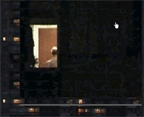
Environment
Environment is a continuation of Roch Forowicz's Invigilate project [Spotlighted on Turbulence in 2005]. It's a networked space in which every member of the project is able to connect with every other member via video, phone and/or e-mail. Environment is open to everyone though Forowicz has specifically invited residents of the apartment complexes surveilled in his Invigilate project.
I hope this space will be much more friendly for them to dialogue. Goal of this action is to create a natural, organic and free from propaganda space of the information exchange.
Environment grew out of Forowicz's perceived "failure" of the earlier project Invigilate--a form of art activity performed in a public space. Invigilate addressed the ever increasing lack of privacy in society, and questioned relationships between people sharing the same space, both social and political. Forowicz recorded people going about their lives in their apartments; he then posted the videos on the Internet and made his email address available to viewers. Forowicz also posted flyers about his activities in each of the apartment complexes; they displayed the Invigilate web site address as well as pictures of the surveilled apartments.
Forowicz's goal was to provoke a dialogue about performed surveillance and the invasion of his subjects' privacy. Unfortunately, nobody responded at first; later he received a few emails from people who didn't understand his actions at all. Forowicz concluded that he needed to encourage people to engage in a dialogue. Environment is the outcome.
Posted by jo at 11:16 AM | Comments (0)
March 16, 2006
Ars Electronica Winning Project 2005: [the next idea]
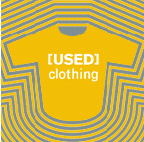
USED Clothing
Clothes are an expression of an individual’s identity. The way a person dresses is almost always directly connected to his/her lifestyle, worldview and self-image. “OK, then why not use clothing even more intensely as a medium?” mused Martin Mairinger. And the Linz native proceeded to create USED Clothing, a concept for furnishing clothes with additional information.
A radio frequency identification (RFID) chip to which the wearer can save information about himself/herself is sewn into each garment. When the item of clothing—for instance, a jacket, pair of pants or T-shirt—is sold at a special second-hand shop, the buyer can access this information online and find out about the garment’s past.
The interests and personal philosophy of individuals with a preference for the same type of clothing often resemble one another. Accordingly, the second-hand interface node just might yield interesting hookups. The project’s long-term concept envisions the establishment of a community of registered users who take advantage of the second-hand shop’s offerings not only to acquire clothing but also to establish social contacts within the network of human beings connected to the shop.
Honorary Mentions
ætherspace
knouf nick (US)
zeitkunst.org/projects/aetherspace
Maschine_Mensch
Zucali Tobias, Christopher Rhomberg (AT)
[blogged by Regine on Twenty1F]
Posted by jo at 11:48 AM | Comments (0)
February 01, 2006
Bordergames
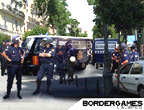
Technology, Games, Empowerment
Bordergames is a series of workshops, a videogame engine and an editor which allows young migrants not only to design a video game where their experiences are the main element, but also to learn the importance of taking over new technologies and using them to self organize and recover the control over their own lives and environments.
Bordergames is a working project directed to young migrants, in this first stage Moroccan teenagers living in Madrid. Our basic tenet is providing a series of tools for them to fully recover their right to their own word and expression, and doing it in a language they feel specially close to them: that of videogames.
Bordergames organizes meetings and workshops...through which the Moroccan kids discuss the stories they want to tell and then learn programming, editing and producing 3D scenarios and characters for the videogame they have decided to produce. Related: mimoSa
Posted by jo at 08:45 AM | Comments (0)
January 31, 2006
NODE.London
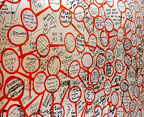
States of Interdependence
There is a Sufi fable in which a group of foreigners sit at breakfast, excitedly discussing their previous night’s exploration. One starts saying “…and what about that great beast we came across in the darkest part of the Jungle? It was like a massive, rough wall.” The others look perplexed. “No it wasn’t!” says one, “It was some kind of python”. “Yeah…” another half-agrees, “…but it also had powerful wings”. The shortest of the group looks bemused- “well it felt like a tree trunk to me.”
This fable aptly illustrates many aspects of the NODE.London experience. The name, which stands for Networked Open Distributed Events in London, indicates the open, lateral structure adopted to develop a season of media arts. It is intentionally extensible, suggesting possible future NODE(s), Rio, Moscow, Mumbai etc. As participants/instigators in the project’s ongoing conceptualization and praxis, we are just two individuals positioned on the interlaced, scale-free networks of NODE.L (more on these later). As such, our descriptions of this collectively authored project are inevitably incomplete and contestable, with a complete picture emerging only in negotiation with others.
Scale-free networks such as the network of Nodes are constantly adopted by NODE.L’s to facilitate the emergence of a grass roots media arts culture in London and in building its own organisational and communication structure. The Internet is a scale-free network. Scale-free networks are described by scientists as maintaining their levels of connectivity regardless of their size. They do this by linking small ‘clusters’ of locally networked nodes to more massively linked hubs, which are in turn connected to each other. Theoretically this allows one to link from one node on a local cluster to another distant, local node with just a couple of steps through the hubs. This creates the “small world” phenomena whereby anyone on the network is felt to be close to any other as well as to the centre." From NODE.London - States of Interdependence, a collaborative text written by Marc Garrett and Ruth Catlow, for "Media Mutandis: A Node.London Reader" (to be published in February 2006).
Posted by jo at 10:29 AM | Comments (0)
January 27, 2006
Finger Ring

Social Polling
Finger Ring is a system in which a cell phone decides whether to ring by accepting votes from the others in a conversation with the called party. When a call comes in, your phone first determines who you're discussing with by using a decentralized network of autonomous body-worn sensor nodes. It then vibrates all participants' wireless finger rings.
Although the alerted people do not know if it is their own phones that are about to interrupt, each of them has the possibility to veto the call anonymously by touching his/her finger ring. If no one vetoes, your phone rings.
Other Ring Phone concepts: The Finger Phone - The Finger Phone is a small bluetooth headset that you can wear like a ring. It remains connected to your cell phone through bluetooth; Technojewelry - Penta Phone, Ring Phone and GPS Toes - Technojewelry for IDEO incorporates emerging electronics into everyday attire. Penta Phone and Ring Phone are concepts for mobile phones; The ring phone concept - A mobile phone encapsulated into a ring you wear on the finger, won the 2004 Sony Ericsson Phone Concept Design Competition in China; The Ring Phone - The winning submission for the "2004 Siemens Design Challenge"was a phone consisting of two finger rings, one ring for listening and one for speaking. [blogged by Emily on Textually]
Posted by jo at 03:56 PM | Comments (0)
January 25, 2006
The Strength of Internet Ties

"Our evidence calls into question fears that social relationships — and community — are fading away in America. Instead of disappearing, people’s communities are transforming: The traditional human orientation to neighborhood- and village-based groups is moving towards communities that are oriented around geographically dispersed social networks. People communicate and maneuver in these networks rather than being bound up in one solitary community. Yet people’s networks continue to have substantial numbers of relatives and neighbors — the traditional bases of community — as well as friends and workmates.
The internet and email play an important role in maintaining these dispersed social networks. Rather than conflicting with people’s community ties, we find that the internet fits seamlessly with in-person and phone encounters. With the help of the internet, people are able to maintain active contact with sizable social networks, even though many of the people in those networks do not live nearby. Moreover, there is media multiplexity: The more that people see each other in person and talk on the phone, the more they use the internet. The connectedness that the internet and other media foster within social networks has real payoffs: People use the internet to seek out others in their networks of contacts when they need help." From The Strength of Internet Ties by John Horrigan, Jeffrey Boase, Lee Rainey, and Barry Wellman, The Pew Internet and American Life Project. [blogged by Howard on Smart Mobs]
Posted by jo at 06:12 PM | Comments (0)
January 24, 2006
Profiles as Conversation:
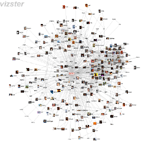
Networked Identity Performance on Friendster
"ABSTRACT: Profiles have become a common mechanism for presenting one’s identity online. With the popularity of online social networking services such as Friendster.com, Profiles have been extended to include explicitly social information such as articulated “Friend” relationships and Testimonials. With such Profiles, users do not just depict themselves, but help shape the representation of others on the system. In this paper, we will discuss how the performance of social identity and relationships shifted the Profile from being a static representation of self to a communicative body in conversation with the other represented bodies. We draw on data gathered through ethnography and reaffirmed through data collection and visualization to analyze the communicative aspects of Profiles within the Friendster service. We focus on the role of Profiles in context creation and interpretation, negotiating unknown audiences, and initiating conversations. Additionally, we explore the shift from conversation to static representation, as active Profiles fossilize into recorded traces." From Profiles as Conversation: Networked Identity Performance on Friendster, Danah Boyd, Jeffrey Heer
Posted by jo at 09:12 AM | Comments (0)
January 23, 2006
LAN Party
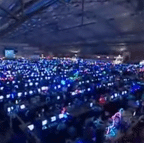
Bring Your Own Computer (BYOC)
"A LAN party is a temporary, sometimes spontaneous gathering of people together with their computers, which they connect together in a local area network (LAN) primarily for the purpose of playing multiplayer computer games. These LANs come in various sizes, from the very small (2 people) to the very large (4000+ people). Small parties can form spontaneously, but large ones usually require a fair amount of planning and preparation on the part of the organizing team. The term 'LAN party' is sometimes incorrectly applied to Gaming centers and Internet cafes. Although offering comparable services, LAN party events differ significantly in that they are generally BYOC (Bring Your Own Computer) and are not permanently set up." Wikipedia
Last year in Sweden "(n)early 6,000 young people lugged their desktops through the snow to a convention center, where they hooked them up together and played video games for three days and three nights, with only occasional breaks for sleep...
The reason why these events happen is because you want to meet the person in real life. You play on the Internet all the time and you see their name. But you don't know what they look like," he says. "You don't know what they're really like in person." Cyber Athlete 'Fatal1ty', 60 Minutes.
Posted by jo at 05:40 PM | Comments (0)
January 02, 2006
Dot.City
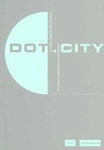
Relational Urbanism and New Media
This publication of the Fourth International Bauhaus Kolleg, a year long thematic graduate session run by the Bauhaus Dessau Foundation, offers strategies for employing digital media to integrate the unpredictable and the unplanned into urban existence. Dot.City asks and seeks to answer many questions: Can the use of information and communication technology counteract the continuous processes of devaluation, the loss of urban identity and the lack of multifunctional networks? Can the activation and implementation of new social techniques of knowledge production compensate for missing economical impulses and functions? How do such processes generate new species of urban values? Is it possible to re-program local social resources using intelligent network technologies? What do urban action areas designed for this purpose look like? And how can urban information spheres and physical urban spaces penetrate each other? Dot.City is edited by Torsten Blume and Gregor Langenbrinck. [via neural]
Posted by jo at 03:28 PM | Comments (0)
December 18, 2005
Silence of the Lands
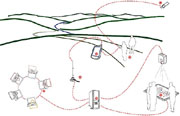
Shared Individual and Collective Sound Cartographies
Silence of the Lands enables participants to collect ambient sounds, then to create and share individual and collective cartographies. These sounds represent subjective interpretations of the soundscape of the urban or natural settings that affect the everyday life of the community, and act as conversation pieces about natural quiet.
1. Data catching: ambient sounds are collected using a PDA. The sounds are linked to the person that collected them, and associated to GPS data; 2. Data description: the sounds are then stored in a database, visualized on a GIS map, and made available for audio-streaming in the web community as individual soundscapes. Participants can access, manage, and eventually modify their own individual soundscapes, associating to them several descriptors; 3. Data interpretation: participants can interact with the collective soundscape. By playing with physical objects in an interactive environment, participants are encouraged to interpret the collective soundscape and create an idealized, virtual one.
A project by Elisa Giaccardi in collaboration with Gianluca Sabena, Hal Eden, and Gruppo Sfera. Currently under development at the Center for LifeLong Learning & Design, University of Colorado, Boulder. Related: Streetscape. [blogged by Regine on we-make-money-not-art]
Posted by jo at 05:57 PM | Comments (0)
December 14, 2005
Found Connections
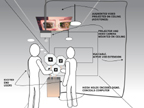
Found Through 'Lost'
Found Connections--by Michael Ang, David Bamford, Joshua Dickens and Karl Channell--allows you to re-experience the narrative of Lost by interacting with other individuals in the physical space and discover your hidden connections through augmented reality. Hold up your fan (with a 4x4" tracker marker printed on it) in front of our installation. Live video is augmented with graphics which reveal a virtual character from the TV show Lost. When more than one character is on the screen, the connections between those characters are visualized between them on the screen. Reverse the fan to find out more details about your connections.
Found Connections is an interactive exploration of social interaction and connections between people using the characters and storylines of the television show Lost as the content. The show Lost is rich with mystery, and hidden meanings; everything from the multiple sides of different characters to the paranormal activity on the island. We want to create the same type of mystery within the Winter Show by giving visitors a simple fan that has hidden content within it that's revealed in front of our installation.
Through augmented reality software these connections are made visible on a plasma screen (or possibly projection) display. The tag on the user's fan turns into a graphic of a character from the TV show and once other users stand in front of the same screen, lines are drawn connecting them as audio, text bubbles and video content from the show are triggered based on which characters are interacting.
This interest viewers based on the interesting content of Lost by really allowing them to take on the role of their character form the show. On another level it also spurs real life interactions with whoever the viewer happens to have a connections with. It reveals hidden connections through augmented reality using lost and also connections that person may happen to have with someone around them.
Part of the ITP Winter 2005 Show.
Posted by jo at 11:53 AM | Comments (0)
December 08, 2005
Cory Arcangel

Friendster Suicide
Dear Internet,
I am writing this to announce that I am going to commit Friendster Suicide on Thursday, ---> aka. delete my Friendster account. Yep, I just can't take it anymore. To my Friendsters, I'm sorry, ... c u on the net.
I am gonna do this as part of the launch of the Dec/Jan issue of the magazine The Believer @ ps1 on Thursday. The event starts at 6pm and also will feature lectures and talking by other people like Eric Fischl, Matthew Ronay and Lori Barbara.....for more info click here.
So yeah, if you want to see this live, please come, and if you want to watch the performance at home (yes, ... this is an Internet performance, remember that concept???? LOL!), Friendster me sometime before then, and around 8:40 EST on Thursday(ish), I assume if you keep reloading your browser window on Friendster, I think I will simply disappear from your friend list. Got it? Awesome. C U there, ... kinda.
l88888888r, Cory
Posted by jo at 09:50 AM | Comments (0)
December 01, 2005
DIGITAL STREET CORNER
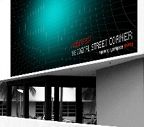
Virtual Street Corner Happening
DIGITAL STREET CORNER by Fred Forest; Art Basel Miami Beach 2005: Is it possible to surf around in cyberspace and hang out on the street corner at same time (global + local = glocal)? French artist Fred Forest will show us how at a world premiere event that will take place November 30-December 4 in the prestigious context of Art Basel Miami Beach 2005. Forest invites the Internet users of the world to meet him down in the street outside the Bass Museum of Art in Miami Beach for a memorable cyber-happening. There's no need to reserve a plane ticket because the setting will actually be a "corner" of virtual reality, specially created with the help of a new open source peer-to-peer software program developed by Joachin Keller Gonzalez of France Télécom R&D. On the dates indicated, Forest aims to make art history by creating a unique real-time digital work of art with the help of online participants near and far. This work will consummate the official (esthetic and economic) recognition of a new model of art whose content and format bear no comparison to those of the past, an art for the wired societies of the information age.
Forest is no neophyte in the field of new media. He is widely recognized as a pioneer of video art in Europe and co-founded two major avant-garde movements with a focus on interactive media hybrids, Sociological Art and the Esthetics of Communication. In reference to his hacker-like tactics, Vilem Flusser called him "the artist who pokes holes in the media." Forest is also a Net Art pioneer. He won the City of Locarno Grand Prize at the Locarno Festival of Electronic Art in 1995 for his work "From Casablanca to Locarno." People are still talking about his virtual reality-enhanced "Cyber-marriage," which took place live online in 1999 (his best man was none other than the "father of the Internet," Vinton Cerf).
The DIGITAL STREET CORNER Web site, will open on November 20, 2005 in order to give members of the public a chance to upload their free "ticket" to Miami Beach and carve out their very own niche in cyberspace. Don't miss your chance to strut your stuff in Miami Beach in the company of your new digital friends. A wealthy art collector from the world of high finance has already paid a fortune to be the first in line!
On November 30, 2005, a special cyber-happening is scheduled to take place at "THE DIGITAL STREET CORNER" between 9 PM and 11 PM (local time). Forest himself will be the DJ, at the commands of his four computers, his console, and his turntable. To participate in the happening, visit http://www.fredforest.com
Everything that happens at "THE DIGITAL STREET CORNER" will be projected live onto the exterior walls of the Bass Museum in Miami Beach throughout the four-day duration of the event. And the festivities of the cyber-happening will be webcasted live for millions to see on the "DIGITAL STREET CORNER" Web site. Don't miss your chance to meet and party with people from around the world on this virtual street corner, located for a short time only in "real" space at 2121 Park Avenue in Miami Beach. Project Sponsors:France Télécom, Bass Museum, Cartier Foundation for Contemporary Art, Cultural Service of the French Embassy in New York, French Consulate General in Miami, webnetmuseum.org
Posted by jo at 12:10 PM | Comments (0)
November 23, 2005
The Port
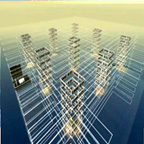
Arena for Experiments
The Port is a place, a community and an arena for experiments. It is a 16-acre virtual island located inside the online world Second Life. The island is a 3d-model, collaboratively shaped by its users. The Port is open and accessible to all Second Life inhabitants and potentially to all internet users. Regarding The Port as a piece of land renews questions of spatiality in an online context.
Members of The Port Community belong to an international network of artists, architects, thinkers, researchers and programmers collaboratively exploring (1) the notion of value-creation in an online environment, (2) the nature of immaterial production and ownership, (3) the interlacing of an online and off-line reality, (4) possibilities for virtual worlds to function as public space and (5) the concept of communality in a trans-local sphere.
Projects already initiated include developing new musical instruments, an expanded white board for discussions, architectural structures and a garden, an alternative currency with backing in virtual land as well as continually producing in-world TV reports and staging live music and dance performances.
Posted by jo at 01:25 PM | Comments (0)
November 21, 2005
Social Networking 3.0

Content as Much as Contacts
"If there were a competition for "Internet Buzzword of the Year," last year's winner would have been "social networking," as a cohort of companies such as Ryze, Tribe, LinkedIn, Friendster, Spoke, and Visible Path, rolled out new or improved services that let Web users create online mirrors of their circle of real-life acquaintances. The idea was mainly to let users build online profiles that advertised their interests and to help them connect with friends and friends-of-friends around one of those interests -- whether it be finding a job, making a sale, or repairing an old motorcycle.
But with the exception of Friendster and Myspace, the initial response to these services among average Internet users was sluggish. Many users signed up for one or more services, created online profiles, formed connections with a few acquaintances, and drifted away, uncertain about how to use the networks." Continue reading Social Networking 3.0 by Wade Roush, Technology Review.
Posted by jo at 03:40 PM | Comments (0)
fibreculture #6
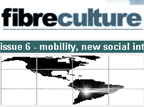
Mobility, New Social Intensities, and the Coordinates of Digital Networks
From stirrups to satellites, the invention of new forms of technical mobility has always created new intensities within the social. Each invention has also required a new idea of what it might be to be human, along with new tensions as older cultural practices and social forms are challenged. The contemporary mobility of digital networks is no exception. This issue of the Fibreculture Journal--edited by Andrew Murphie, Larissa Hjorth, Gillian Fuller and Sandra Buckley--is concerned with documenting, and beginning to think through, the new mobile intensities allowed by digital networks. "Intensity" here refers not just to the ubiquitous nature of mobile networks, or to the frequency of use of mobile communications. New intensities are like new forces erupting within the old - taking the social somewhere it has not perhaps been before. At the least, these intensities give established orders new energies to either resist or attempt to fold into established social practices and modes of thinking.
All of the articles in this issue deal with these new intensities. Much of this issue develops key ideas and documents new social practices involving mobile telephony. Dong-Hoo Lee documents the experiments with self-image and expression now allowed young Korean women by camera phones. Angel Lin affirms the continuation of older social practices amongst Hong Kong college students using SMS (in the use of SMS to maintain social ties with friends and family, for example). However, she also notes the increased possibility of political participation, and some interesting shifts concerning biligual textual practices - perhaps even a specific emerging bilingual identity within the community of SMS users. Lin also finds that there are gender differences concerning the way that young people in Hong Kong use mobiles (males tend to use SMS to meet females and new friends, for example). Lin wonders if, however, this will lead males into more 'social grooming' via mobile communications. This seems to be the case in the study of Norwegian young people, provided by Lin Prøitz. She finds a surprising amount of gender mobility within the frame of SMSing, even when the rhetoric outside of this frame maintains reasonably strict concepts of gendered behaviours. Lee, Lin and Prøitz all outline the role of desire in promoting proficiency and subtleties within SMS use.
Judith Nicholson gives an extensive account of the brief but influential 'flash mob' phenomenon, at the same time describing the political potential of mobile networks in terms of new "mobs". Here Nicholson draws attention to the use of mobile phones to coordinate the political momentum in the Spanish election of 2004, echoing 1981's 'night of the transistors'. Larissa Hjorth argues for the enfolding of older forms of communication within SMS and MMS use. Specifically she contemplates the shifting fragile intensities of the border between public and private in both SMS/MMS and the postcard. If there are new intensities of intimacy to be found in mobile networks, they are often mutations of older intensities.
Several articles move beyond mobile telephony, to discuss broader issues regarding networked mobility. Scott Sharpe, Maria Hynes and Robert Fagan consider the Internet as a forum for coordinating resistance to globalisation. As they point out, the Internet is already compromised as such a forum, as it is itself the forum of globalisation par excellence. They suggest rethinking what is possible in such a context. They give a detailed analysis of an older-style approach, that of the IUF 'superunion' educational web site, and a newer approach, that of activists, the Yes Men. In a surprising challenge to much analysis of globalisation and its discontents, Sharpe, Hynes and Fagan turn to Gilles Deleuze's analysis of masochism to point out the limits of the IUF approach. Rather than buy into the hegemony of representations as outlines by global powers (and some of their opponents), they argue for a humorous creation of new possibilities via the Internet. The latter involves an active seeking after new, more creative modes of thought, via which to nudge the new network intensities away from the monolithic nature of global Capital.
Nearly all of the articles in this issue are as contemplative and they are descriptive. The final three articles are centrally concerned with a thinking through of mobile intensities. Ingrid Richardson poses the concept of the 'mobile technosoma' - a return to thinking through the new kinds of bodily intensity associated with new technical intensities, and both bodily and technical intensities together. In the process she argues for a new medium specificity. Far from a convergence of media, Richardson comments that new mobile media forms, and their specific embodied contexts, require more in the way of specific analyses of their divergences.
Notions of stability, identity and place keep recurring in the discussion of convergent mobile media. Mobility, in particular the tactility and telepresence of mobile telephony, brings about an intense focus on the specificity of place and bodies. 'Where are you, now?' seems to be a refrain for many authors in this issue. The expansive yet normalising architecture of networks produces paradoxically an ethography of innovation and intimacy as shown in the four qualitative case studies from Seoul (Lee), Hong Kong (Lin), Melbourne (Hjorth) and Norway (Prøitz). In a delicately argued article grappling with this new sense of place, Rowan Wilken discusses a sense of place profoundly transformed by mobile networks, but not completely dissolved into them. Wilken points out that we simply cannot do without place, that place has always been a complex experience, and that, although there is no doubt that mobile networks transform place, this only makes it the more urgent to consider a new concept of mobile place - what he calls 'mobilitis loci'.This new place - a shifting place, a more intense and uncertain place, requires a new and more subtle politics - a central theme in many articles in this issue. This new politics of place is one that will have to consider the mutually infolding of virtual and actual at every moment of mobility. Wilken turns to some architectural/media experiments emerging from the events of the 1960s, such as those of the group Ant Farm, in order to give such infolding some historical context.
Felicity Colman and Christian McCrea take all these questions - very old and very new technics, new intensities and new fragmentation, new relations, the infinite deferral of networks and the way this deferral ties everything into a web - in the direction of what they call the 'digital maypole'. For Colman and McCrea, 'the maypole expresses the network’s torsion balance chart of power. The maypole topology is order through rhythmic tension and torsion, and in this sense its continuous binding of power makes the concept the paradoxical apostate of the network’s labyrinthine structure. The instinctual and biological ties of the etymological maypole enable us to focus upon specific power combinations of the network’s prescience'. There could perhaps be no better description of the problems and possibilities given to us by new mobile intensities, whether for those who are trying to mediate the shifts in social practices and cultural cohensions occasioned by mobility, or those attempting merely to analyse them.
We hope that it will be noted that there is a mix of approaches in this issue. In particular, the articles here range from the purely speculative to the mainly empirical. We are very happy that things have turned out this way. We began with a commitment to sparking conversation between different modes of analysis and response to these important issues. Such diverse studies exemplify the kinds of methodological constellations gathering around mobile phone use - and perhaps as importantly, examine the new relations between new, more mobile social intensities (such as biligualism in Hong Kong, gender fluidity in Norway) and mobile technologies as engaged with these intensities.
Biographies.
Posted by jo at 10:26 AM | Comments (0)
November 02, 2005
Sal Randolph
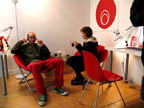
Opsound and Whereyouare
Last night at Upgrade! Boston, Sal Randolph presented two projects, Opsound and Whereyouare. Opsound is a gift economy in action, an experiment in applying the model of free software to music. Musicians and sound artists are invited to add their work to the Opsound pool using a copyleft license developed by Creative Commons. Listeners are invited to download, share, remix, and reimagine. Opsound is currently installed in the Glowlab: Open Lab exhibition at Art Interactive.
![]()
Whereyouare is an experiment in the collective documentation of neighborhoods. Randolph began the project with the idea of documenting her own neighborhood, Williamsburg, Brooklyn, whose quirky and ephemeral beauties are currently endangered by a wave of new development. Everyone is invited to participate by documenting any neighborhood they love. Those with material from neighborhoods which have now been damaged or destroyed by Katrina are especially encouraged to contribute.
Posted by jo at 11:29 AM | Comments (0)
October 29, 2005
Locative Media as Socialising and Spatialising Practices:
Learning from Archaeology
"Abstract: Pervasive computing and locative media are emerging as technologies and processes that promise to reconfigure our understandings and experiences of space and culture. With the critical hand of material and cultural studies, we start to shape questions about locative media representations of urban mobilities, and begin to unearth some of the struggles and tensions that exist within these fields of operation. By looking at archaeology’s constitutive processes of collection, ordering and display we highlight some of the problems found in mapping people and objects in space and time, and ask what kinds of social/spatial relations are made possible in particular locative media projects. Ultimately, we take archaeology’s critical focus on authorship and ownership, explain its relevance to locative media, and suggest questions to consider in the future research and design of locative media." From Locative Media as Socialising and Spatialising Practices: Learning from Archaeology (draft) (PDF), by Anne Galloway and Matt Ward.
Posted by jo at 11:32 AM | Comments (0)
October 06, 2005
Virtual Raft Project + Regrets
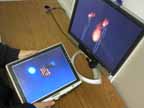
Two from UC DARNet
The Virtual Raft Project is a multidisciplinary undertaking seeking to create communities of believable autonomous characters that inhabit heterogeneous networks of computational devices. In particular, the project is interested in allowing the characters to break the plane of the traditional desktop screen. To this end, we have designed an interactive installation featuring a novel tangible paradigm for interacting with the characters. This paradigm involves the use of a mobile device, such as a Tablet PC or handheld computer, as a “virtual raft” by which a character may be transported among several virtual worlds. By enabling the character on the raft to react in real time to the raft’s motion in real space, this installation encourages participants to become physically engaged with virtual characters. We believe that this physical engagement can lead to an increase in the believability of the characters.
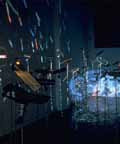
Share the Burden
Regrets consists of six to ten purpose-built mobile computer stations publicly located in and around Cambridge collect anonymously submitted regrets from the public to comprise a sociological database of contemporary remorse. Instant feedback to the individual user based on other contributors' similar concerns is algorithmically generated and calculated to 'share the burden'. Random selections and groupings of the regrets are made public across the city through existing signage and broadcast facilities. By engaging users in revelations of a problematic but constructive nature, we aim to bring specificities of individual lives, in this case personal regrets, into the realm of public debate, shared learning, and community.
About
The UC Digital Arts Research Network (UC DARNet) is an interdisciplinary Multicampus Research Group of University of California faculty who utilize digital media for cultural and theoretical research and in their creative production. As an ad-hoc planning group, UC DARNet has been meeting since 1997 to lay the foundation for a UC-wide program to facilitate collaborative research and teaching within a distributed digital arts and humanities community.
Culture is in the midst of an increasingly rapid shift to computer-mediated forms of creative production, distribution and communication. The role of digital media is fundamental to this shift. Digital Artists create a natural bridge across the traditional disciplinary divide between the humanities and the sciences. Interdisciplinary dialogue geared toward creative production and programmatic development will be facilitated by UC DARNet, providing an opportunity for critical engagement and conceptual dialogue between humanists, scientists, and those in the digital arts. A rotating group of UC digital arts and new media faculty act as principal investigators of UC DARNet and as the group's advisory committee.
GOALS AND OBJECTIVES
UC DARNet will, over a five year period, work to:
Serve to bridge counterproductive gaps between the arts, humanities, and sciences;
Enhance students' educational experience by providing access to faculty across the entire UC system;
Engage in experimentation and prototyping of distributed network environments which will be of value to a range of research interests and educational models; and, finally;
Help to establish UC as a leading institution for developing the new modalities of digital culture. UC DARNet will establish a strong UC presence outside of California through conferences, events, workshops, exhibitions, and ongoing online and offline dialogues. It is also actively planning to have research and development activities facilitate distance learning, and technology access to underprivileged middle school and high school children in the Southern California.
Funded by the University of California's Office of Research, UC DARNet pursues its programs and research activites with matching funding from the participant campuses, partner institutions and organizations, industry sponsors, corporations and foundations.
Posted by jo at 12:06 PM | Comments (0)
Images in the sky

Recycled Connections
200 images from the Internet were released into the sky via red, green and blue helium filled balloons on the 2nd of October 2005 in Victoria Park, London. For all we know they could all just fall into the Channel. But we hope that if someone finds an image they will get back to us and let us know where they are, and participate by sending us an image or message of their own.
Posted by jo at 11:08 AM | Comments (0)
September 29, 2005
Interactive Performance
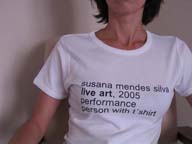
T-shirts as Software
Susana Mendes Silva keeps creating interactive performances and by (in) doing so continues to investigate the nature of social relations. After Artphone and art_room, two performances in which the spectator (user, to be more accurate) had to interact with the device created by the artist, a technologically mediated question-answer situation about contemporary art, Silva developed Live Art.
The assumptions are the same. Even the name of this new performance reminds us of the previous ones and how much she enjoys questioning the boundaries of traditional art, or at least of a commodified, object driven art. In this project there is again a device the artist created, but not a digital one, or at least not one at first sight. It is a t-shirt with information concerning the performance. The information, the technical details of the work of art, functions as the instructions manual for the performance, defining how it is supposed to work.
The user, he or she who buys the t-shirt, will have to perform a determined action, wear it (or not), thus making the device work, interact with it. This performance consists in a set of rules materially formalized in an inexplicit manner in a t-shirt, . The course of action is unpredictable and is completely out of the artist’s control. Once again, through such a procedure, Silva questions how spectator and contemporary art interact, playing with concepts as artistic phenomenon or authorship.
A t-shirt, a simple, implicit set of rules. An open, modifiable, autonomous device. If we look at the user’s role as secondary, if we look at the device, and how it works and changes, the concept of generative art isn’t that far away. Thinking of it as “any kind of artistic practice in which the artist uses a system and makes it function with a certain degree of autonomy in order to create complete work of art”. Live art is put in motion and the outcome is unpredictable (as was art_room’s) being the result of chance and the limitations of the set of rules defined.
But how accurate, how realistic is comparing the human system here described with the procedures of autonomous systems responsible for generative art? What of meaning? Part of this system is made of a user to whom this whole situation in which he sees himself has a meaning and that guides his action. Not only is he influenced by what is written on the t-shirt, but also by his interpretation of the event and that has to be accounted for.
There is usefulness in another comparison. If the focus in the spectator-user’s expectations and in his reaction to the piece, in how the action unfolds and meaning is created from the interaction with the set of rules defining the performance, if the focus is in the procedures rather than in the outcome, we are clearly facing what can be called software art. Even though not recurring to digital tools or the like, Silva is, ideologically, walking through digital art’s grounds, for she is exploring communication procedures, processes over objects, relations over subjects. She is doing analogically immaterial works of art and her tools are concepts such as interactivity, software or self-organization.
Susana Mendes Silva
live art, 2005
performance
person with t-shirt
for the exhibition
private t'shirt
30.09 to 27.10
a loja do lopes
lisbon
Read An Artist in the Chatroom, a text discussing Silva's performance art_room
Posted by luis at 09:24 AM | Comments (0)
September 15, 2005
Neighbornodes

Node Thy Neighbor
Neighbornodes are group message boards on wireless nodes, placed in residential areas and open to the public. These nodes transmit signal for around 300 feet, so everyone within that range has access to the board and can read and post to it. This means that with a Neighbornode you can broadcast a message to roughly everyone whose apartment window is within 300 feet of yours (and has line of sight), and they can broadcast messages back to you. Boards are only accessible from computers that go through the local node.
Additionally, Neighbornodes are linked together, making up a node network to enable the passing of news and information on a street-by-street basis throughout the wider community. With access to your local Neighbornode, you can post messages to your local group board, as well as forward messages to other nodes in your vicinity. These other nodes can in turn forward messages to your node, resulting in a network of neighborhood message boards. [blogged by Samuel Rose on Smart Mobs]
Posted by jo at 12:00 PM | Comments (0)
September 14, 2005
Superstar Tokyo
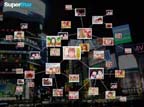
Who's Photographing Whom?
Superstar is a multiplayer photo-based game designed for Ubicomp 2005, Tokyo. The game is free, and open for anyone with a phonecam and self-portrait Puri Kura stickers of themselves. The game uses Japanese Puri Kura stickers as a starting point for an experiment in social networks, automated phonecam image analysis, and urban visual culture. The goal is to see and be seen, using tiny images woven into the fabric of Tokyo streetlife.
To play, place your own stickers (with a star on it to recognize participants) wherever you want and collect the stickers of other players by shooting them with your phonecam. Whenever a player snaps a Superstar sticker both players earn points. A link is then created between the two players. From this point on, any time either player earns points (by shooting a new sticker or by having their sticker shot) the other one will also earn points (though not as many).
Superstar thus builds a network of connections that forms a social, pyramid scheme. Successful players will be the ones that forge connections with other active players. Automated image recognition (e.g. Mobot technology) will decipher who is photographing whom when players email their images to SuperstarHQ via their phonecam. A message is returned via SMS indicating points earned.
Developed by Frank Lantz, Kevin Slavin (areacode) together with Kamida (makers of Socialight), Michael Sharon and Dan Mellinger (Kamida). Details in the PDF. [blogged by Regine on we-make-money-not]
Posted by jo at 08:35 AM | Comments (0)
September 13, 2005
Anne Galloway
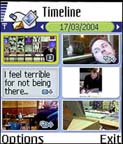
Still Searching for the Social in Mobility
"In thinking about differences between Nokia and Motorola, and mobile tech industries in general, I browsed Matt Jones' and Timo Arnall's del.icio.us links, and a few things keep circling around my brain.
In a podcast of an interview with Anssi Vanjoki of Nokia on social computing, I got a slightly vague, but definitely people-centred, picture of mobile computing. Like Matt, I find their position to be generally encouraging, but I harbour some serious reservations about how industry seems to be incorporating ideas and pratices from academic and other cultural contexts.
Now, it strikes me that Nokia has been proclaiming this 'social turn' as the next big thing since at least 2000, and I'm not entirely sure where it's got them - or us. Should we really assume that all people everywhere want to collect digitial ephemera and log their lives as they go by? I don't mean to accuse or pressure the fine folks and friends who work for them, but what other kinds of mobile sociability can I look forward to? Are open APIs - or other solutions that assume technology is a mere platform or stage for social interaction - really the best we can do?
After 2001, when Motorola released Sadie Plant's report On The Mobile (pdf), I bet few if any people in the mobile industry kept up on, say, the resulting Nettime critiques, which exhibited their own biases and unsupported assumptions but nonetheless raised crucial questions about how to understand mobility and social interaction.
So, when Nokia says they support social or more "humanised" computing, what are they really talking about? What kinds of sociability? What kinds of humanity? And how can we tell the difference between marketing hype and the complex actualities of production and consumption?
Social computing doesn't begin in the hands of users. It emerges in discussions and decisions made in corporate boardrooms, government offices, design specifications, marketing strategies, etc.. Contrary to popular opinion, we're not dealing with discrete pieces here. Unless everyone acknowledges and becomes accountable for their roles in making and re-making technologies, no amount of openness or hackability or respect for users will lead to "social" computing." [blogged by anne on purse lips square jaw]
Posted by jo at 03:26 PM | Comments (0)
September 06, 2005
HIVE Networks Workshop + Launch
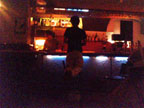
DIY Kit for Ubiquituous Computing and Free Networking
Alexei Blinov of Raylab and a group of collaborators have set out to create an exciting project, HIVE Networks, which promises to change the perception of ubiquituous or pervasive computing. HIVE combines the virtues of free software, free networks and open hardware to generate a framework for virtually any type of networked media application.
The group of independent programmers, artists and electronics specialists imagine swarms of intelligent network devices which all collaborate, facilitate media applications such as audio and video streaming and create clouds of free bandwidth using ad-hoc networking protocols.
The hardware basis currently is a customized Asus wireless hard drive. The firmware has been replaced with Linux and a cross-compilation tool kit has been developed. What this means is that any sort of application can be made to run on the cheap hardware which costs about 50 Euros a piece. For instance, a responsive environment could be built, using sensors, light, audio and video; or points of information exchange using wlan and bluetooth can be installed spread out in urban areas, because the individual units are cheap and replacable.
Blinov is keen to point out that the Asus boxes currently used are only the first step towards creating a framework for HIVE applications. The development is based on a set of key principles. The hardware has to be as cheap as possible and function according to widely used generic standards. The software has to be completely free and open source. Everything else is left to the creative imagination.
Raylab invites media practitioners to participate in application development for HIVE networks. Now that the basic toolkit has reached a phase of stability with increasing maturity, media practitioners - media activists, community groups, artists - are invited to come up with ideas for applications which Raylab will try to facilitate.
Ideally, in the next phase, this should all be done via a web based interface. The media practitioners do not have to get involved in deep technological development. All they need to do is click a few radio buttons to customize their own application which then will be compiled and installed on the device.
With HIVE Networks the traditional role, the artist who has an idea and gets a technician to develop the technical part, gets reversed. Here, creative technicians point out the future developments and offer a unique platform for artists. With HIVE ubiquituous computing takes on a new meaning. As the black box of technology is cracked open and made accessible, virtually anything is possible.
WORKSHOP: HIVE Networks - Swarms of information generating and processing devices
Friday, 09.09., 14.00 - 18.00
chip shop: application customization
Media practitioners, artists and developers are invited to share their visions of future applications for HIVE networks.
Both presentation and workshop are free. Please register if you want to participate in the workshop via email to: hive[at]kunstlabor.at
Posted by jo at 11:51 AM | Comments (0)
Aware Community Portals:
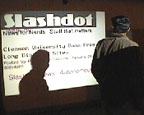
Shared Information Appliances for Transitional Spaces
People wish to maintain a level of awareness of timely information, including presence of others in the workplace and other social settings. We believe this provides better exchange, coordination and contact within a community, especially as people work in asynchronous times and distributed locations. The challenge is to develop lightweight techniques for awareness, interaction and communication using 'shared information appliances'. We have developed an exploratory responsive display projected within a shared workspace at the MIT Media Lab. The system uses visual sensing to provide relevant information while constructing traces of people's activities and shared interests over time. Such 'aware portals' may be deployed in casual workplace domains, distributed workgroups, and everyday public spaces." From Aware Community Portals: Shared Information Appliances for Transitional Spaces by Nitin Sawhney, Sean Wheeler and Chris Schmandt.
Posted by jo at 11:14 AM | Comments (0)
WatchMe
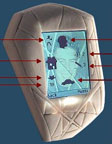
Communication Between Closely-Knit Group
WatchMe, by Natalia Marmasse, and Chris Schmandt, will be a platform for mobile communication and awareness, in the form of a watch, which addresses these limitations.
WatchMe enhances communication for a subset of people with whom we want an open channel of rich communication and for whom we want to be available. These are typically people from our "inner circle" with whom we have an established relationship, some common grounding, and a basis of trust. By sharing personal context information with our "insiders" we can enhance the instances of non co-located communication, and by providing channels of non-verbal communication we can foster more (verbal or non-verbal) communication and increase the existing sense of connectedness. The approach is to provide insiders with updated remote awareness information.
This mutual awareness serves two different purposes. First, it can strengthen the sense of presence of people we care about and may encourage further communication, besides being a form of non-verbal communication in itself. Second, it will provide insiders trying to contact us with enough information to make an informed decision regarding our availability and the most appropriate communication medium.
This project addresses mobile communication and awareness of people in a closely-knit group. It aims to enhance the telecommunication between them by providing relevant telepresence and a mobile platform facilitating various channels of verbal and non-verbal communication. Related: RealPlayer Movie; MPG Movie; UbiComp Paper (pdf).
Posted by jo at 10:08 AM | Comments (0)
August 31, 2005
Readers for "Mobtagging DisCourse" and "Triggered by RFID" at Mediamatic
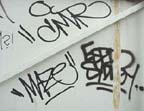
Theory, Projects, Criticism, Resources
Reader for Mobtagging DisCourse: Mobtagging is the practice of a large group of users who freely apply and exchange tags (metadata) to a set of unstructured online information. The aim is to describe content more adequately, personally or pinpoint interesting information faster than a search engine or online directories. Mob – or Social tagging can provide more precise search results for specialized interests and as such is a form of Commons Based Peer Production (CBPP).

Reader for Triggered by RFID: Radio frequency identification is a technology that is now situated in the elevator of technical development. A growing number of logistical companies see the advantages and possibilities of RFID for managing large bodies of objects. But what uses can this technology be applied to that are not in the logistical realm? How can it serve and/or change society and human interaction? How does it change the concept of information and information networks as we know them today? This reader compiles a number of resources on the technical and philosophical aspects of RFID.
Posted by jo at 07:17 AM | Comments (0)
August 30, 2005
Activated Spaces + Crawling through Network Cable
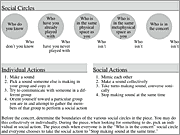
Sounding Jesse Pearlman Karlsberg
"Abstract: Successful political sound art comes in a variety of forms. Interactive sound art can upend entrenched social relations around the consumption of media. Work articulating obscured spacial or social power dynamics can provoke deep thought and discussion. Work incorporating explicit documentary material can dovetail successfully with social movements, enlivening events, and serving as a mechanism for fundraising, awareness raising, or mobilization. These different tracks can be employed, singly, or in combination to make effective political art work for a variety of settings. This thesis follows one sound artists' path through the multiplicity of potentially rewarding approaches to creating artwork with political and social themes." From Activated Spaces by Jesse Pearlman Karlsberg.
Crawling through Network Cable is a framework for group improvisation, exploring the social conditions of live distance collaboration. Musicians and video artists are in two remote locations, connected by networked computers running iChat AV or other videoconferencing software. The performers improvise responding to other performers in their own location and the remote location, paying special attention to the features of improvising with physically remote collaborators.
As source material, performers in Crawling through Network Cable should start with the physical infrastructure that connects the two locations: copper network cable, projectors, computers, routers, firewalls.
Crawling through Network Cable was composed by Jesse Pearlman Karlsberg. Musical performance at Rensselaer by Nik Kanter (keyboards), Pauline Oliveros (concertina, harmonica, goat hooves), Jesse Pearlman Karlsberg (laptop). Musical performance at Wesleyan by Dave Kadden (oboe), Angela Opell (clarinet), Anne Rhodes (voice). Live video by Kathy High and Caterina De Re at Rensselaer and Will Swofford at Wesleyan.
A score for structured improvisation for video artists and musicians in two locations, connected by networked computers running videoconferencing software. View the performance score (PDF). Audio and video from Crawling through Network Cable will be posted in Fall 2005.
Posted by jo at 09:22 AM | Comments (0)
GARY DUSCHL
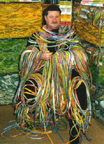
GUINNESS WORLD RECORD GUM WRAPPER CHAIN
The Gum Wrapper Chain is currently--as of AUGUST 11, 2005--1,096,015 WRAPPERS, 46,861 FEET. About the Chain: Began on March 11, 1965; $53,833 Worth of Gum; Weight 633 lbs. or 286 kgs; Volume 54 Cubic Feet; WRIGLEY Wrappers only. Relative Lengths: 8.72 Miles or 14 kms; 153 Football Fields; 230 Hockey Rinks; 25 CN Towers; 31 Empire State Buildings; 2 Rounds of Golf; 3 Hours to Walk the Length; 8 Minutes by Car at 65 mph.
Save, sign and send me your gum wrappers and I will ensure that these wrappers become part of this world record gum wrapper chain. Include your email address so that I can let you know where they appear on the chain. Send your wrappers to: Gary Duschl, Box 65464, Virginia Beach, Virginia USA, 23467.
Posted by jo at 07:08 AM | Comments (0)
August 24, 2005
Foo Camp, Bar Camp: smartmobbing ftf meetings

Smart Mobs and the Power of the Mobile Many, Technologies of Cooperation
Open Space Technology is a simple methodology for enabling people to create their own agendas at meetings and conferences. Tim O'Reilly created a version of an open-space conference for invited participants, Foo Camp, and Ross Mayfield describes an open-to-all event, Bar Camp. Combining wikis with Open Space methods is an increasingly popular way to smartmob face-to-face gatherings:
When someone walked in the door, 300 people perhaps in total, over 100 at peak, usually Kit would be there to guide them. People insisted on handing out cash and it would make it's way to the guy with the PayPal account (Chris). A collective sense of who was doing what was achieved before the event in a lively IRC channel (remember Happenings?). If you had an idea, like a sponsored sub-party, it could simply get done.
BarCamp EntranceBarCamp happened where it did because of location awareness. About a week before, after we moved into the neighborhood, I met the Flock guys (knew Termie only through time based media) through Plazes. We chatted a bit. Then I got pinged with this crazy ass idea asking if I had suggestions for space and bandwidth. A wiki was thrown up, the rest is increasingly well recorded history. [Posted by Howard on Smart Mobs]
Posted by jo at 10:59 AM | Comments (0)
August 22, 2005
Ambient Computing and the Disappearing Computer

Dynamic Information Clouds in a Hybrid World
"ABSTRACT: There are three parts of my presentation. It starts with a review of (a) previously developed concept of cooperative buildings and Roomware® components as a new approach for designing the work environments of the future and its first example i-LAND. This is followed by presenting the EU-funded proactive intiative "The Disappearing Computer" (DC), a cluster of 17 related projects designing new people-friendly environments in which the "computer-as-we-know-it" has no role. Finally, a specific example of DC-intiative is presented, the project "Ambient Agoras: Dynamic Information Clouds in a Hybrid World." Here, we move beyond the more productivity-oriented support as, e.g., in i-LAND to a more experience oriented approach communicating atmospheres of social architectural spaces. Ambient Agoras aims at transforming places into social marketplaces ('agoras') of ideas and information, providing situated services, and feeling of the place ('genius loci') via a combination of ambient displays and mobile devices." From Ambient Computing and the Disappearing Computer by Norbert A. Streitz.
Posted by jo at 11:16 AM | Comments (0)
August 19, 2005
Platial
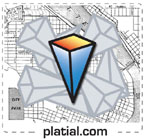
space place is the place!
Platial is a rapidly developing application and community pivoting on the anchors of user annotation, layerability, collaborative mapping, social networking and real world publishing. We are a team of 3 based in Portland, Oregon: di-ann eisnor, jason wilson and jacob olsen; getting advice from many great people, including clay shirky, anselm hook and arturo duran.We'd love to hear from you.
Want to be notified when we actually have something to play with? Join the list.
Posted by jo at 10:04 AM | Comments (0)
August 18, 2005
Psychnology

How Space Affords Socio-Cognitive Processes during Collaboration
"ABSTRACT: This paper reviews the literature about social and cognitive functions of spatial features used when collaborating in both physical and virtual settings. Those concepts come from various fields like social, cognitive as well as environmental psychology or CSCW (Computer Supported Collaborative Work). We briefly summarize the social and cognitive affordances of spatial features like distance, proxemics, co-presence, visibility or activity in the context of physical and virtual space. This review aims at grounding in an explicit framework the way human beings use space to support social interactions. This review can be used as a starting point to design efficient applications that take spatial context into account." From A Review of How Space Affords Socio-Cognitive Processes during Collaboration by Nicolas Nova, Space, Place & Technology: Presence in Mediated Experiences (#2),
Psychnology.
Posted by jo at 06:49 PM | Comments (0)
August 10, 2005
Personal, Portable, Pedestrian:
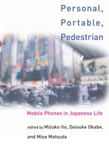
Mobile Phones in Japanese Life
The Japanese term for mobile phone, keitai (roughly translated as "something you carry with you"), evokes not technical capability or freedom of movement but intimacy and portability, defining a personal accessory that allows constant social connection. Japan's enthusiastic engagement with mobile technology has become -- along with anime, manga, and sushi -- part of its trendsetting popular culture. Personal, Portable, Pedestrian, the first book-length English-language treatment of mobile communication use in Japan, covers the transformation of keitai from business tool to personal device for communication and play.
The essays in this groundbreaking collection document the emergence, incorporation, and domestication of mobile communications in a wide range of social practices and institutions. The book first considers the social, cultural, and historical context of keitai development, including its beginnings in youth pager use in the early 1990s.
It then discusses the virtually seamless integration of keitai use into everyday life, contrasting it to the more escapist character of Internet use on the PC. Other essays suggest that the use of mobile communication reinforces ties between close friends and family, producing "tele-cocooning" by tight-knit social groups. The book also discusses mobile phone manners and examines keitai use by copier technicians, multitasking housewives, and school children. Personal, Portable, Pedestrian describes a mobile universe in which networked relations are a pervasive and persistent fixture of everyday life.
About the Author: Mizuko Ito is Research Scientist at the Annenberg Center for Communication, University of Southern California, Los Angeles. Daisuke Okabe is Lecturer at the Graduate School of Media and Governance, Keio University, Shonan Fujisawa Campus, Japan. Misa Matsuda is Assistant Professor of Sociology at Chuo University, Tokyo. Mimi posted a draft of the intro chapter as well as the table of contents [via apophenia]
Posted by jo at 09:45 AM | Comments (0)
Netznetz
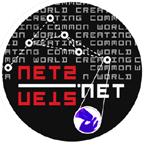
Encouraging Project-Based Collaborations
Vienna net.art community to distribute its own grants using social software Former BB guestblogger Johannes Grenzfurthner reports on an unusual development in how the Vienna government funds net.art/culture projects. The Commissioner For The Arts, a member of Vienna's Social Democratic Party, is supporting a consortium of more than 100 net.art groups, called Netznetz, in the development of a reputation-based software system that the group will then use to help decide how to distribute the grant money it receives from the government. From Johannes's post at the monochrom blog:
The new funding system strives for guaranteed and dispersed distribution of funding in the sector while the parameters of the distribution are meant to remain flexible, providing a dynamic scope. The aim is to encourage project-based collaborations by distributing various smaller grants. Therefore, everybody who is involved in the sector is subject to the principle of permanent reconfiguration of the system and the network...
The beneficiaries of the so-called 'network grants', a yearly spending account for approximately 20 groups, is to be evaluated with the aid of a social software tool -- a reputation system currently under development. Even before it has been coded, criticism as well as scepticism and fear start pouring into the media sphere. While even computer veterans criticise the alleged blind trust in a 'computer program', so-called left circles brand it as 'too neo-liberal' as the structure strives for 'collaboration instead of institution'.
netznetz is preparing a protoype in the course of a programming 'sprint' this week and is inviting international experts for an upcoming symposium in autumn 2005 in Vienna. [posted by David Pescovitz on boingboing]
Posted by jo at 09:30 AM | Comments (0)
August 09, 2005
In Memory of Franz Feigl
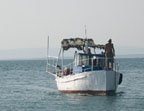
The Myth of Bolshevik
Network activists and friends of the medien.KUNSTLABOR want to travel by boat from Amsterdam to the Black Sea. Final destination of the journey is the island St. Anastasia, formerly known as Bolshevik (1945 - 1990). The boat is named after Franz Feigl, an Austrian artist and network activist who lived in Amsterdam and died in 2001 at a young age.
The boat will record on its journey all open wireless lan access points. This activity, if conducted by car, is called war-driving. The peaceful goals of the Motorship Franz Feigl aim at highlighting the possibility of opening up networks and creating a free infrastructure (see Funkfeuer, Freifunk,
Consume).
The boat will also communicate via packet radio and pictures will regularly be sent by GPRS to http://stroem.ung.at. MS Franz Feigl has already travelled from Amsterdam via Linz to Vienna. In Linz at the wharf of the Times Up collective repair work on the boat was done. It has travelled safely from Linz to Vienna under captainship of Franz Xaver.
Tomorrow, Wednesday August 9, the MS Franz Feigl is due to leave for Bratislava, where it will arrive om Thursday or Friday. On Monday, August 15, it will arrive in Budapest.
The project is carried out in collaboration with 05-trov and mobil.KUNSTLABOR.at
SMS Kontakt: 00436764902223
Chat: irc.kunstlabor.at#kunstlabor
E-mail:boot[at]kunstlabor.at
[via netbehaviour]
Posted by jo at 12:35 PM | Comments (0)
August 07, 2005
Sim Civics
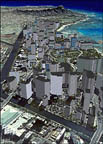
Public Participation in Regional Planning
Sim Civics by Jeff MacIntyre, The Boston Globe, August 7, 2005: New game-like computer software is empowering ordinary citizens to help design better cities. Can the professionals and the public learn to play well together?
[Image: SIM ISLAND--This 3-D image of Honolulu was created using GIS software from the company ERSI, as part of Honolulu's six-year planning initiative. (Courtesy of ESRI/City of Honolulu).]
"FIFTEEN YEARS AGO, the future of urban planning arrived in the form of a wonkish but strangely addictive new computer game. In SimCity, a player assumed the twin roles of mayor and city planner, creating elaborate cityscapes, managing zoning, transportation, and growth, while fighting off poverty, crime, traffic, and pollution..."SimCity...has probably introduced more people to urban planning than any book ever has."...Today, a new generation of GIS applications, known as ''scenario planning" or ''decision support" tools--which allow users to visualize, project, and manipulate a wealth of environmental data--have made citizens into major players in the gaming of urban futures. Across the United States...these tools are enabling an unprecedented level of public participation in broad regional planning initiatives..."
Posted by jo at 09:26 AM | Comments (0)
August 04, 2005
Virtual Playa Project
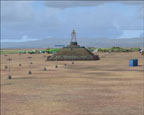
Burningman Cybercamps
The VIRTUAL PLAYA PROJECT is a navigable 3d digital Burningman environment using Microsoft Flight Simulator as a platform. It is intended to be an open-ended project that invites participation at various levels. It can be downloaded for home use; played on a giant screen at a Burningman event, or even be used as a design tool for a theme camp or artist wishing to plan an installation before it ever gets to Black Rock City.
The ultimate wish for the project however, is for the Virtual Playa to be the Burningman Cyber Regional. Using multi player technology, it can become a portal through which we can meet on line, and share experience with other cyber burners from anywhere in the world in real time. This takes the project from just being a cool piece of collaborative digital art, to a true meeting place for the cyber-tribe. Download it for free, copy it, send it to pals, leave it on buses, give it away as a gift.....spread the word.
Posted by jo at 07:01 PM | Comments (0)
August 03, 2005
Pico-Peering

Building the Community Wireless Uber-Network
Imagine a wireless network stretching from Kladno to Buenos Aires; from London to Johannesburg; from Urbana-Champaign to Sydney; to more and more places around the globe. Beginning in 2000, a group of dedicated community wireless developers sat down to figure out a way for a heterogeneous group of Community Wireless Networks to cooperate and affiliate. FreeNetworks.org has led the way — crafting a simple, accessible, 1-page “Pico Peering” agreement that any free network can adopt. I bring this up, not because it’s a new idea (in fact, it’s been pondered, discussed, revised, and refined over multiple years), but because it offers an opportunity for the myriad wireless networks to collaborate. [via MuniWireless]
Posted by jo at 01:02 PM | Comments (0)
August 01, 2005
R*Emote Mirror
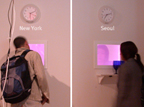
Hole in Space Update
R*Emote Mirror--by Yeonju Shim--is a pair of networked interactive lighting installations that creates communication between isolated people in urban cities and their loved ones who live far away. The telepresence installation re-creates feelings of togetherness and physically connected interaction between distances and spaces, allowing each person to interact through the expression of his or her movement. r*Emote Mirror has two functions: one is a mirror, and the other is interactive color lighting. Each r*Emote Mirror will have an initialized color representing the user, and trigger the movement of the person with different colors. When two persons stand at the same position in front of their installations, r*Emote mirror makes them see color changing and blending of their individual colors.
If you are living in Seoul and are close to the mirror, you can see your own shape on the panel in red light. At the same time, your friend living in new york can see your red color on his or her panel at home. if your friend is close to the panel, s/he can see his or her own body shape as blue light. If you are both in front of each mirror, the overlapping of color will hopefully evoke feeling of togetherness. For instance, if red overlaps with blue, it makes purple. [blogged by Regine on we-make-money-not]
Posted by jo at 11:35 AM | Comments (0)
Ruccas.org
![]()
As Good as the Community Makes It
Today, Ruccas.org celebrates the end of its first year of operation, and the start of the next. A year ago, ruccas.org launched with a handful of artists. Today, it features the works of over seventy artists and collaborative projects, nearly all of which are available under a Creative Commons license.
Its growth and success are due entirely to the community, who have taken advantage of how easy it is to add their own page and share their work with one of the largest online audiences for unconventional electronic art. Ruccas.org's allowing of anyone to edit the site and add their own pages, as well as its offering of free hosting for aural, visual, and software art, has enabled this to happen. The ruccas.org philosophy is that the best way to create a site of this type is to give the community as much control as possible, and artists from all around the world have stepped up and proven that our philosophy is correct.
In the coming year, I personally hope that the site will continue to grow at the rapid rate it has been. Ruccas.org is a unique hub in the sense that is it only as good as the community makes it. Therefore, I urge all of you out there who are are trying to do something "new" to come share your artwork with us, and to encourage others to do the same. I know that I speak for the entire ruccas.org community when I say that we're looking forward to the next year of new additions, new directions for the site, and new community members.
- John Nowak, Ruccas.org
Posted by jo at 08:20 AM | Comments (0)
July 27, 2005
Social Machines

Continuous Computing
"...After a decade of hype about "mobility," personal computing has finally and irreversibly cut its bonds to the desktop and has moved into devices we can carry everywhere. We're using this newly portable computing power to connect with others in ways no one predicted--and we won't be easily parted from our new tools...
There is something different about the latest tools. They are both digital, rooted in the world of electrons and bits, and fundamentally social, built to enable new kinds of interactions among people. Blogging, text messaging, photo sharing, and Web surfing from a smart phone are just the earliest examples. Almost below our mental radar, these technologies are ushering us into a world of what could be called continuous computing--continuous in the usual sense of "uninterrupted," but also in the sense that it's continuous with our lives, in all their messy, social, biographical richness..." From Social Machines by Wade Roush, Technology Review, August 2005.
Posted by jo at 11:01 AM | Comments (0)
July 18, 2005
Talkaoke

Streamed, Spontaneous Chat with Real People!
Talkaoke consists of a doughnut shaped mobile table, hosted by a man in the middle with a microphone. Up to twelve people can sit around the table. Talkaoke is an active means of participation that is totally dependent on the context in which it is performed. There is no fixed agenda or expected outcome. Conversations are recorded for the on-line archive and can be webcast live. The people speak at Talkaoke.
Talkaoke is the brainchild of artist Michael (Mikey) Weinkove. Mikey had been working on video installations and live pieces constucting real and fictitious conversations. These were shown in UK and European galleries. In January 1997 Mikey was invited to create a one off performance at the Hydra Club, a live art club in London's East End. Mikey created Talkaoke, which was a scaled down version of a performance called "It's your shout!"
This was a previous performance with 100 invited people attending a forum with audience driven subjects and discussion. The Talkaoke format was so popular that it soon became a regular feature at Hydra.
In 1998 Talkaoke became part of the Duckie crew at their then upmarket Friday night West End club, Duckie Dancehall, where Denise joins the Talkaoke crew. Talkaoke became part of the furniture there too, and by spring Talkaoke had chewed the fat at a few of london's more leftfield clubs. In August Talkaoke did it's first festival gig at Summer Rites, a gay and lesbian festival in Brockwell Park. It was crazy stuff.
chat is the new rock n' roll
By the end of the year the Talkaoke team had given up fighting the deafening noise, late nights and intoxication of the clubs and began experimenting with a series of Talkaoke-with-accompanying-DJ-type events. The first was in winter '98 with a shortlived sunday residency at the Bug Bar, then in 99 at the Shoreditch Electricity Showrooms and the Crowbar. '99 saw Talkaoke at a number of underground parties too.
Although Talkaoke has had a website since '98 it was only when James Stevens of Radiospace witnessed Talkaoke at a party that the webcasting potential of Talkaoke was realised. The first Talkaoke streamed live by Radiospace was in April 2000 from Coffee@ Brick Lane. Webcasting rapidly became a successful Talkaoke feature. Talkaoke was invited by the Pleasance Theatre to perform at the Edinburgh Fringe Festival, where all the gigs were webcast.
like a chat room but in real life
This was the beginning of the format we see in public Talkaokes today with many behind the scenes technical developments: 2 mics, speakers in a battery powered table, video projection, web streaming, Djs providing background music. Talkaoke is seen mostly at festivals and the studio sunday sessions but who knows where we will be invited next?
Posted by jo at 08:45 AM | Comments (0)
July 13, 2005
FLORA
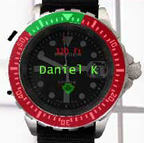
Location-Aware Watch
The FLORA (Fluorescent Light Organizing Radio Accessory), by Daniel Kantor, is a location-aware watch that helps people locate others, a mixture of a compass and the game "Hot and Cold".
When set on the Watch Mode, the FLORA displays time and date, like any other watch. To select which buddy to track, activate the Buddy Mode. The FLORA then dims the watch features and displays the name of the closest buddy to you. Once the buddy is selected, the Track Mode will change the face to red and green with green indicating the direction of the buddy being tracked. The buddy's distance will be displayed in feet. If the buddy is located in a different floor in mall a direction arrow will indicate which direction your friend is (up or down). [blogge by Regine on we-make-money-not]
Posted by jo at 08:22 AM | Comments (0)
July 11, 2005
YOU-WHO

Bluetooth Enabled Social Networking Game
YOU-WHO is a social game for mobile phones that makes use of the personal area networks created by Bluetooth technology to allow players to connect, play with, and meet new people.
The game can be played in any public space where people tend to linger, such as a train station, airport, café or bar. With these varied public settings, the chances are that every time you play, it will be with a completely different person, and result in a unique game experience. Here is a PDF and a walkthrough on how YOU-WHO works. [blogged by Gerrit Visser on Smart Mobs]
Posted by jo at 09:01 AM | Comments (0)
July 06, 2005
PlaceSite:
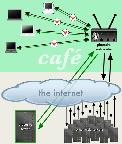
Breaking the social barrier between Wi-Fi and cafe society?
Occasional smartmoblogger and flashmob namer Sean Savage has unveiled his project, an attempt to break the barriers between Wi-Fiers and more convivial cafe society. Wired News covers the story:
"Sean Savage wants to hook you up by tearing you away from the internet.
The one-time promoter of flash mobs is once again waging battle against digital alienation with a new tool aimed at getting Wi-Fi cafe "zombies" to look up and smell the coffee. The problem: Computers are fabulous at connecting people over a long distance, but they can become a wall between people who are sitting right next to each other.
At the O'Reilly Where 2.0 conference in San Francisco last week, Savage announced his latest project, PlaceSite, which combines online social networking with real-life networking in Wi-Fi cafes by providing computer users with a website unique to a particular Wi-Fi cafe.
"We thought about what if you could use technology to reduce the zombie effect or to promote (people) to be more conscious and less alienated from their neighbors," Savage said." [blogged by Howard on Smart Mobs]
Posted by jo at 12:50 PM | Comments (0)
July 05, 2005
APCompass
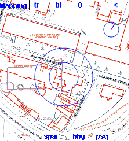
Pioneering and Exploration
APCompass, by David Wiltshire, is the prototype application of the gpsMiddleware platform. It uses GPS technologies integrated with a community maintained database to allow people to explore their local wireless networks. There is an emphasis on pioneering and exploration as users seek out new nodes to extend the database. The project considers issues of privacy, by ensuring every action performed by the user is broadcasted to a central server for anyone to see. Drawing on David Brin's idea of a ‘Transparent Society' APCompass encourages collaboration and accountability as users appreciate the fact that their actions are being constantly monitored.
gpsMiddleware is a custom built C++ application developed explicitly for providing a link between a palmtop computer and a global positioning system. The underlying software is available for download and adaptation for members of the community, so that it can be used as a basis for developing a range of creative applications. [via we-make-money-not]
Posted by jo at 07:49 AM | Comments (0)
Urban/Social Tapestries
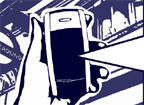
Final Reports
Proboscis has recently released the final reports on the Urban Tapestries project. You can order them here. ]The reports are free for private use by individuals, academics and non-profit organisations in the arts and civil society sectors.]
Urban Tapestries: Public Authoring, Place and Mobility A Proboscis White Paper by Giles Lane & Sarah Thelwall: This white paper presents our vision for public authoring and our conclusions on its relationships to place and mobility. We argue for design solutions to focus on actual people in real world contexts and situations, offer insights from the public trials of our prototypes and set out Proboscis’ own future vision and research agenda. Finally we recommend a series of policy proposals for realising a public knowledge commons, structured around place.
Urban Tapestries: Project Report
A Proboscis Report by Giles Lane & Sarah Thelwall
This report gives a chronological account of the development of the project and provides detail of and context for the key issues that arose over its two year span. In describing the activities and outcomes of the project it also connects the completion of Urban Tapestries to the research brief for Social Tapestries, a follow on research programme. A summary of the outputs, press coverage, some statistics and project credits are listed at the end of the report.
Urban Tapestries: Observations and Analysis
A Proboscis Report by Giles Lane, Alice Angus, Victoria Peckett & Nick West
This document presents the observations and qualitative evaluation of participant activity and feedback from the bodystorming experiences, the public trial of December 2003 and the field trial of June/July 2004.
Complimentary copies are available for affiliates, project funders and partners. Commercial organisations, government departments and government agencies are requested to purchase reports – bound copies will be posted to the billing address.
Posted by jo at 07:32 AM | Comments (0)
July 04, 2005
DigiDress

Peaking in Public
DigiDress--by Per Persson, Younghee Jung, Jan Blom, Ionific--is a matchmaking system that allows colocated people to be aware of potential partners in their vicinity. In an encounter between spatially proximate people, how can information in digital realm support and augment existing social behavior, practices and experiences taking place in real space?
The DigiDress application allowed mobile users to create a page on their phone with text and imagery describing themselves, their interests, dreams, things they are proud of, favorite jokes or any other content. Pages were then viewable by other users within Bluetooth range (typically 10-20m), without the page owner’s explicit consent. In this way, DigiDress users could take a ‘peak view’ at others without revealing their identity, similar to peaking at non-acquainted people in public spaces.
Posted by jo at 07:00 AM | Comments (0)
June 30, 2005
Foundcity
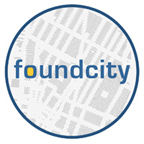
The Dynamic Nature of Place and Space
From The Feature: "...many projects have approached the idea of annotating space before but few have succeeded as well as FoundCity in giving this networked effort a more personal quality. By overlaying the perspectives of thousands of people, FoundCity approaches the dynamic nature of place and space."
Foundcity--by John Geraci, Christina Ray, and John Schimmel--is a social mapping tool for creating a personalized map of your life on-the-fly. Using your mobile phone, you "tag" or capture photos throughout the day, label them with any words you want, and send them to your map. At home, you access and customize your map, which you can share with friends, keep private, or publish openly. As a visitor to the Foundcity site, you view a map of all tags and connect with the people and places that share your interests. By plugging in to the network of Foundcity users, you learn what others value in the city as you surf their hotspots. By publishing your own tags, you share what you know about your city.
Posted by jo at 10:35 AM | Comments (0)
June 27, 2005
NEIGHBOURHOOD GAMES
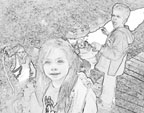
Transcending Existing the Boundaries
So what happens when kids come to the end of the level on their gameboys - what if they don't even have Gameboy? What is the fascination in sitting around in the park all evening? What is the most daring place you have seen tagged? Who decides when the game starts... and when it's over? What does a neighbourhood mean?
Neighbourhood Games--by John Paul Bichard--sets out to explore the possibilities of introducing cross-media games into the everyday neighbourhood environment, to propose ways in which games can be meaningfully structured across a broad range of channels, including fixed and mobile digital spaces and the "real" environment of the local neighbourhood.
Neighbourhood Games looks at ways in which gameplay normally associated with digital frameworks can be organised and played with or without these technologies. Key to this are not only the motivations and rewards a game sets up but also the nature of that gameplay in relation to environment, the aspirations of the game players and the existing social organisation in a particular locale.
The aim is to explore games methodologies that have the potential to enable a range of players to engage in play scenarios that are situated in the everyday environment and how far these are able to transcend existing the neighbourhood 'boundaries'.
Posted by jo at 12:47 PM | Comments (0)
June 20, 2005
I Connect Therefore I Am:
![]()
Connectivity and Networking
"The notion of connection refers to both metaphorical and material practices informing our understandings of the flows of energy and information within human bodies, communities, geographies, and technological networks. Cranny-Francis offers a definition of connection which accounts for the term's significance in the contexts of both Cultural Studies and multimedia literacy:
It refers to the ways in which texts generate meanings through their relationship with other texts, to the development of multimedia technologies that are characterized by their connectivity (the web, the net), and to the ways in which meanings are generated crucially by the connection between texts and their users. (Cranny-Francis, forthcoming)" From I Connect Therefore I Am: Connectivity and Networking in Bodies, Technologies, Communities, and Selves by Anthony Lambert [via]
Posted by jo at 10:03 AM | Comments (0)
June 14, 2005
The Social Fabric
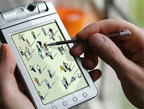
Your Social World
The Social Fabric, by Steven Blyth, is a representation of your social world, displayed as a single visual array on your mobile phone. It keeps you informed about which relationships are prospering, which you have neglected, and the overall state of your social fabric.
A series of avatars on your phone screen represent your friends, acquaintances or relatives. The frequency of all digital communications (they can include voice calls, voice Messages, SMS, MMS, e-mail, Instant Messaging, VoIP, etc.) between you and each person, which the system monitors, determines that avatar's posture: an alert stance indicates frequent recent contact, for example; a lethargic posture or turned back means neglect. You can also register non-digital contacts manually.
The avatars can be grouped manually according to sentiment, category, and so on, or programmed to begin clustering together before an upcoming event: your family before a birthday, or friends before a poker night, for example. Related: Gori. node garden. [blogged by Regine on near near future]
Posted by jo at 07:48 AM | Comments (0)
June 13, 2005
Social Tapestries
![]()
Public Forum, 1st July 2005
Proboscis will be holding a half-day public forum on the Social Tapestries research programme hosted at the Stanhope Centre for Communications Policy Research on Friday July 1st 2005 1-6pm. The event will bring together practitioners from the arts, industry, government, civil society organisations and academia to review the work underway for Social Tapestries and stimulate public debate on the issues.
This event is a pre-competitive forum for the free exchange and flow of ideas intended to generate opportunities for dynamic partnerships that find common ground between artists, culture organisations, civil society organisations, academia, government and public agencies, business and industry. To book a place please complete the online form. Places are limited to maximum of 70. [blogged by on giles on urban tapestries]
Posted by jo at 10:34 AM | Comments (0)
June 07, 2005
Invisible Villages: Technolocalism and Community Renewal

The Public Realm and Decentralised Power
"...The ideological battles of the 1970s, '80s and '90s not only positioned 'public' and 'private' as mutually exclusive, but often as adversaries to one another. Similarly, the liberal ideal of equality through fairness seems equally difficult to uphold unless fundamentally organised around a single and centralised law-issuing body. Three hundred and fifty years on, it is difficult to conceive of a philosophical replacement for Thomas Hobbes's original vision of the modern state in which its legitimacy resides, at least in part, in its incontestability (Hobbes, 1996). How can a society be fair if there are competing centres of power, with potentially incommensurable notions of fairness? How can there be multiple sources of authority, and multiple public spheres, without that risking a ghettoisation of civil society?..." From Invisible Villages: Technolocalism and Community Renewal by William Davies and James Crabtree, Renewal, Vol. 12 No1 2004.
Posted by jo at 12:21 PM | Comments (0)
June 03, 2005
Technologies of Cooperation: A Map To a Toolkit
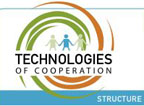
Tools to Alleviate Suffering...Liberate...Create
"What we are witnessing today is the acceleration of a trend that has been building for thousands of years. When technologies like alphabets and Internets amplify the right cognitive or social capabilities, old trends take new twists and people build things that never could be built before. Over time, the number of people engaged in producing new things has grown from an elite group to a significant portion of the population; at the same time, the tools available to these growing populations have grown more powerful.
Today's technologies of cooperation are practical tools for organizing people and solving problems that we face right now. But they are also harbingers of new forms of social and economic organization -- forms that may help resolve some of the complex social dilemmas that confront the world. So each example of a cooperative technology is also a model for thinking about future social forms as well as future tools; each example embodies principles that can help us think more strategically." From Technologies of Cooperation: A Map To a Toolkit by Howard Rheingold, theFeature, Jun 02, 2005.
Posted by jo at 01:50 PM | Comments (0)
May 30, 2005
perform your role

information technology for everybody else
The Incommunicado 05 Conference has grown out of the internet forum of the same name to explore accountability and representation in an emerging global info-politics negotiated in terms of corporate accountability, state transformation, and the role of an international civil society in the creation of a new world information order. The working conference will start mapping some of the faultlines of such a politics, and it will do so by engaging people from different info-political backgrounds in a collaborative exploration of concepts and strategies.
The conference explores the shifting definition of the digital divide, NGO's, stakeholders, multinationals, borders, governance, open source, intellectual property, and more.
Organized by the Institute of Network Cultures (Amsterdam) together with Waag Society (Amsterdam) and the New Media Centre Sarai (Delhi), with support from HIVOS, IICD, and the Netherlands Ministry of Foreign Affairs.
Posted by michelle at 04:17 PM | Comments (0)

